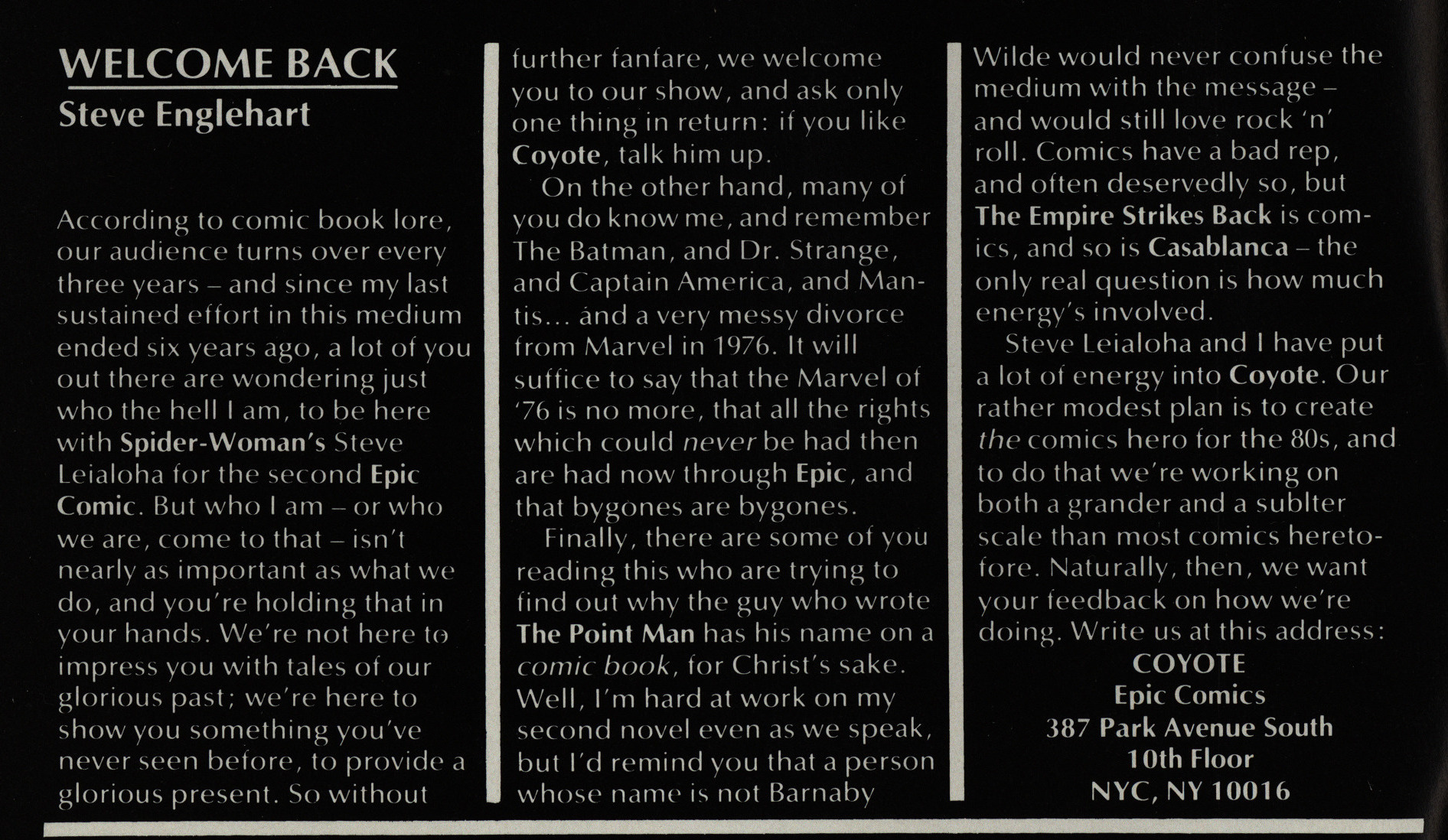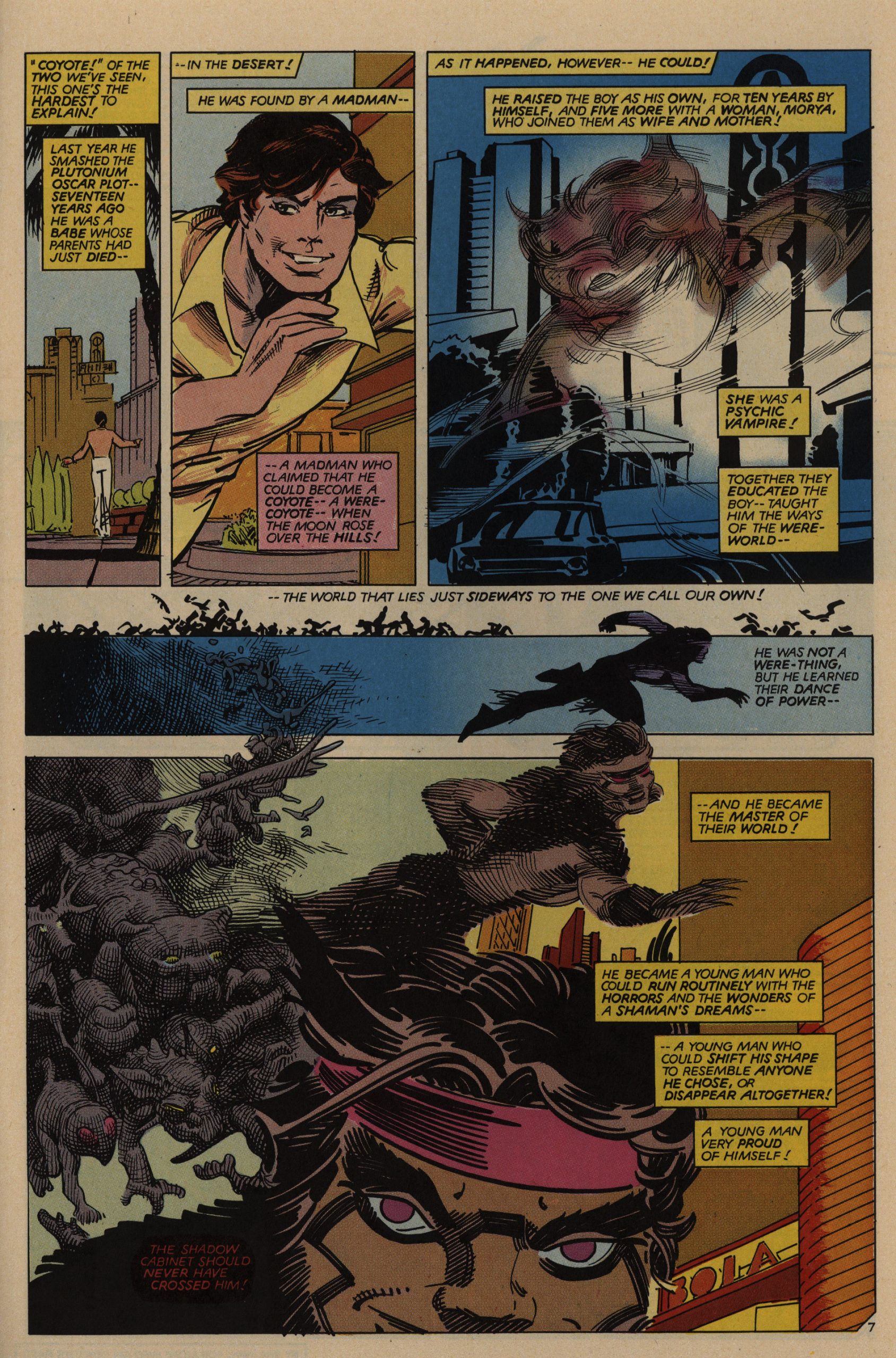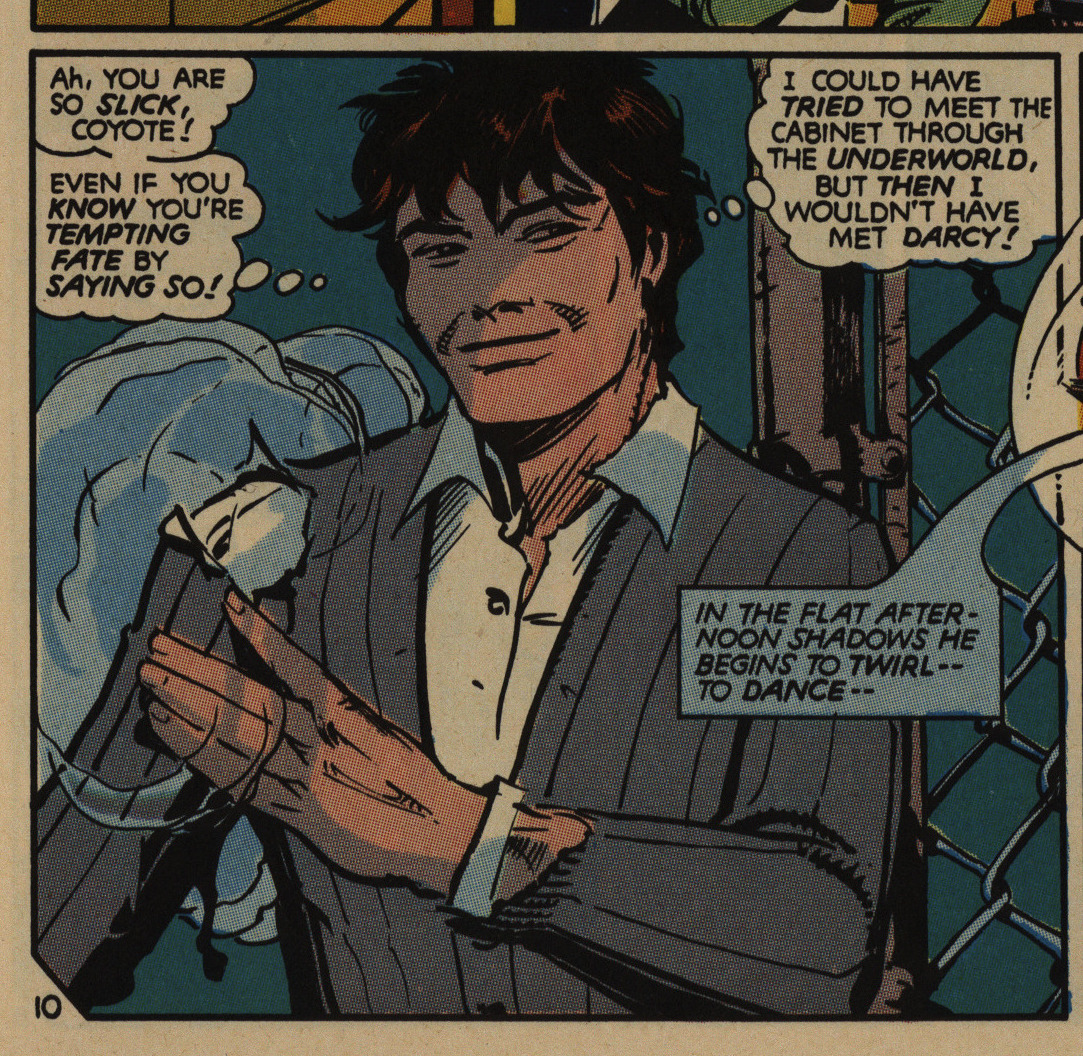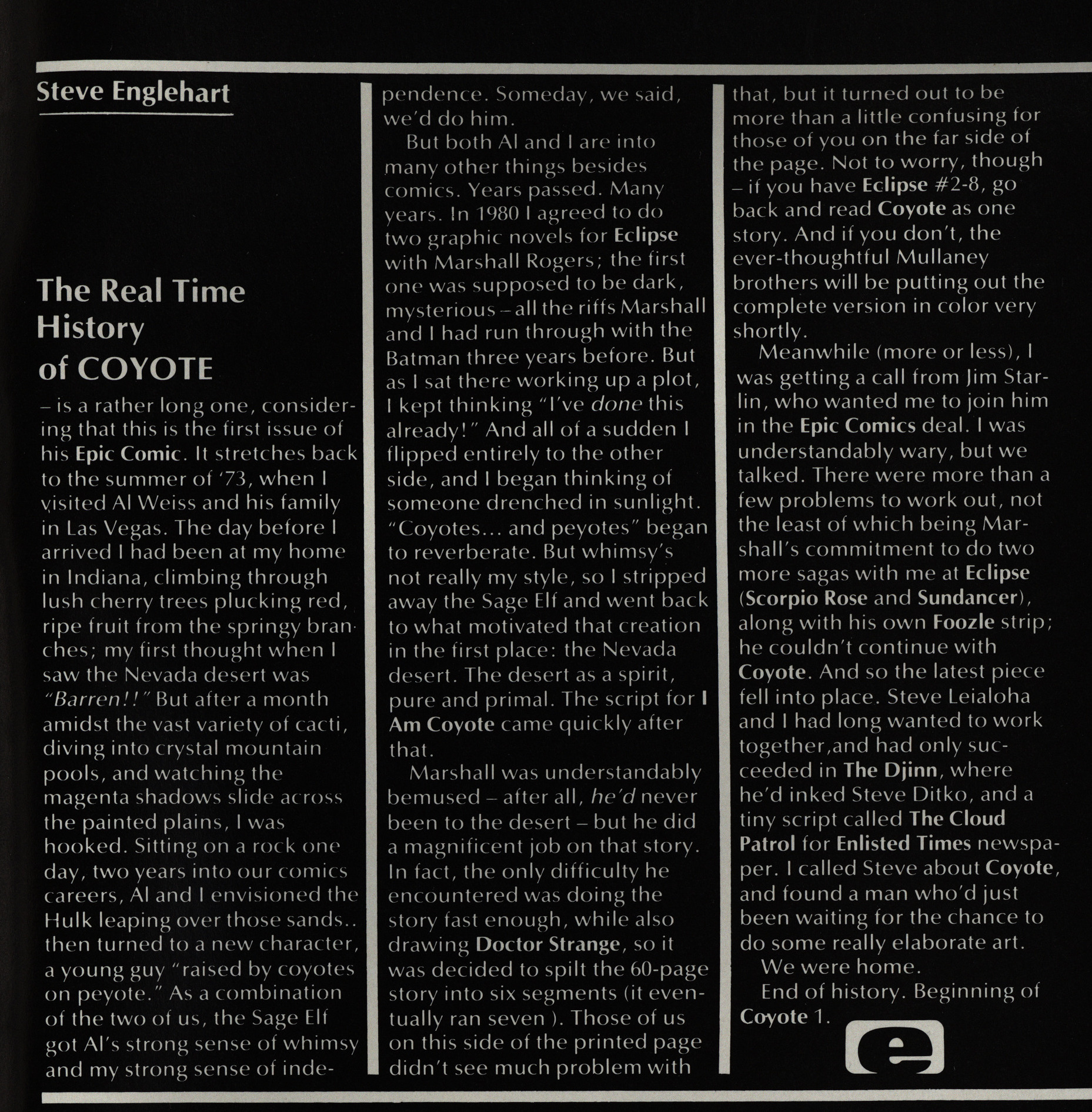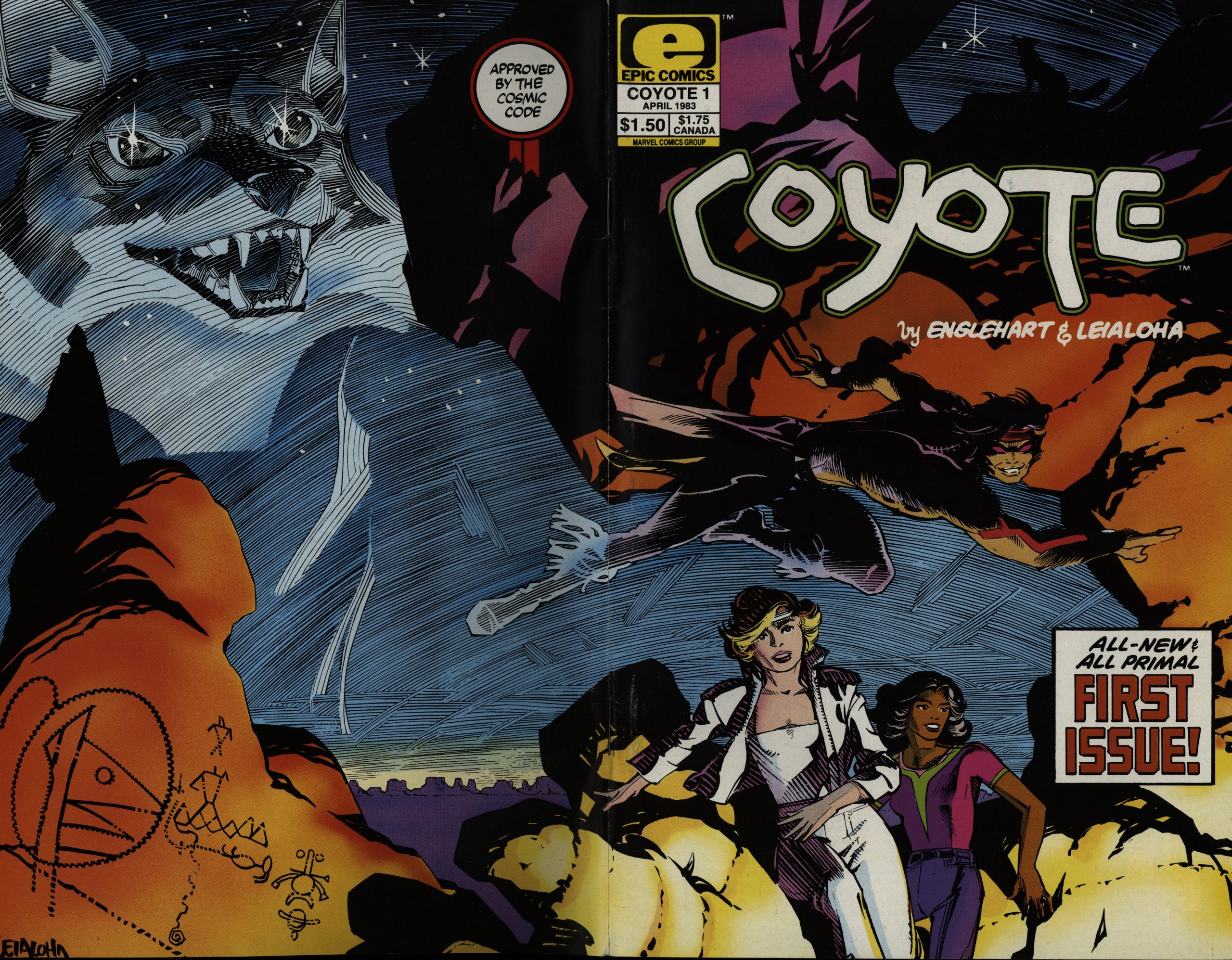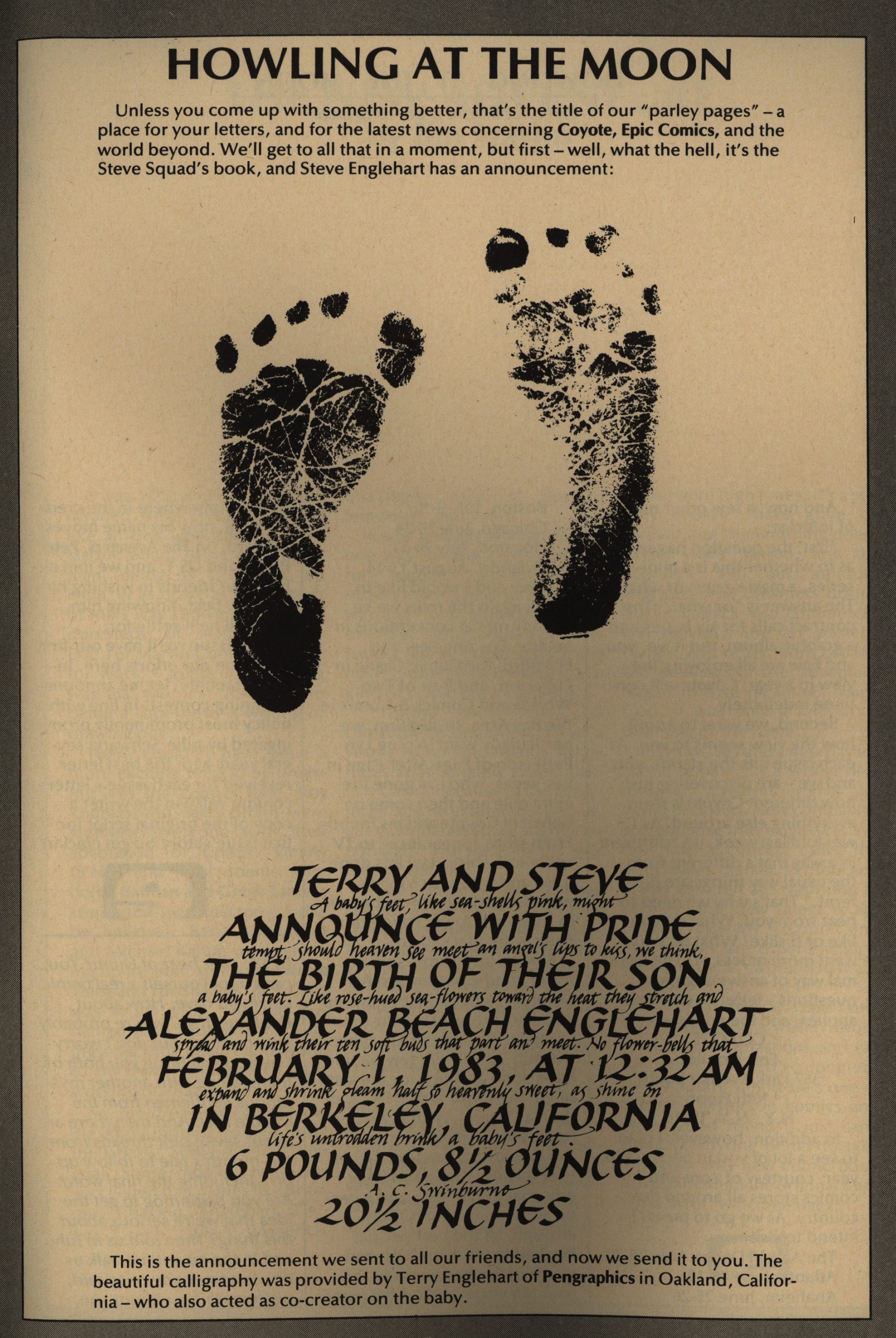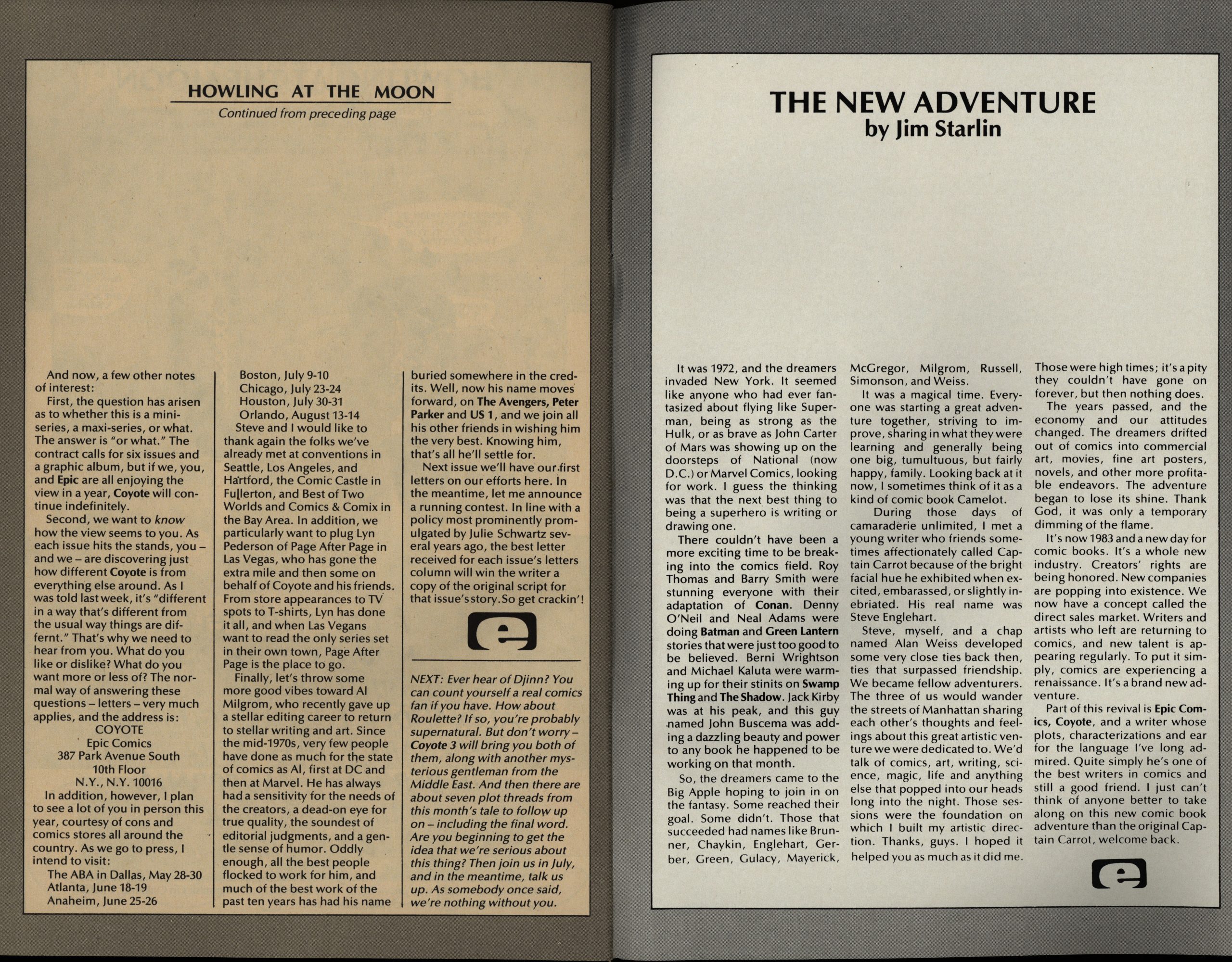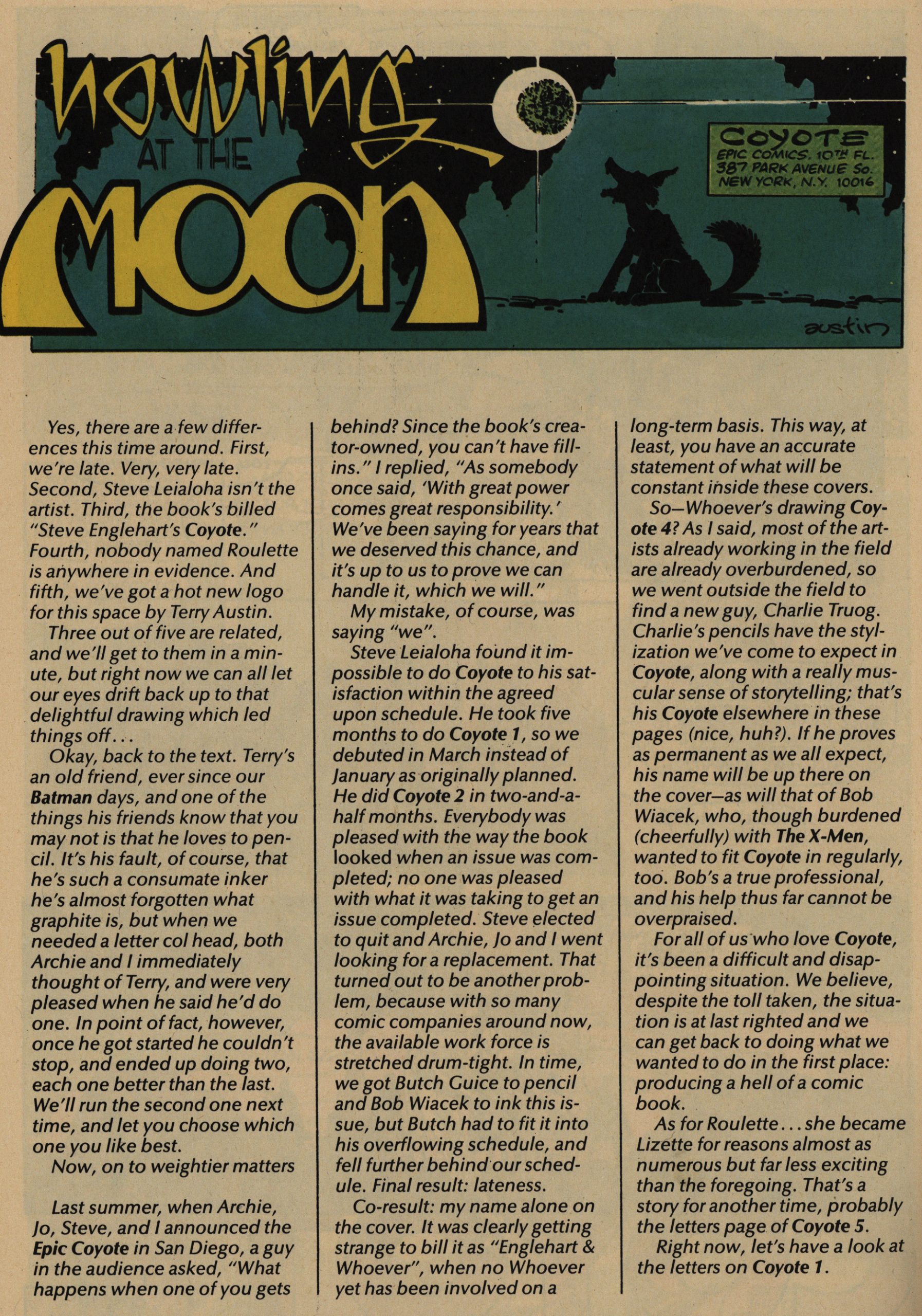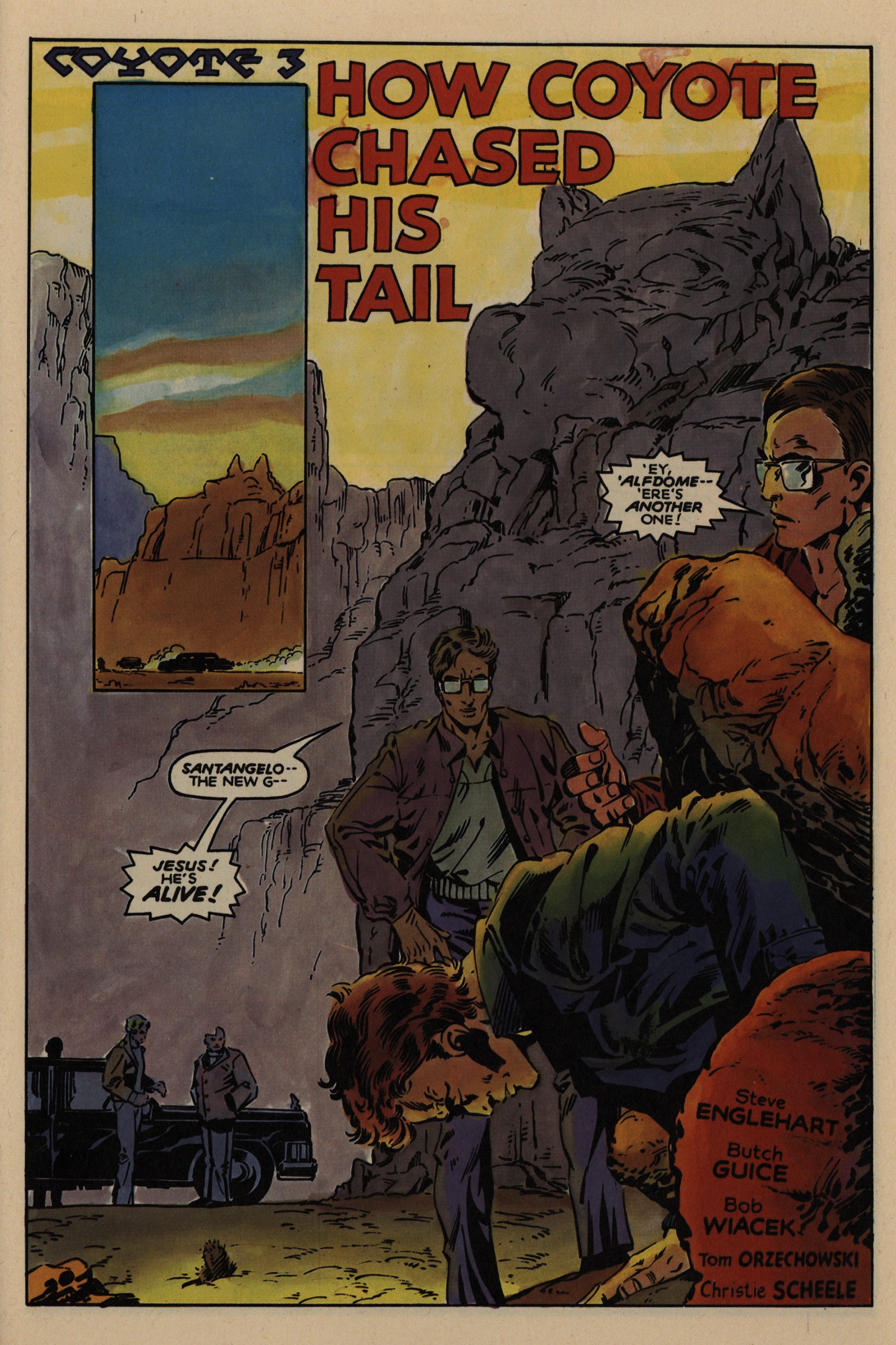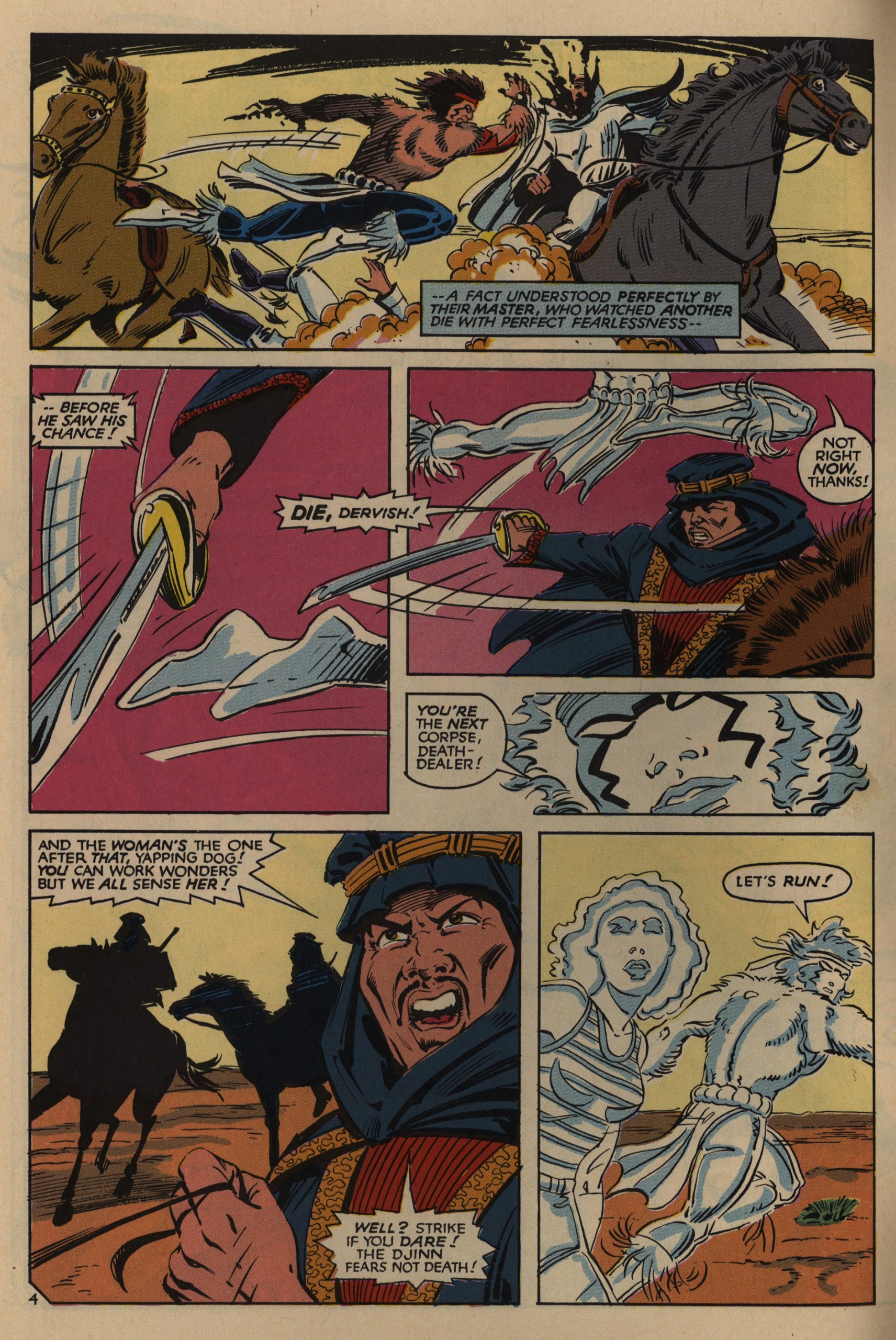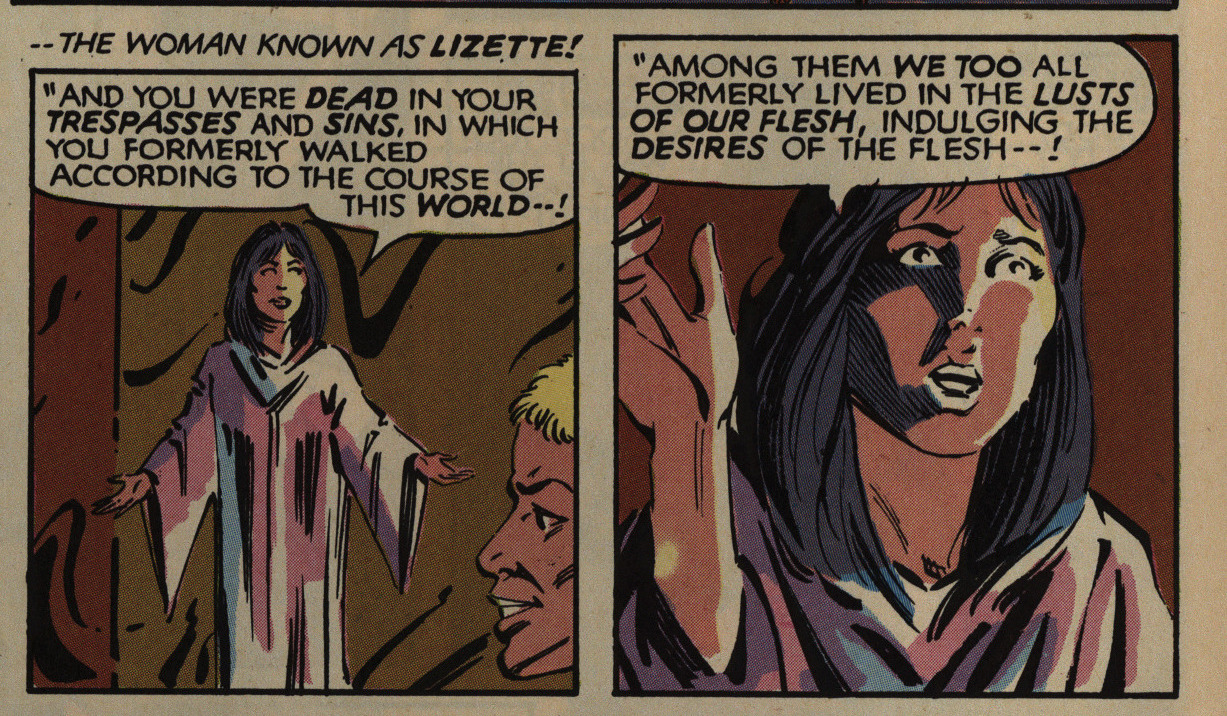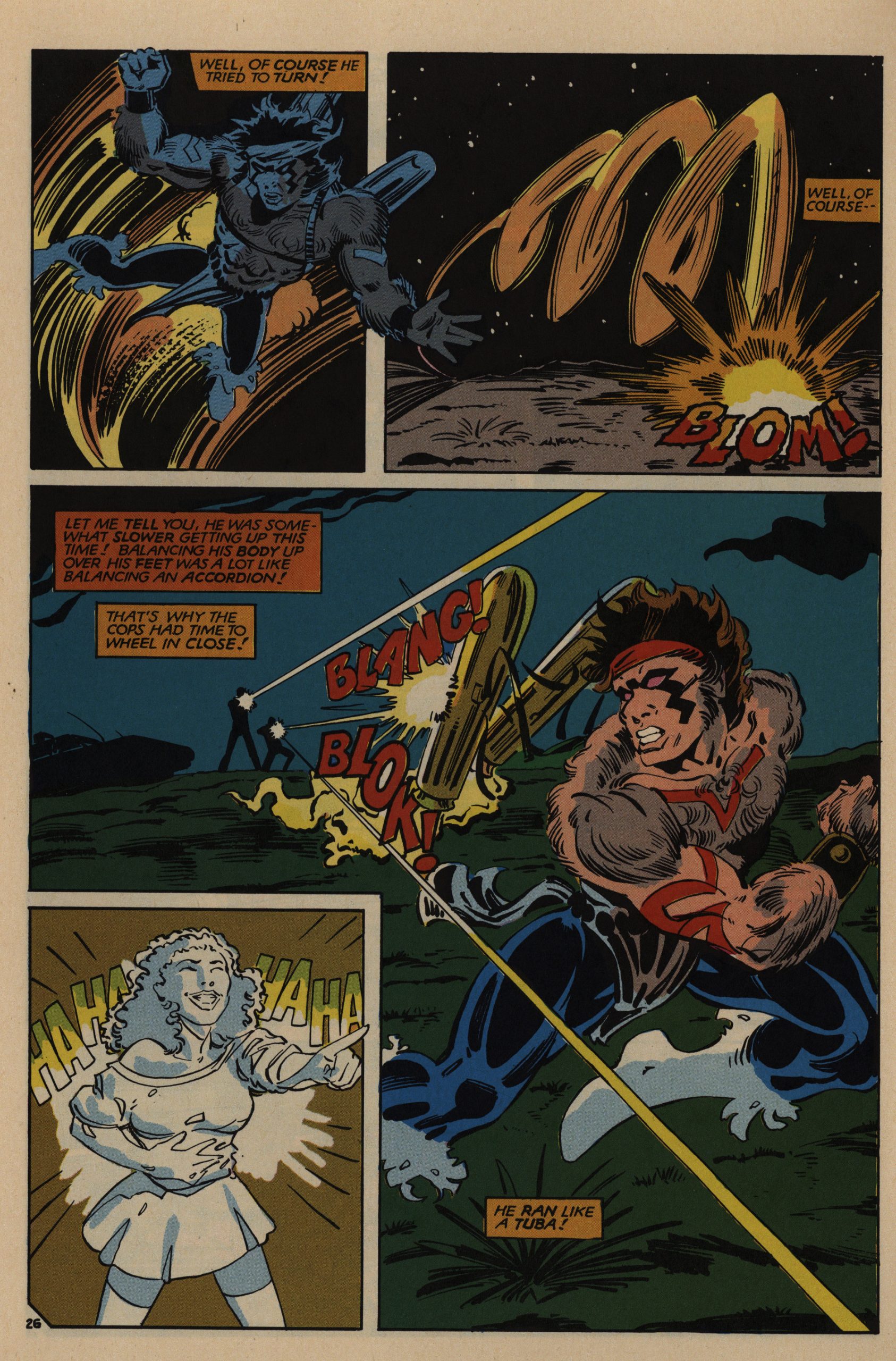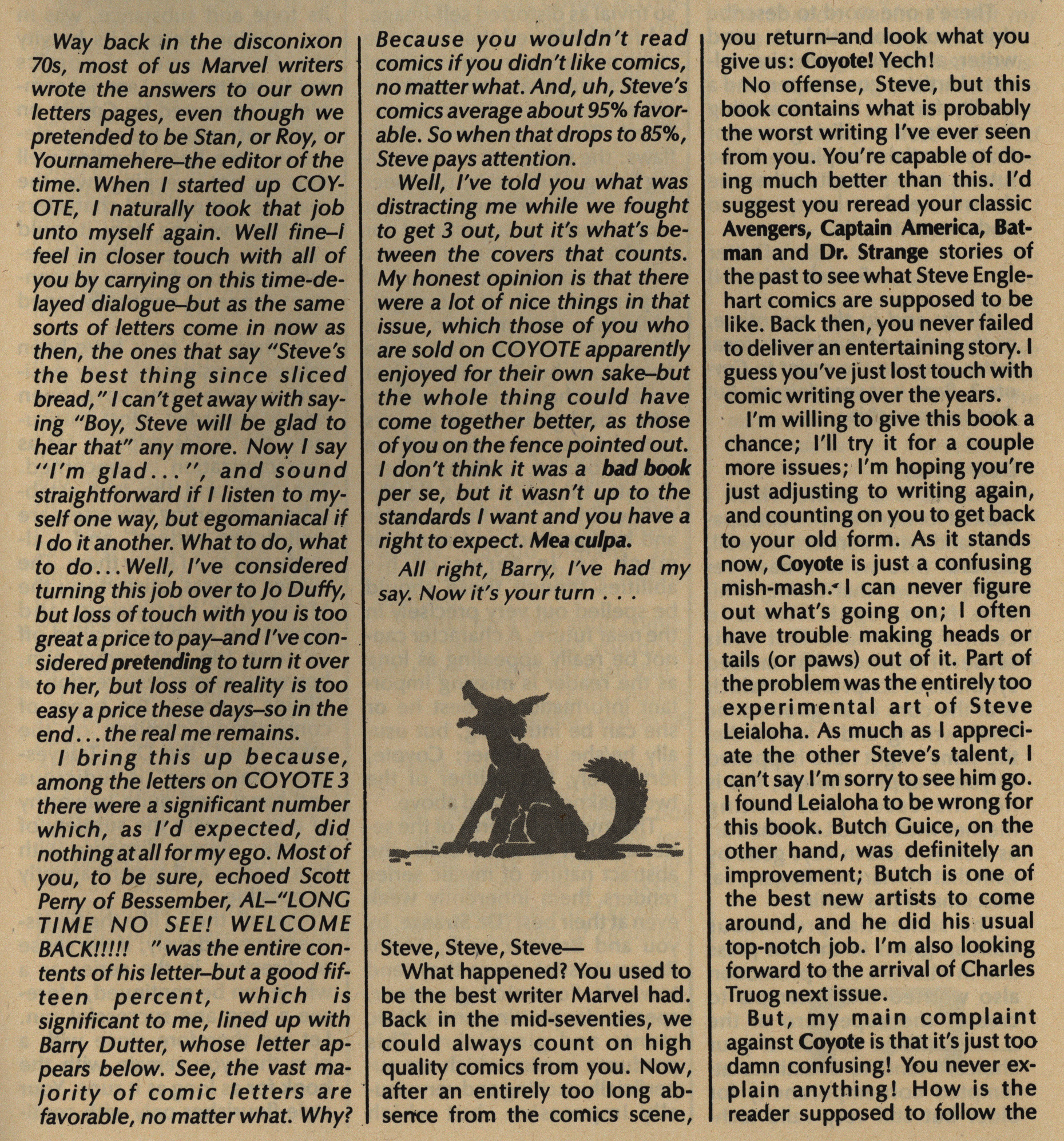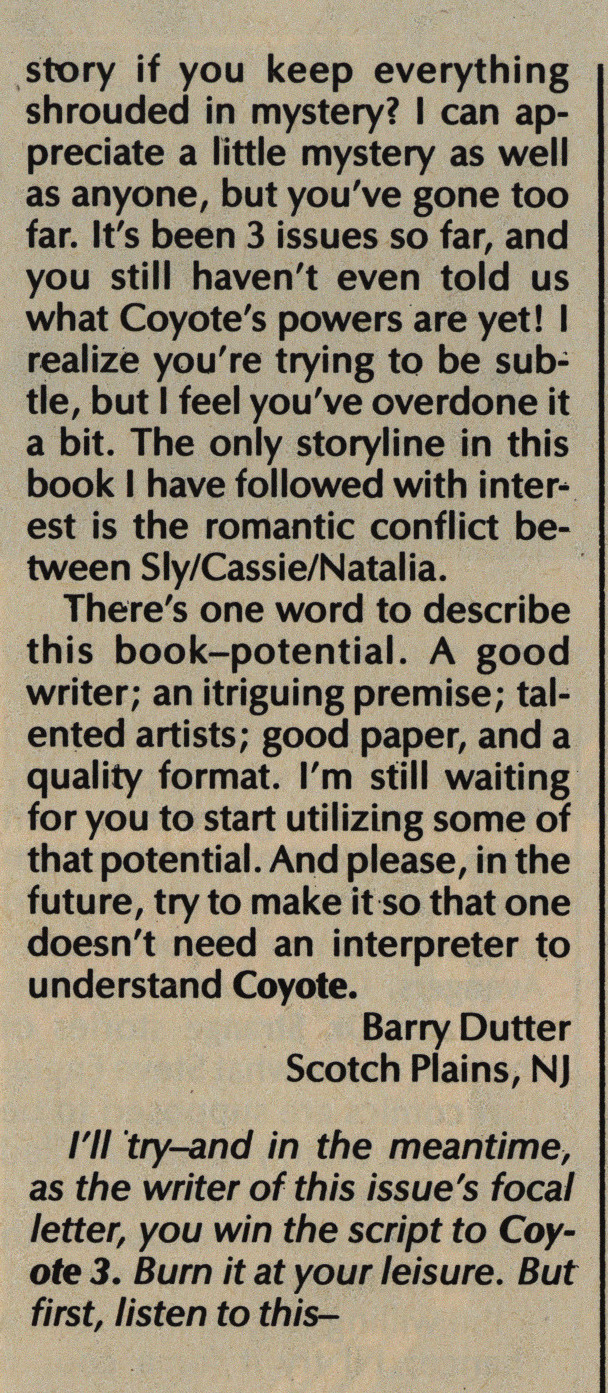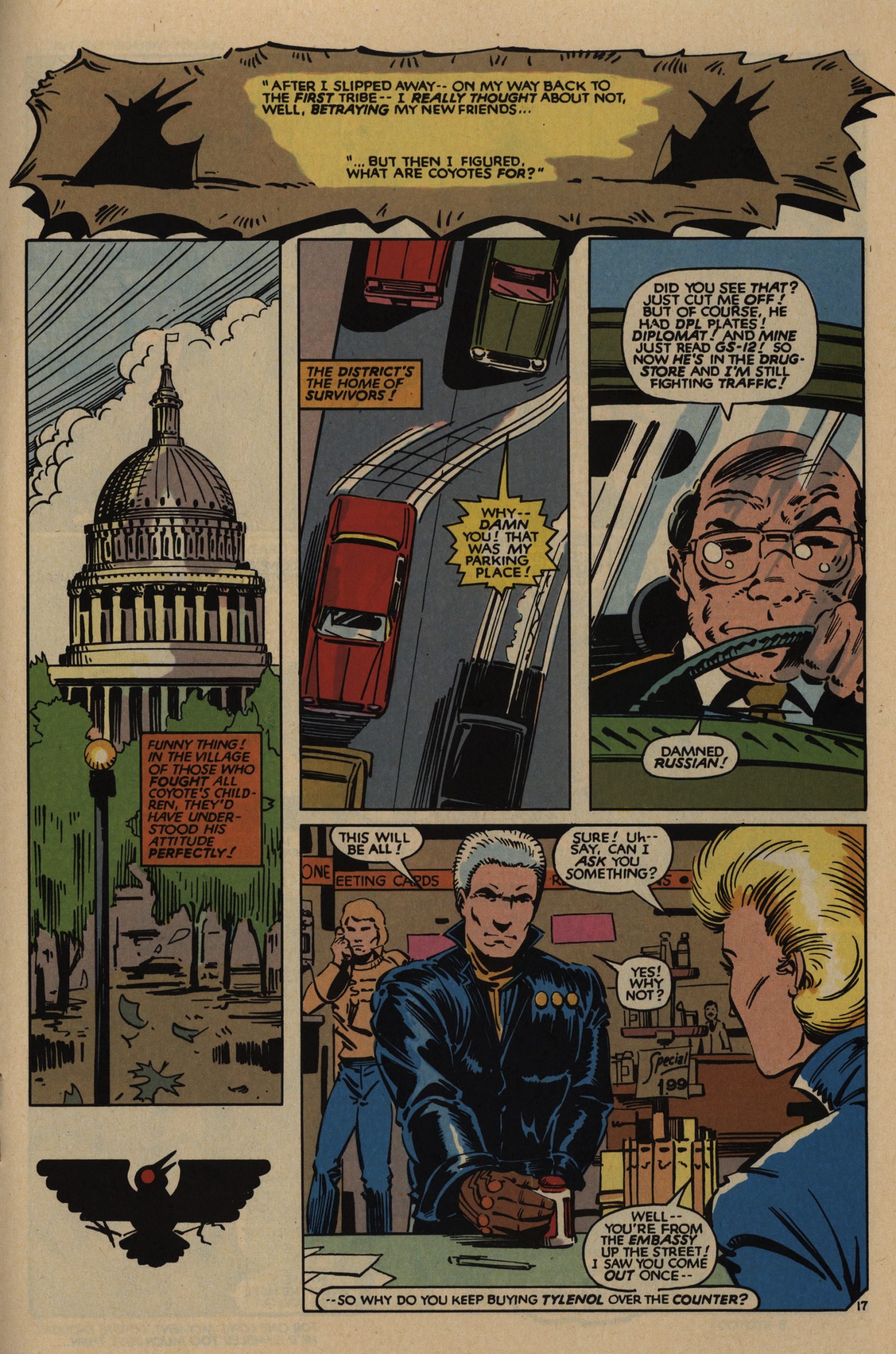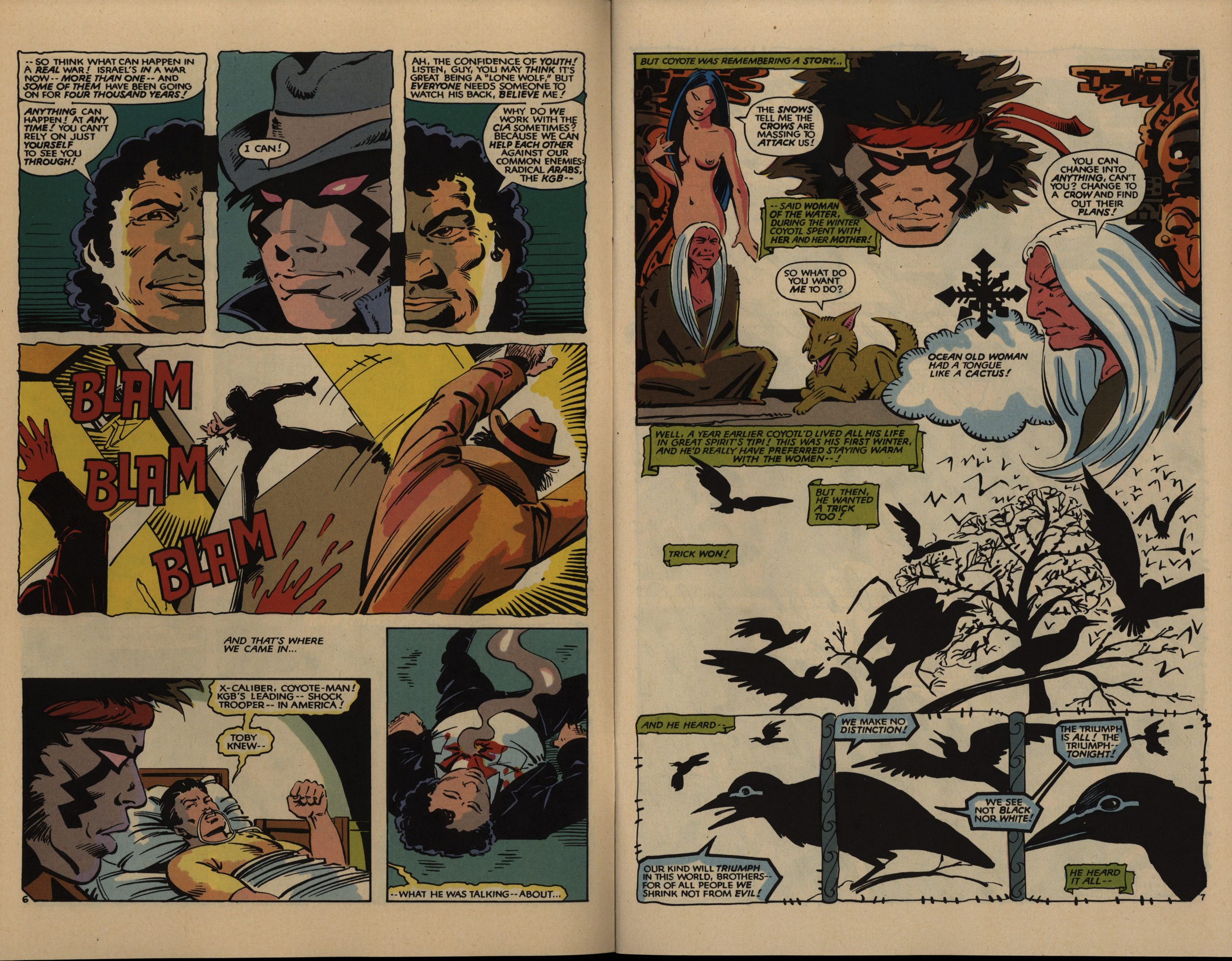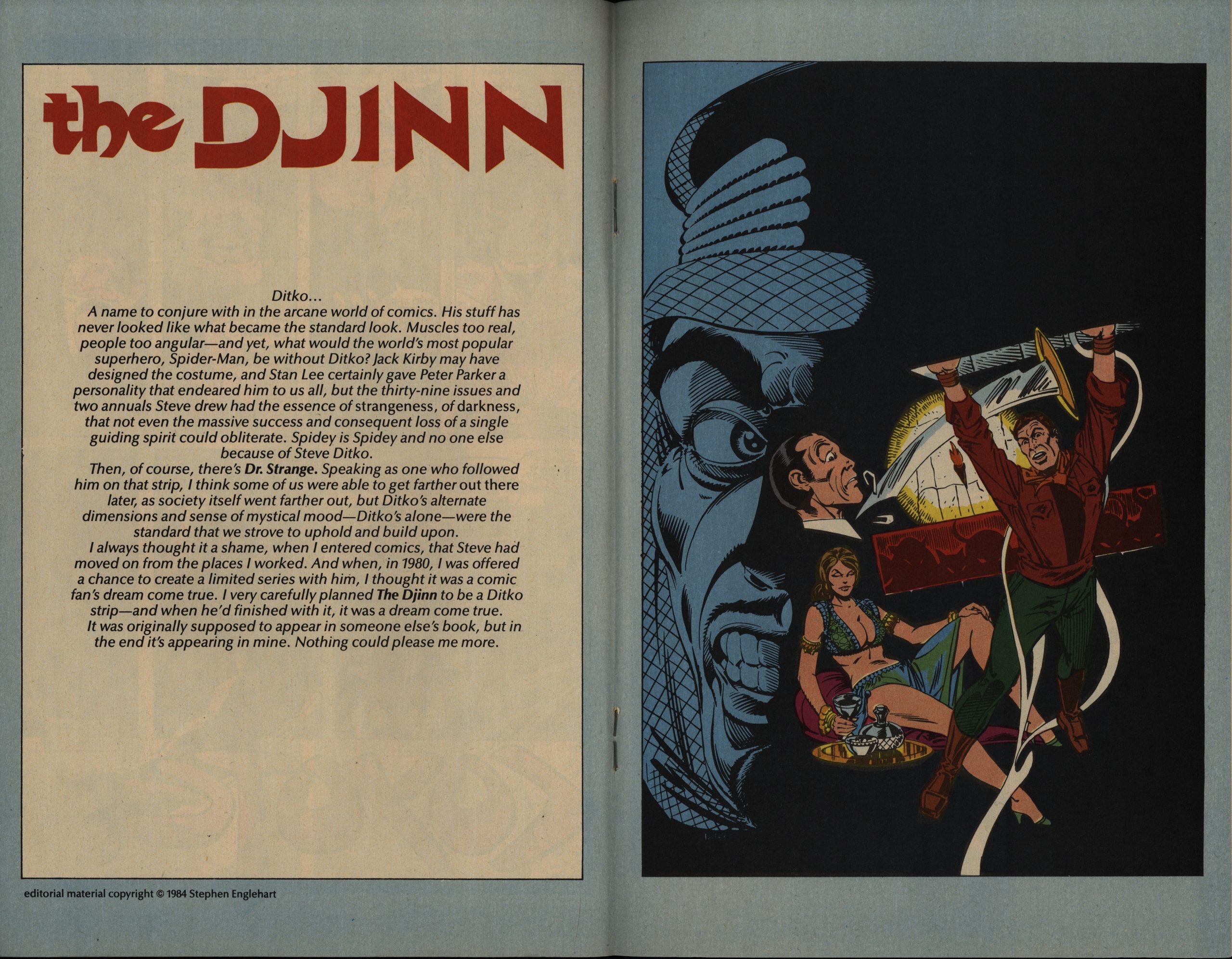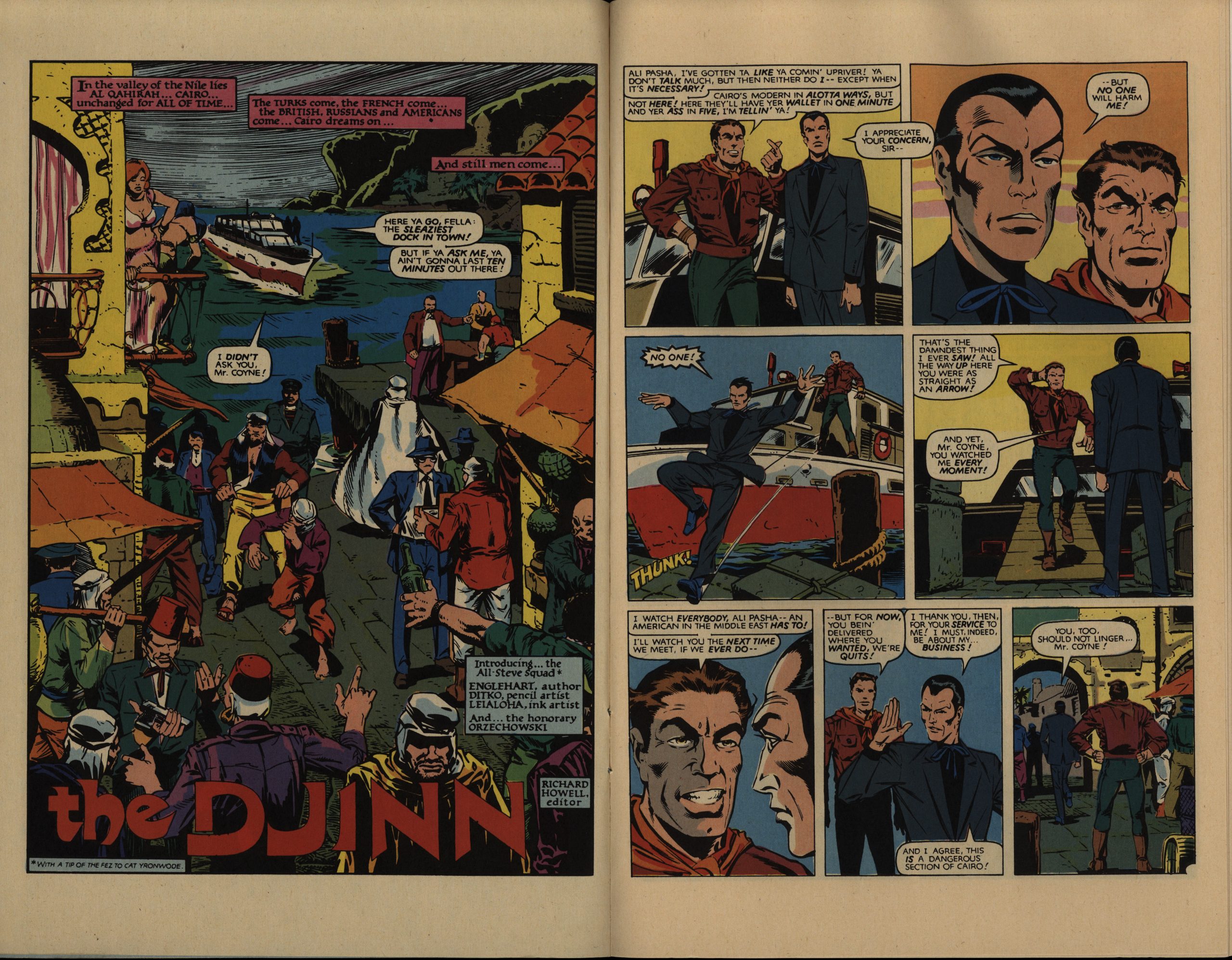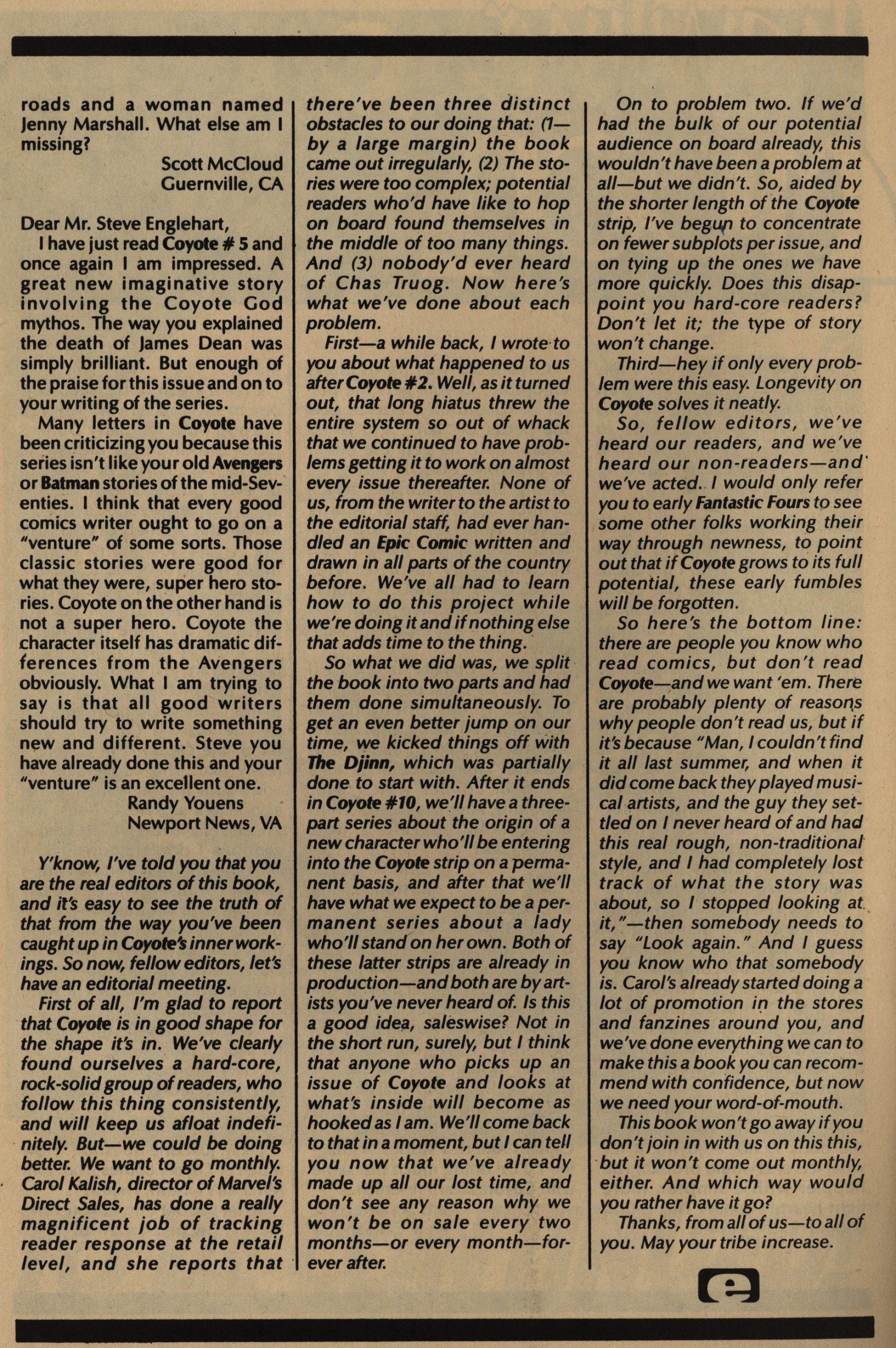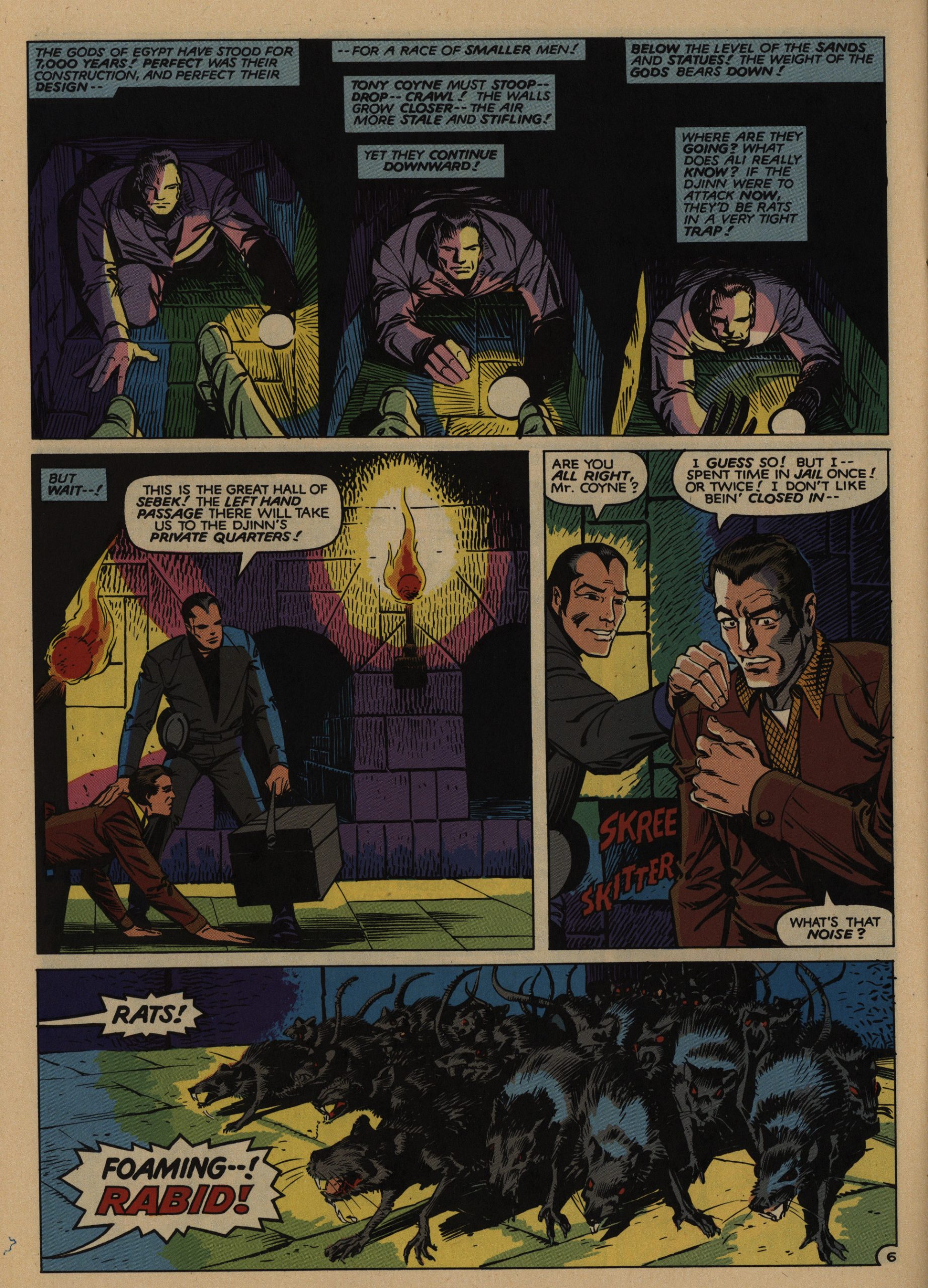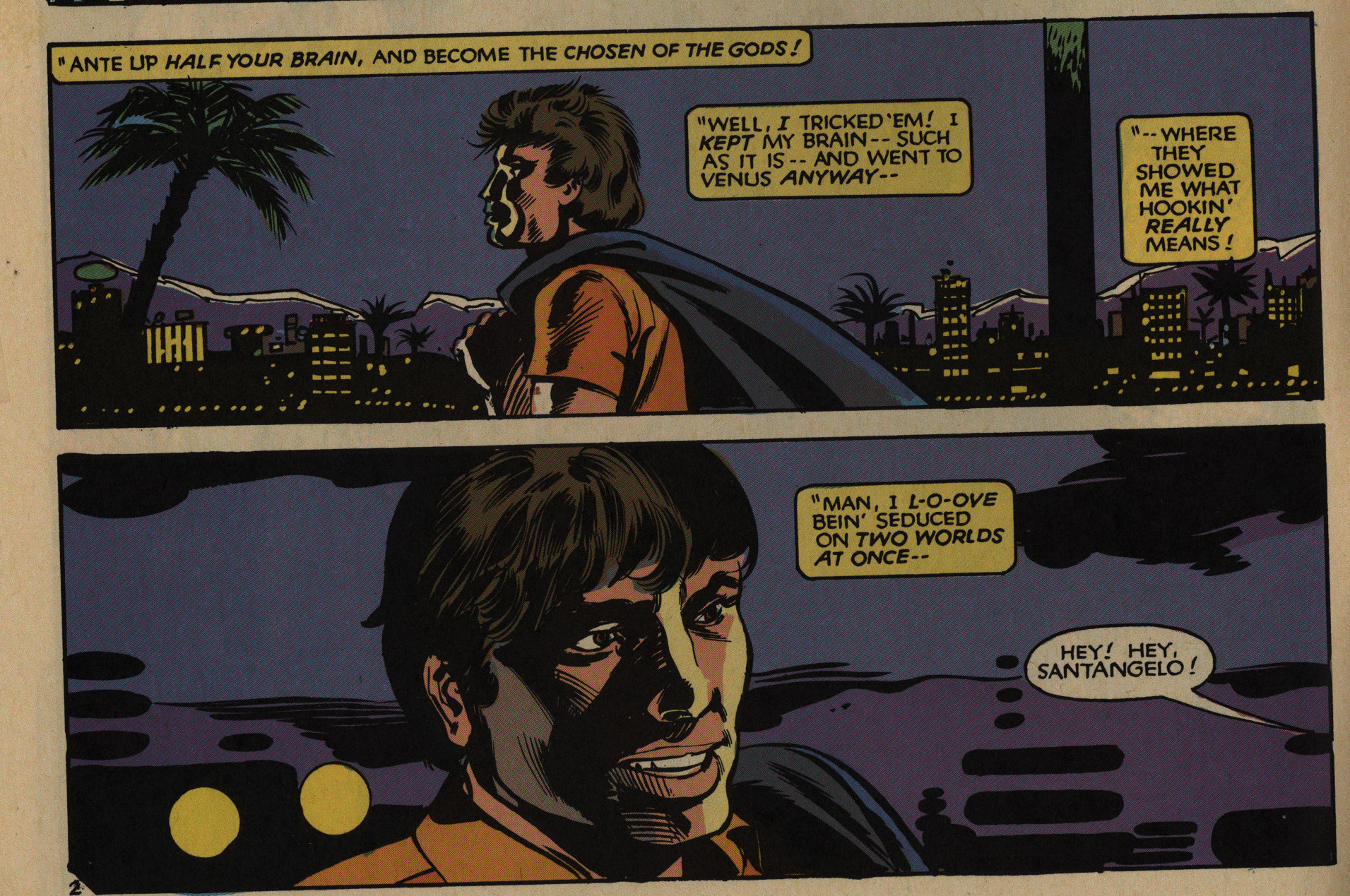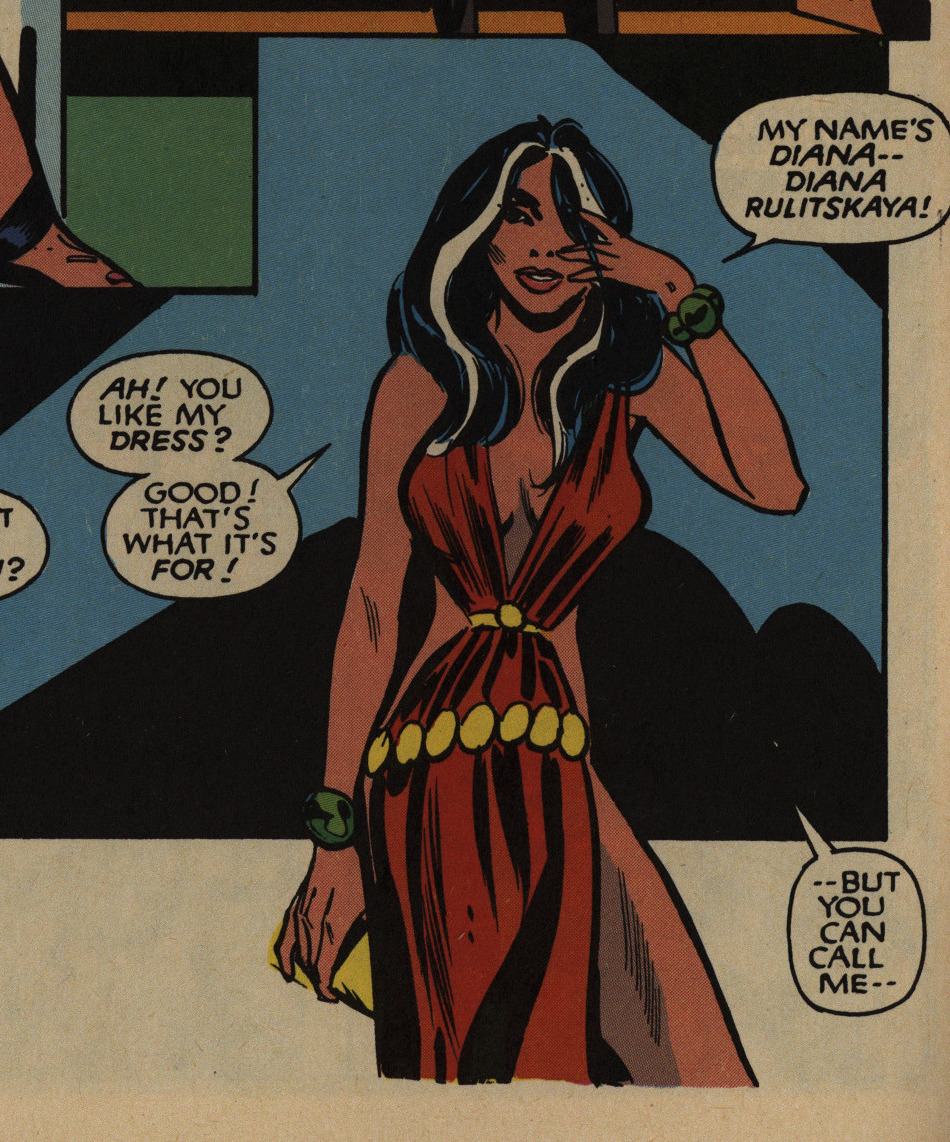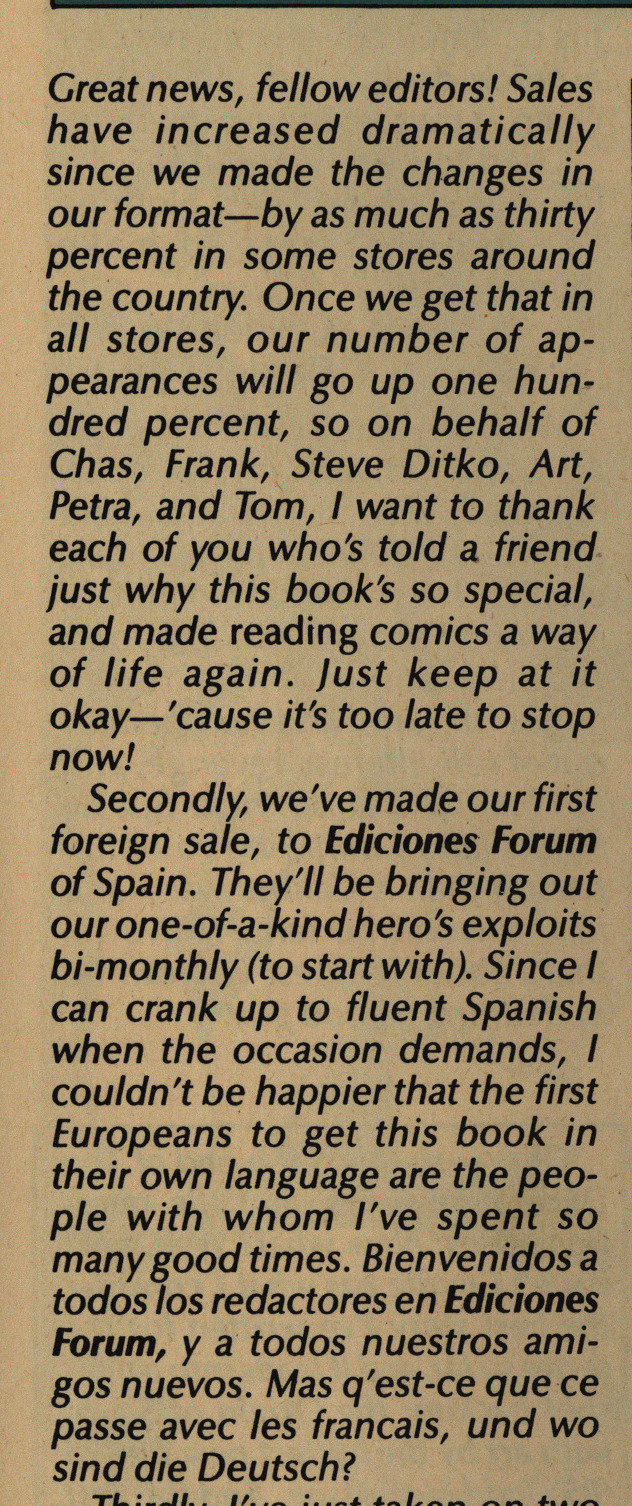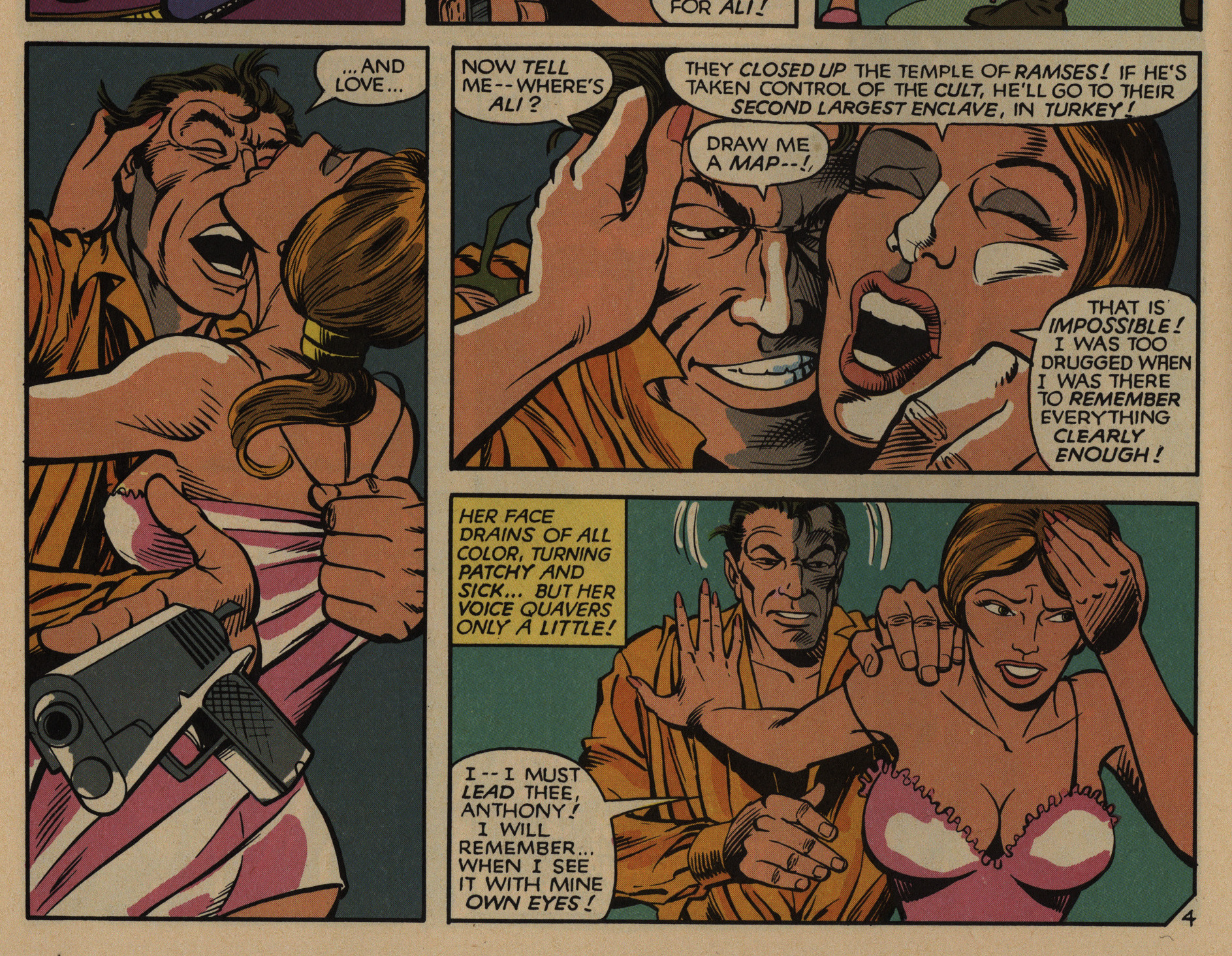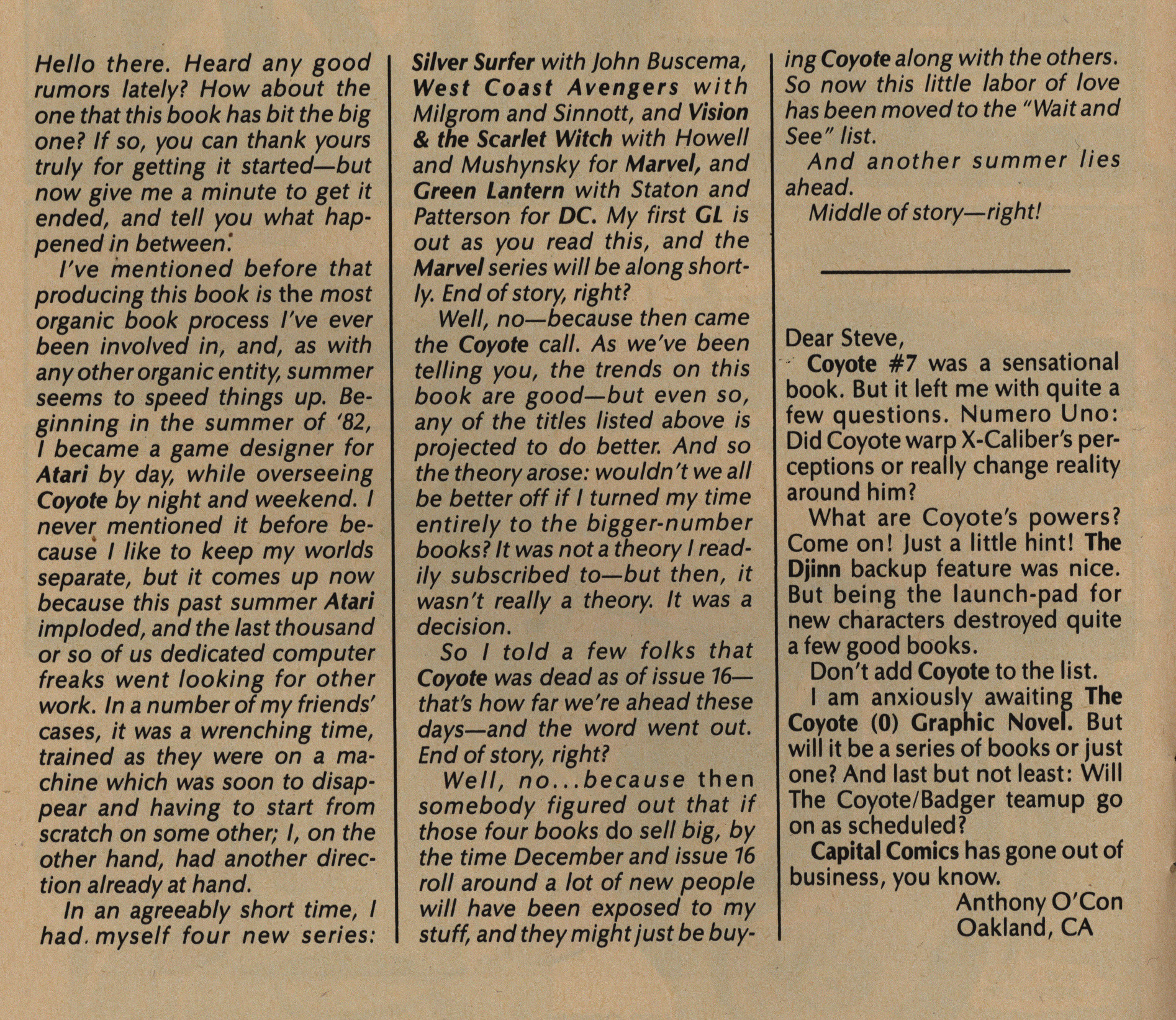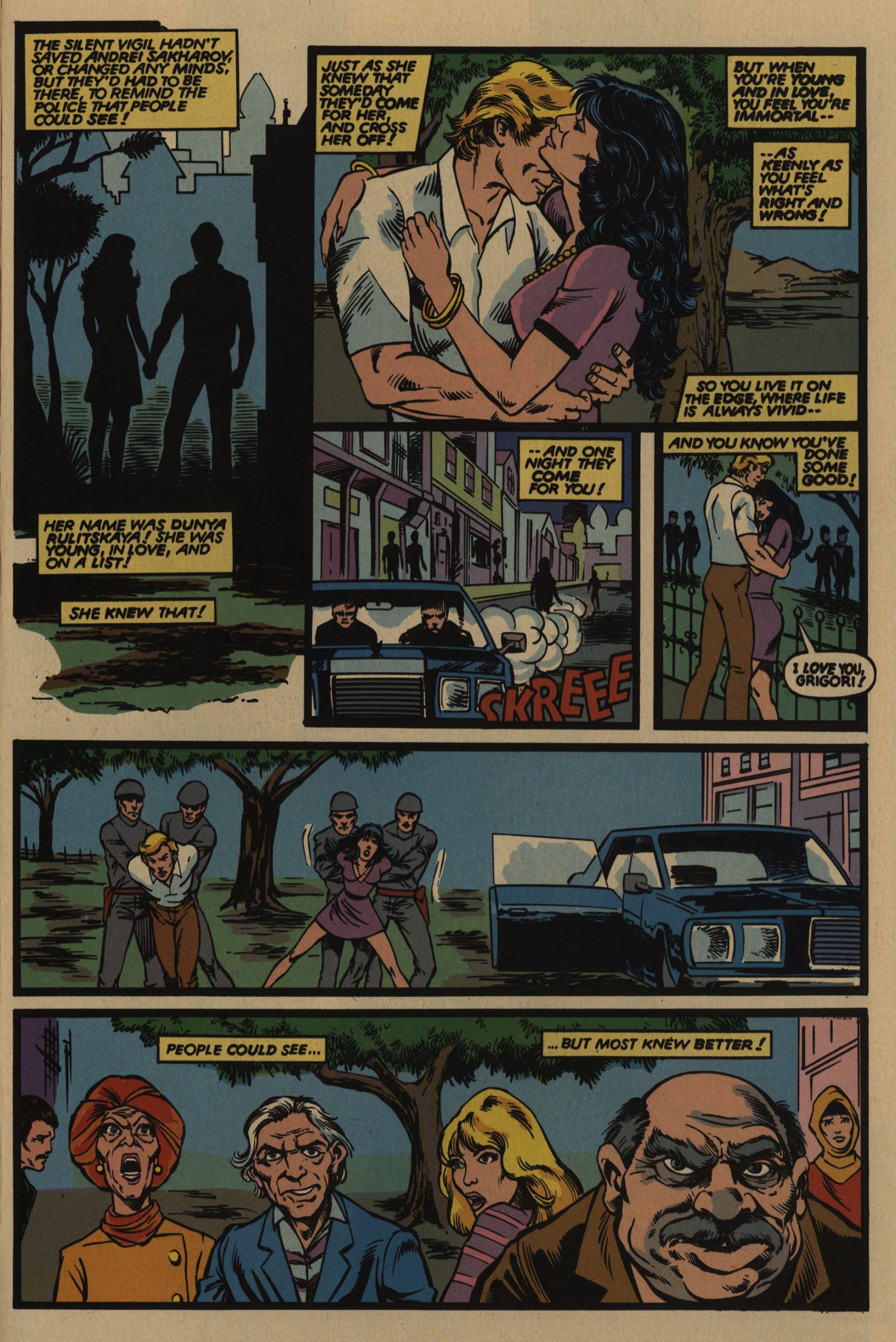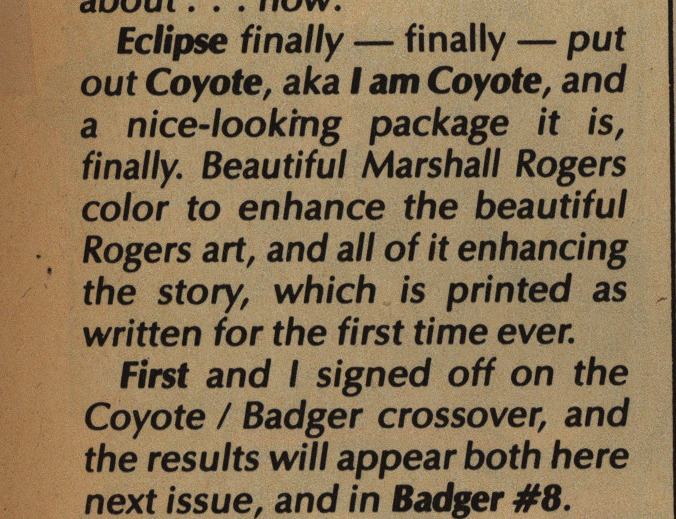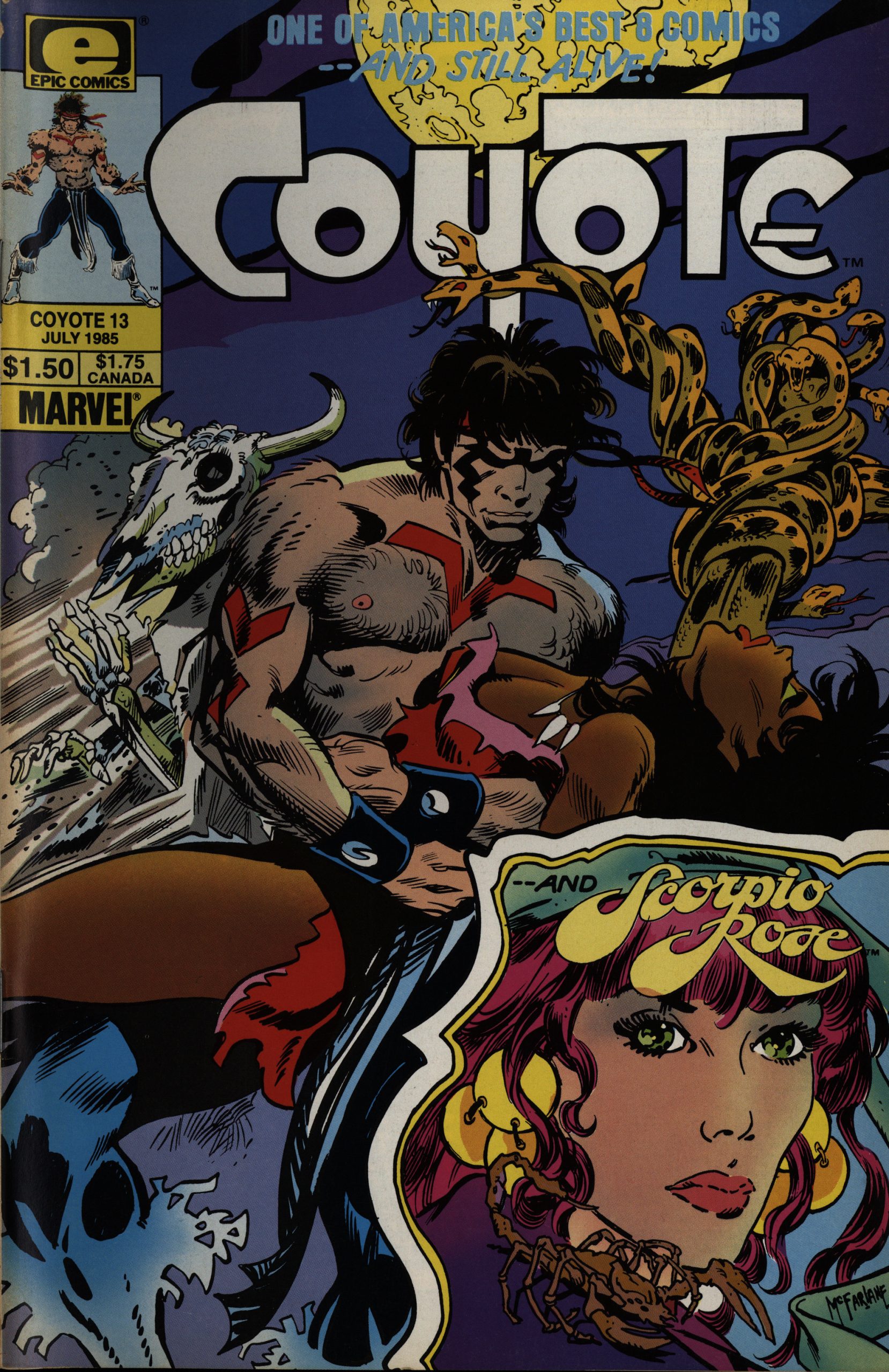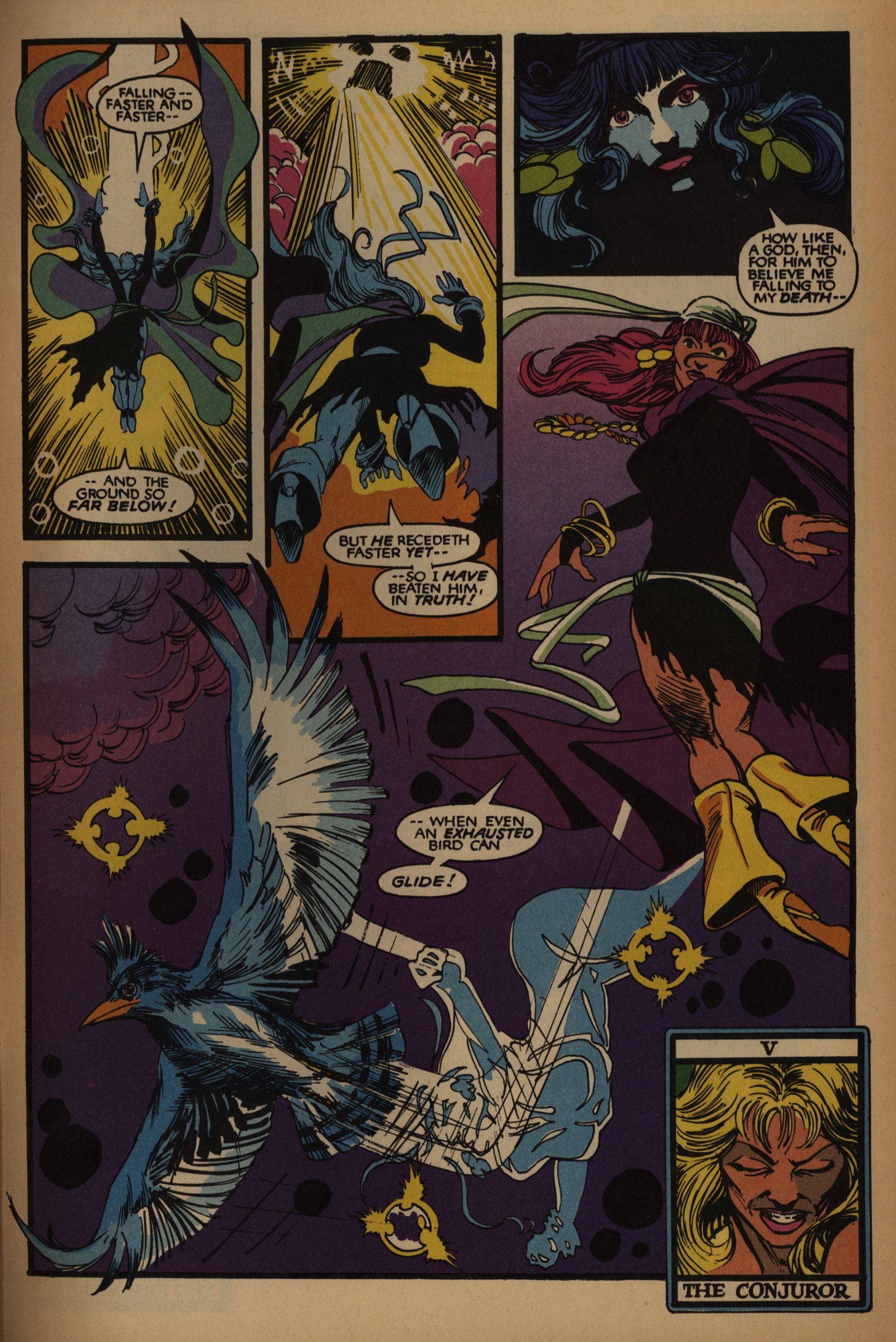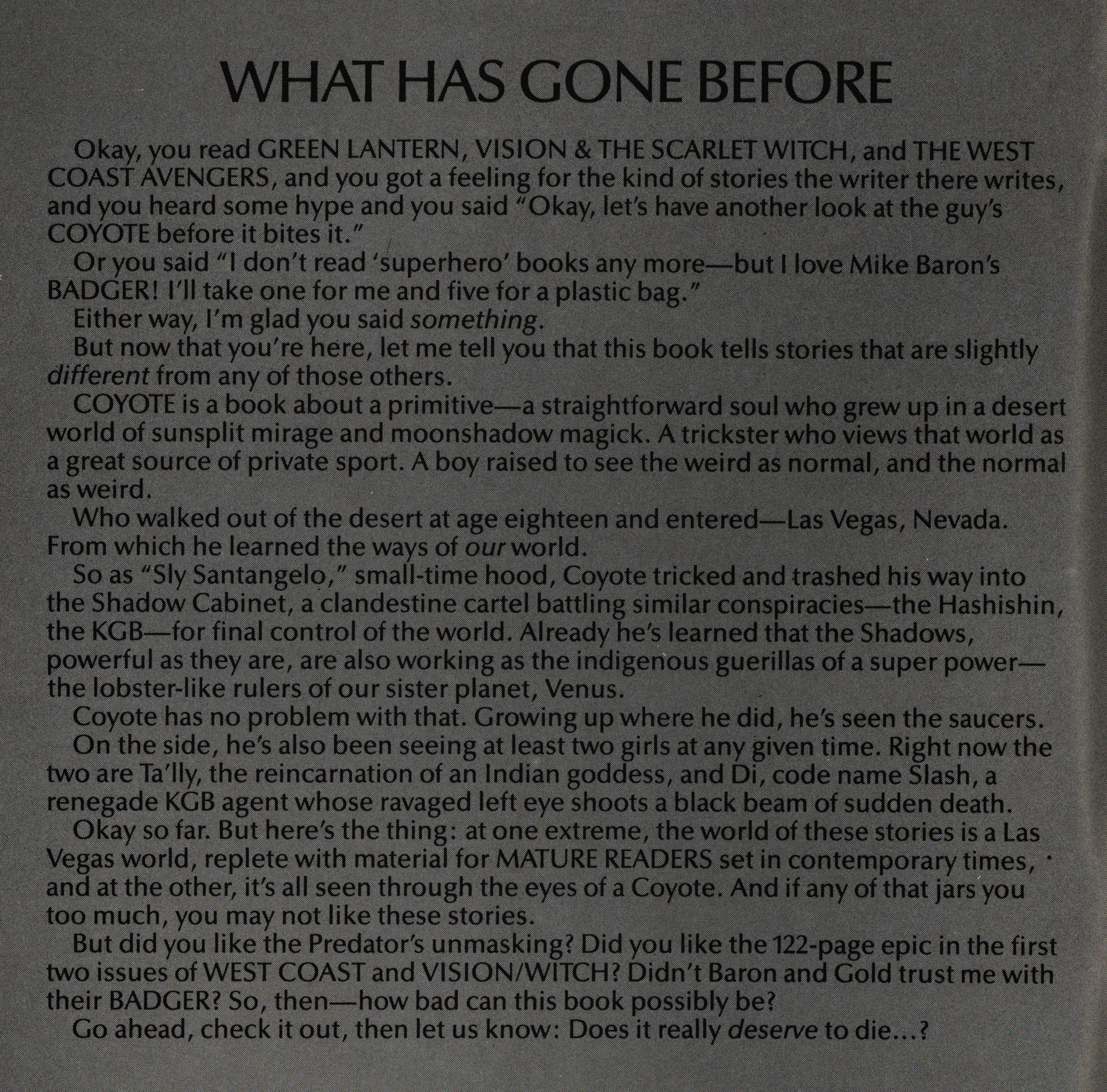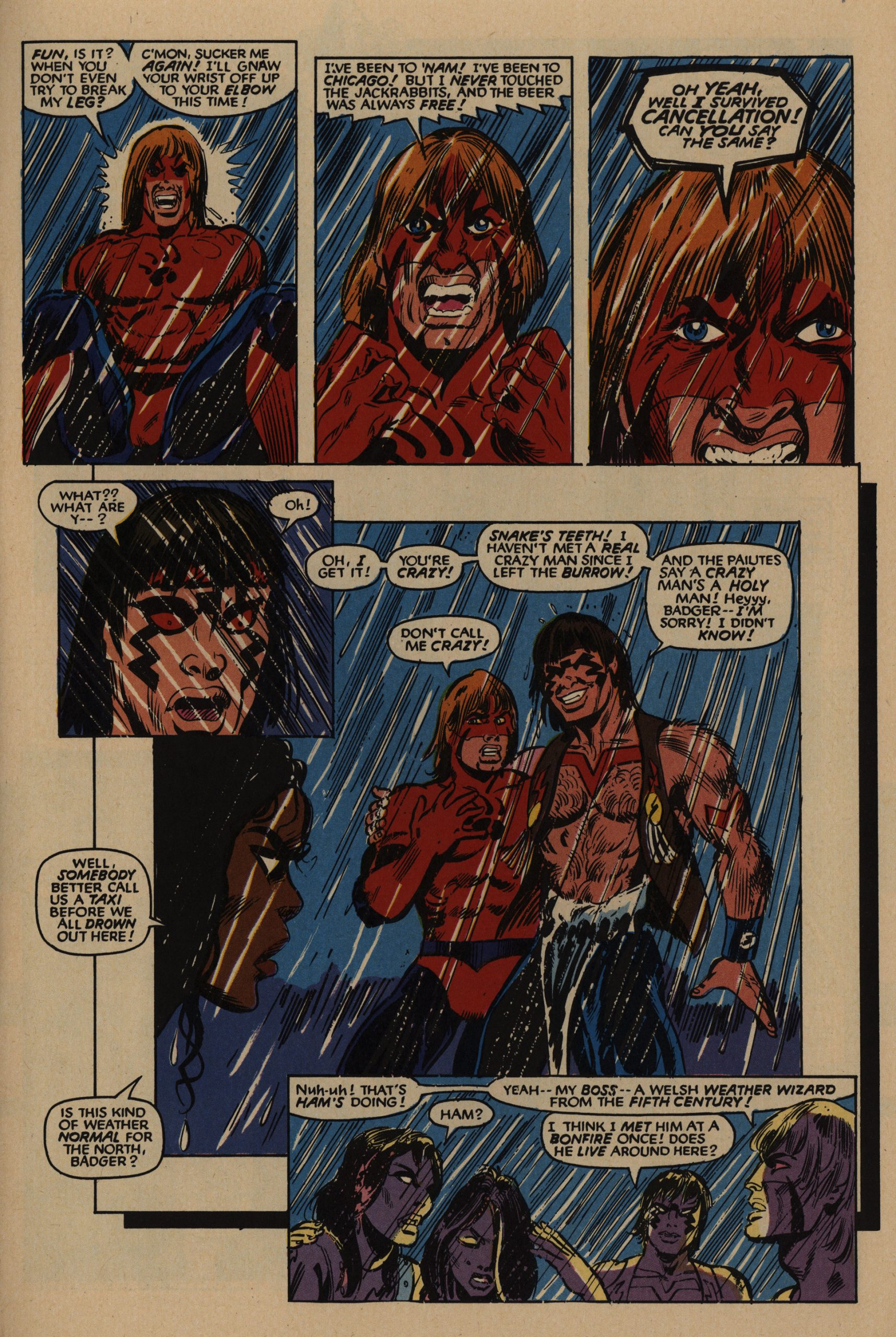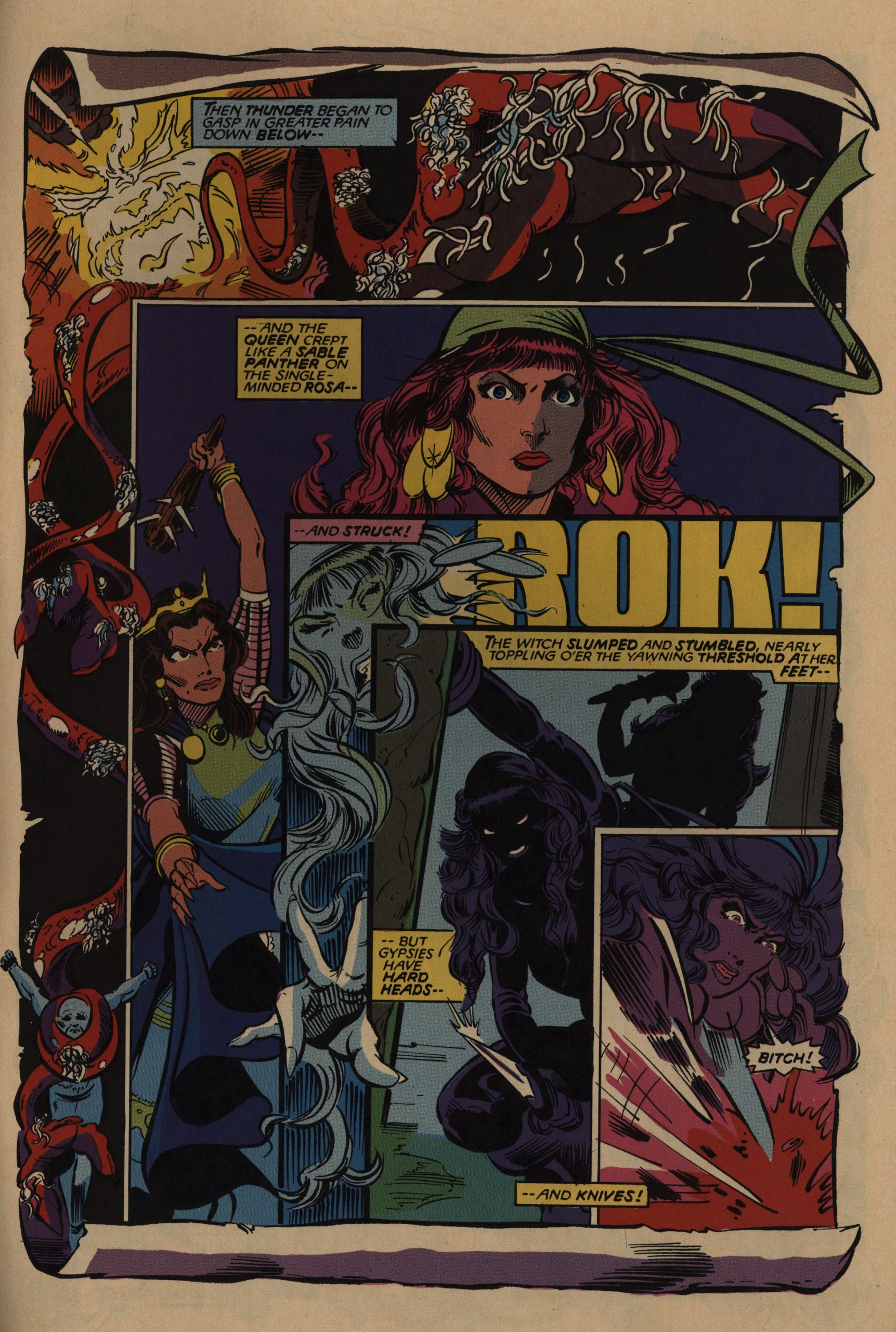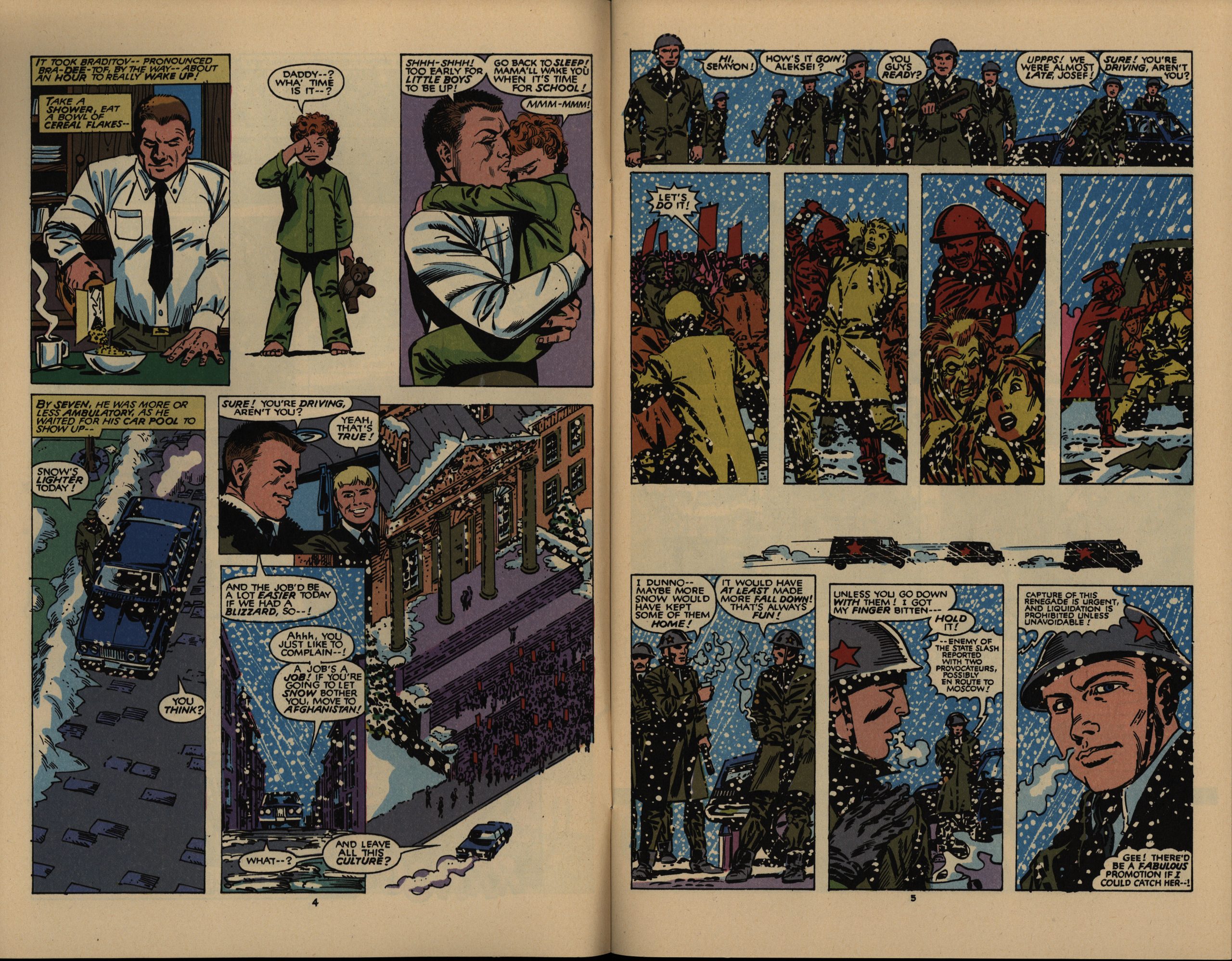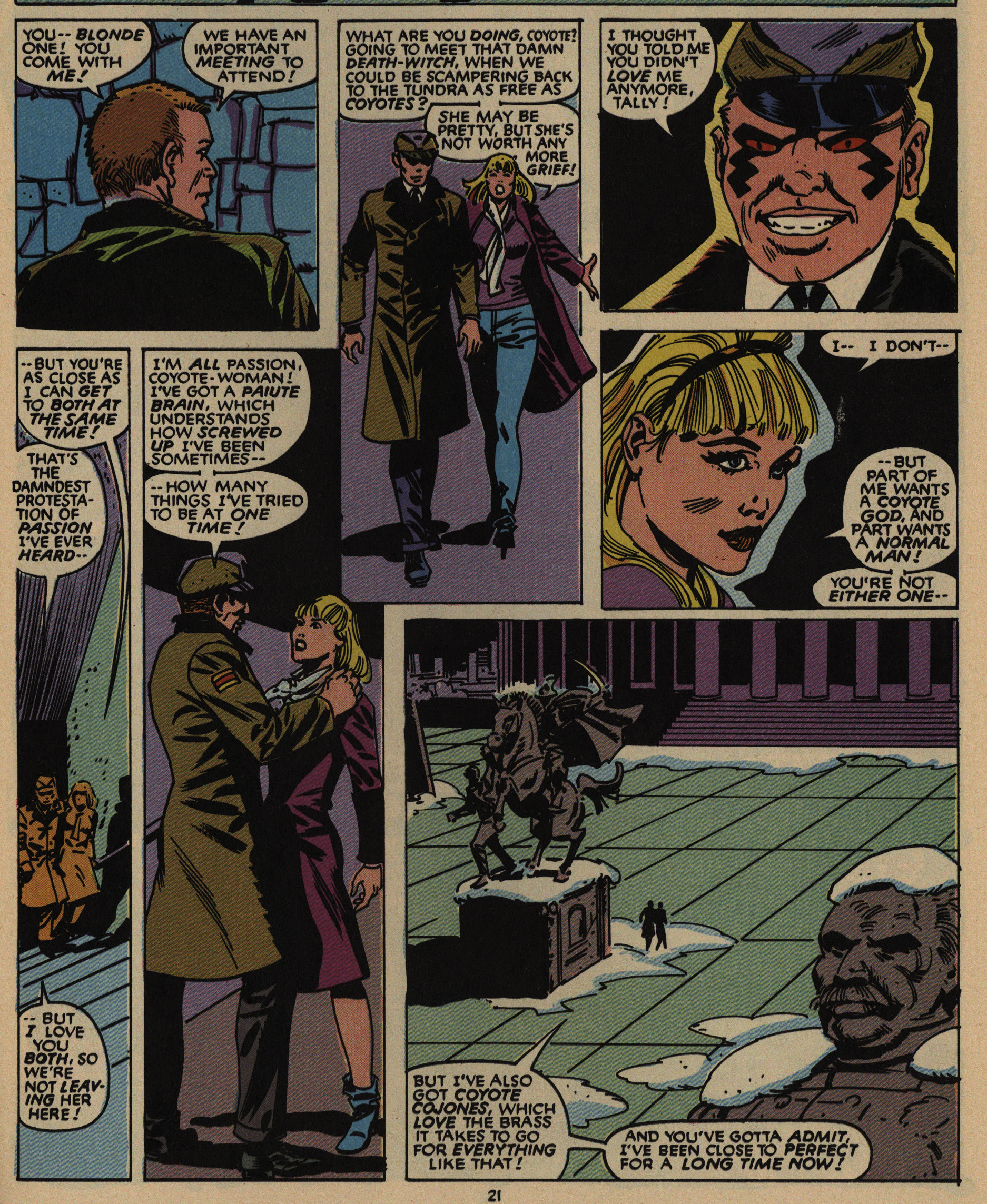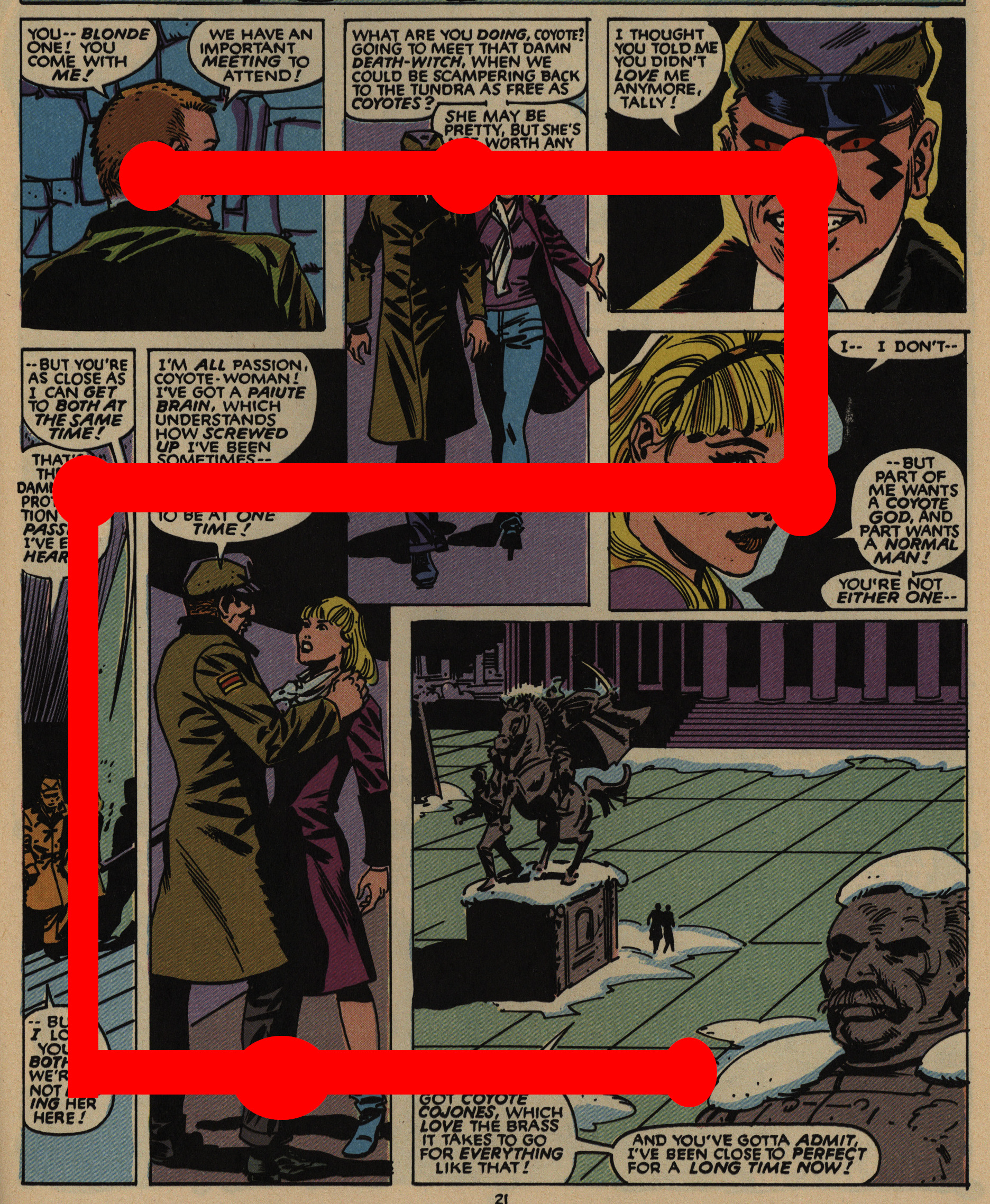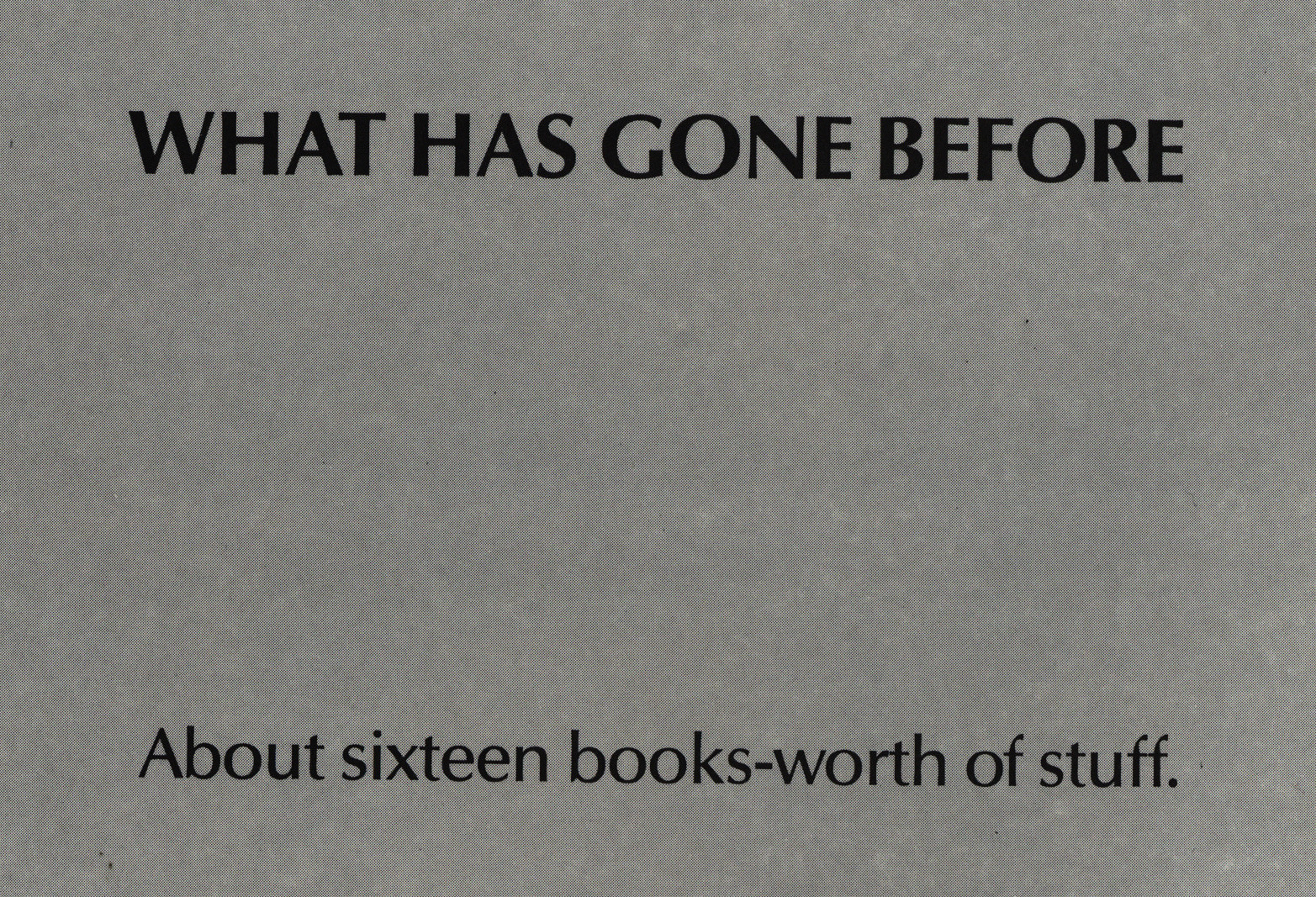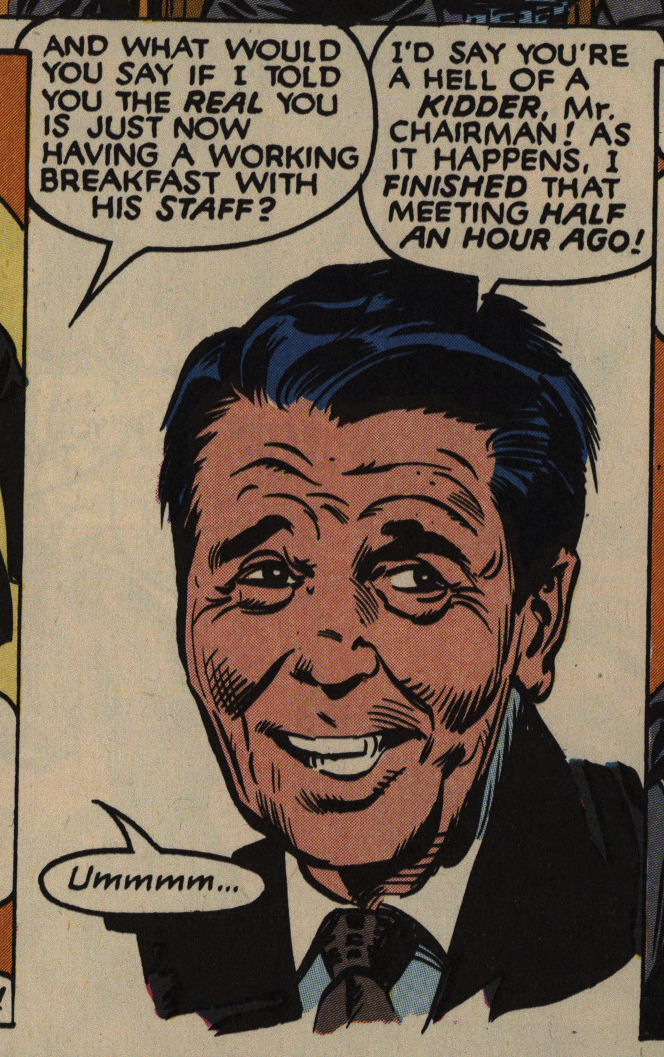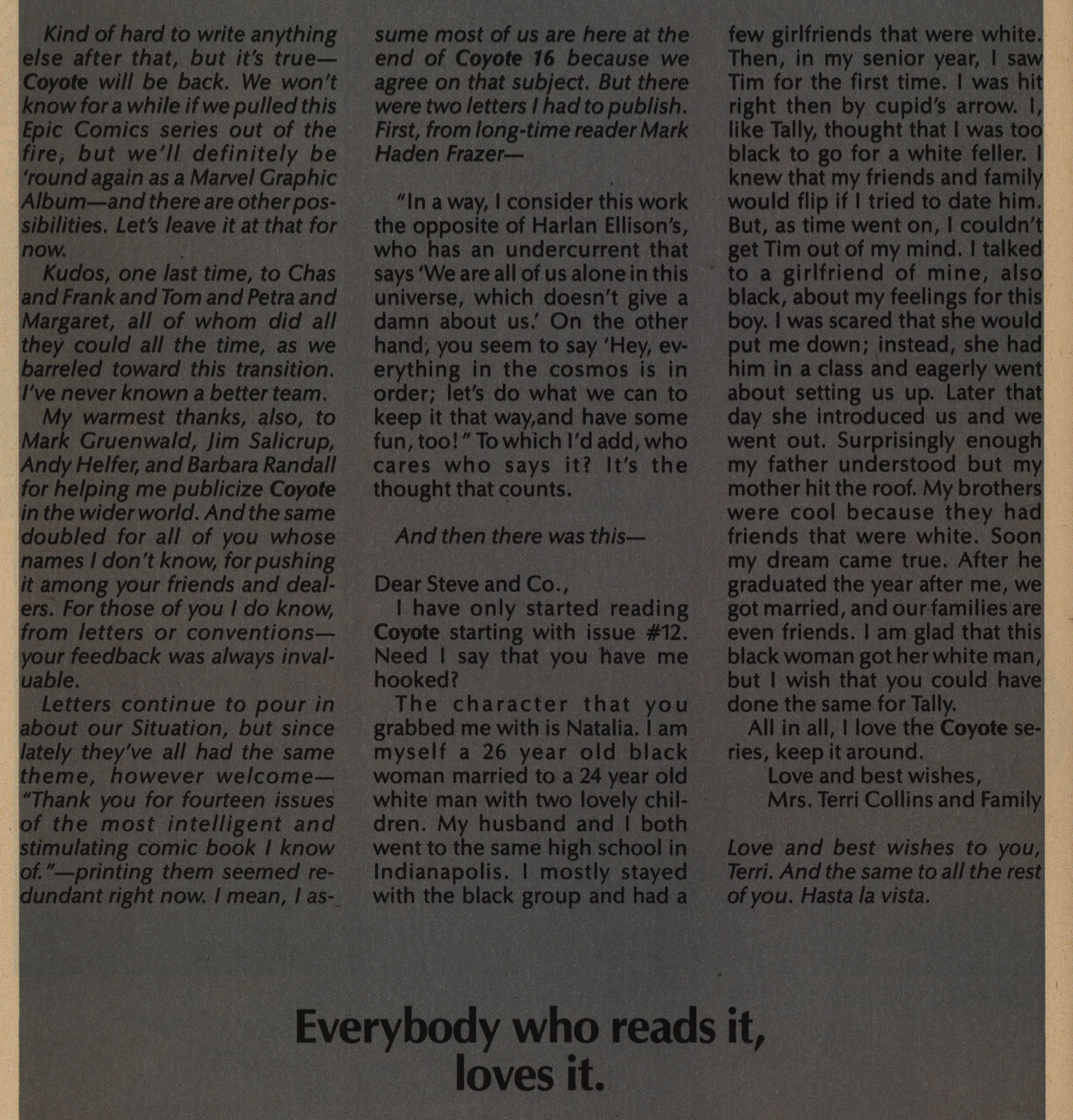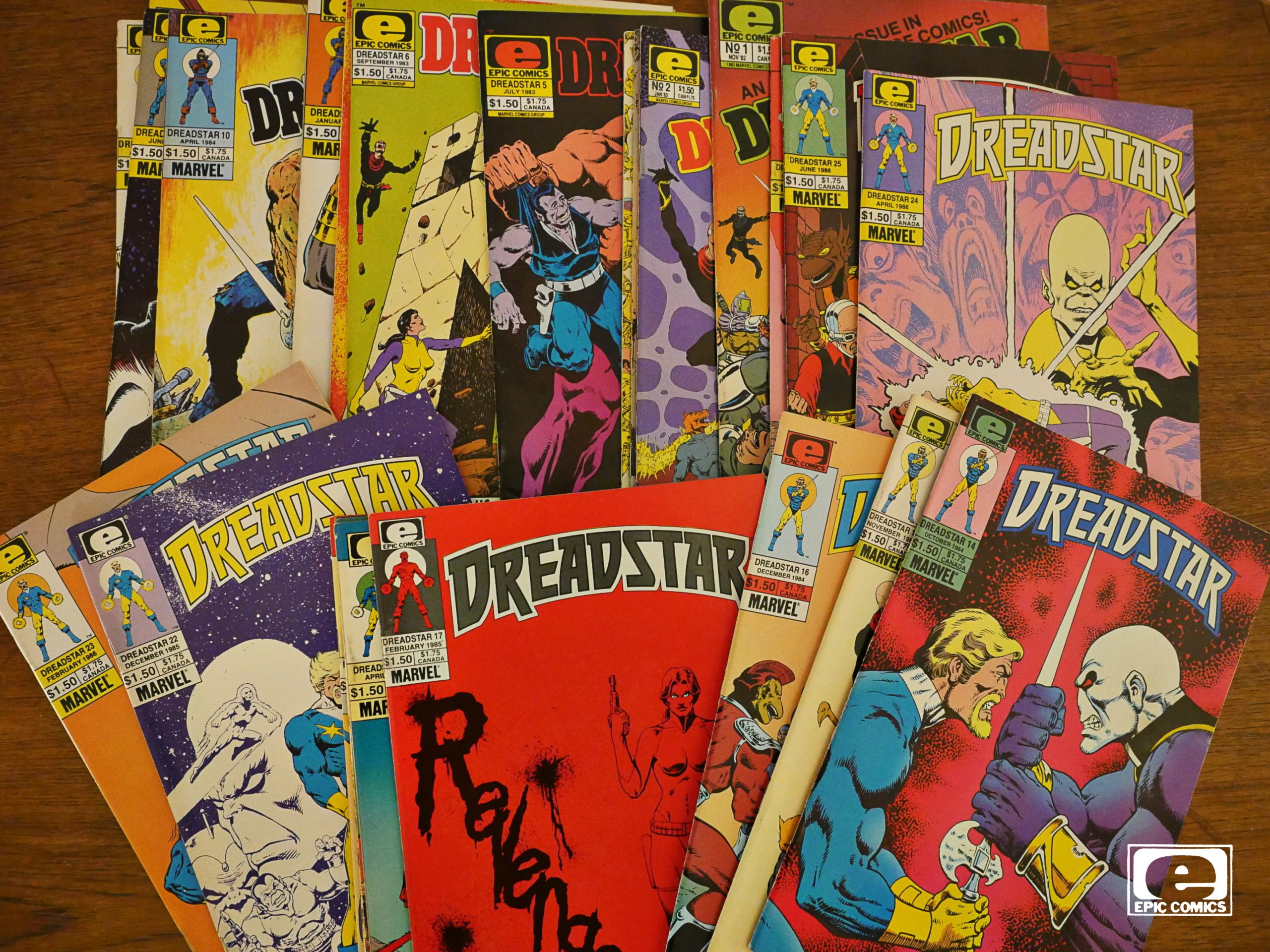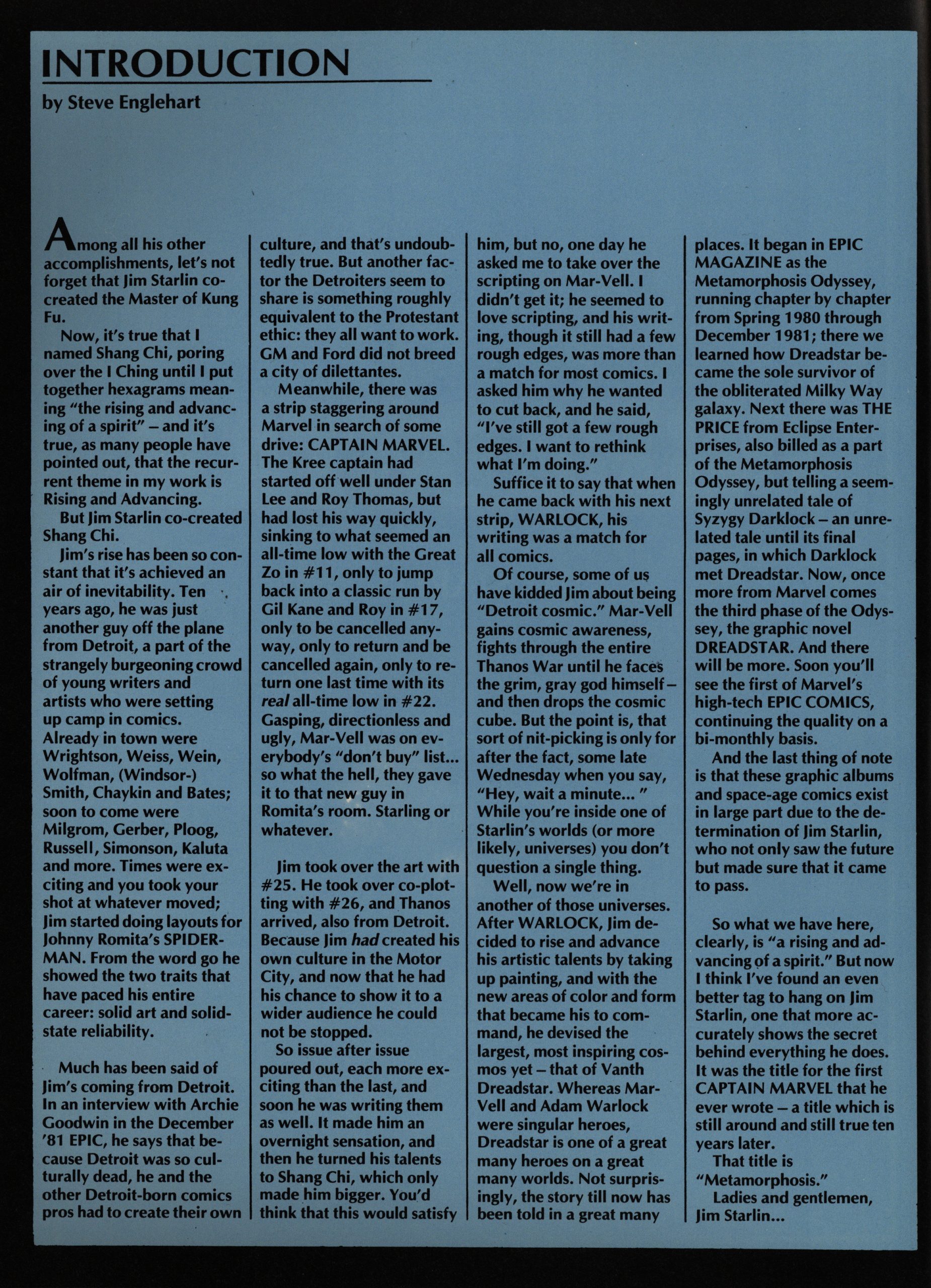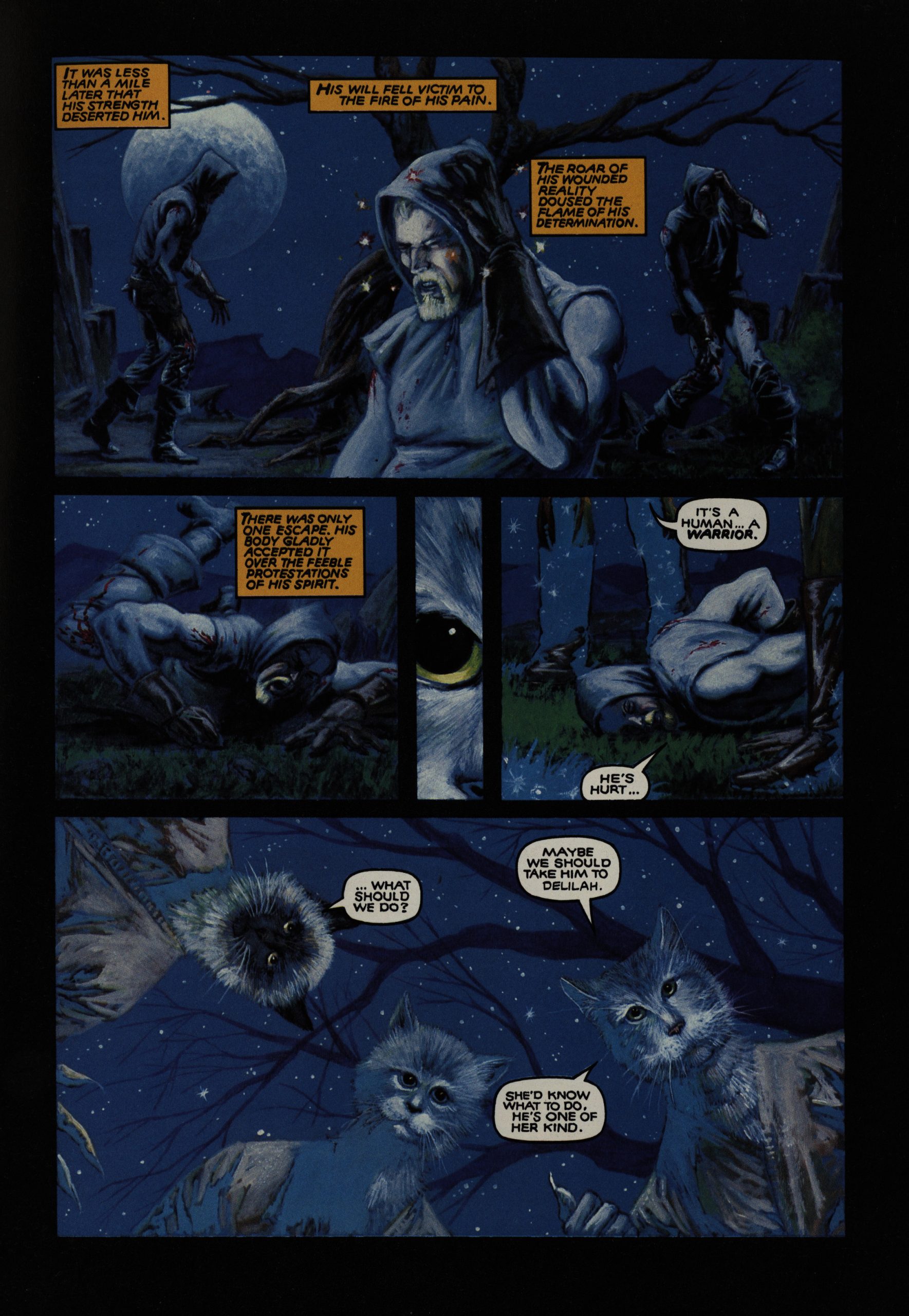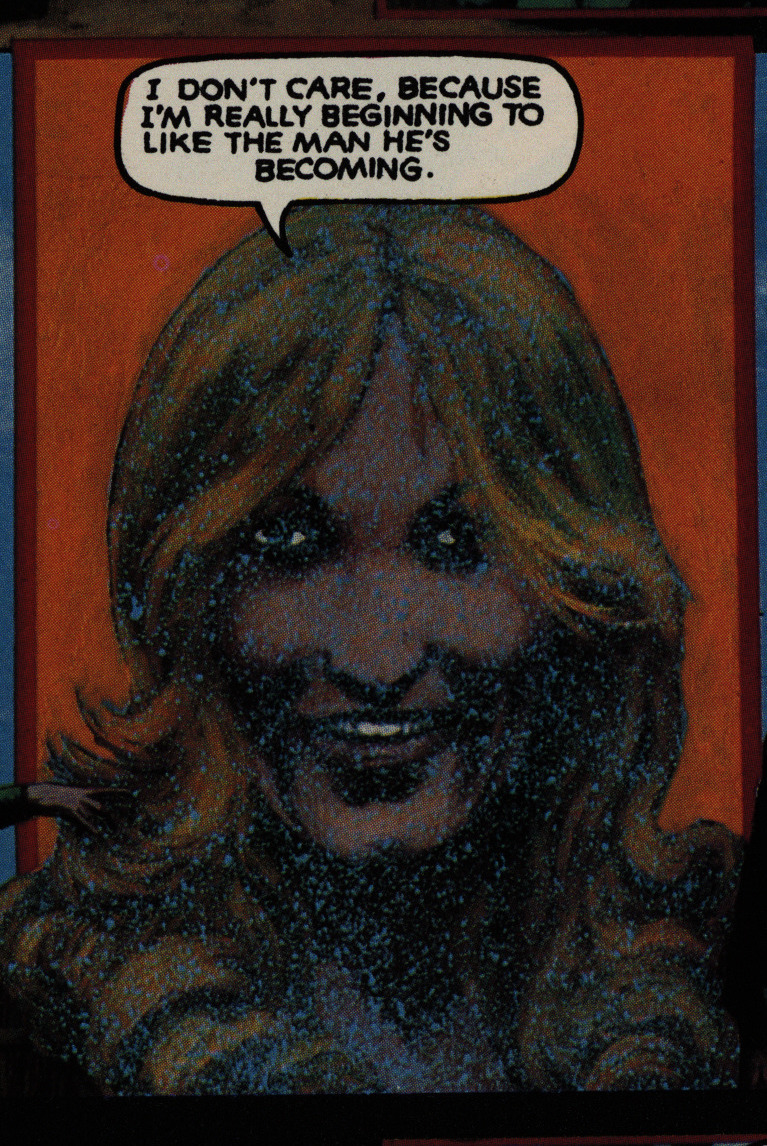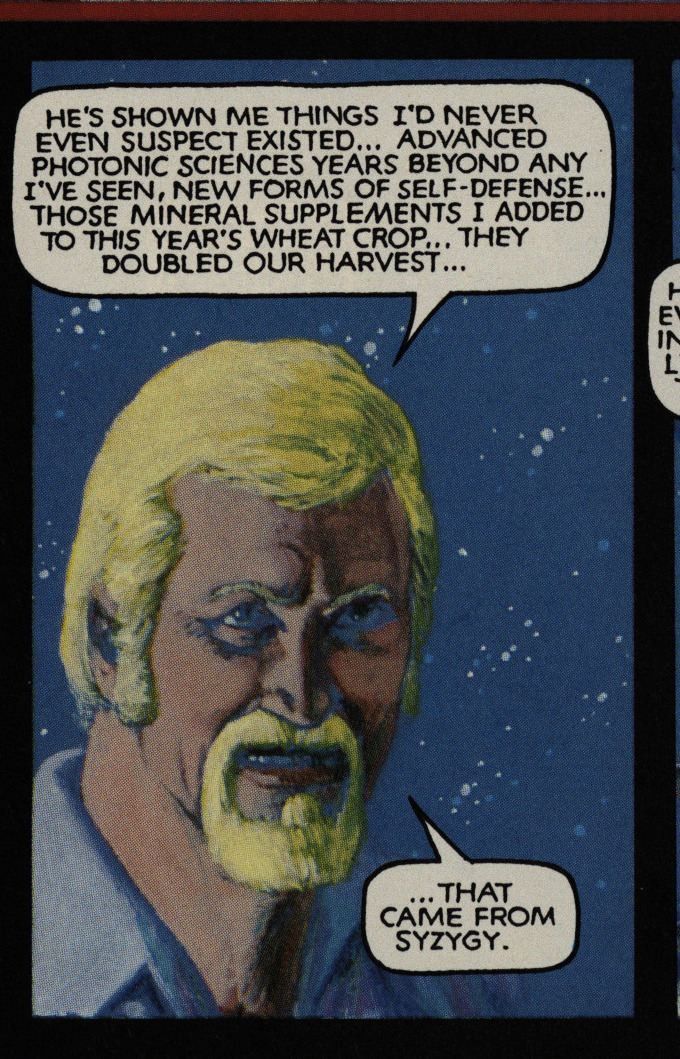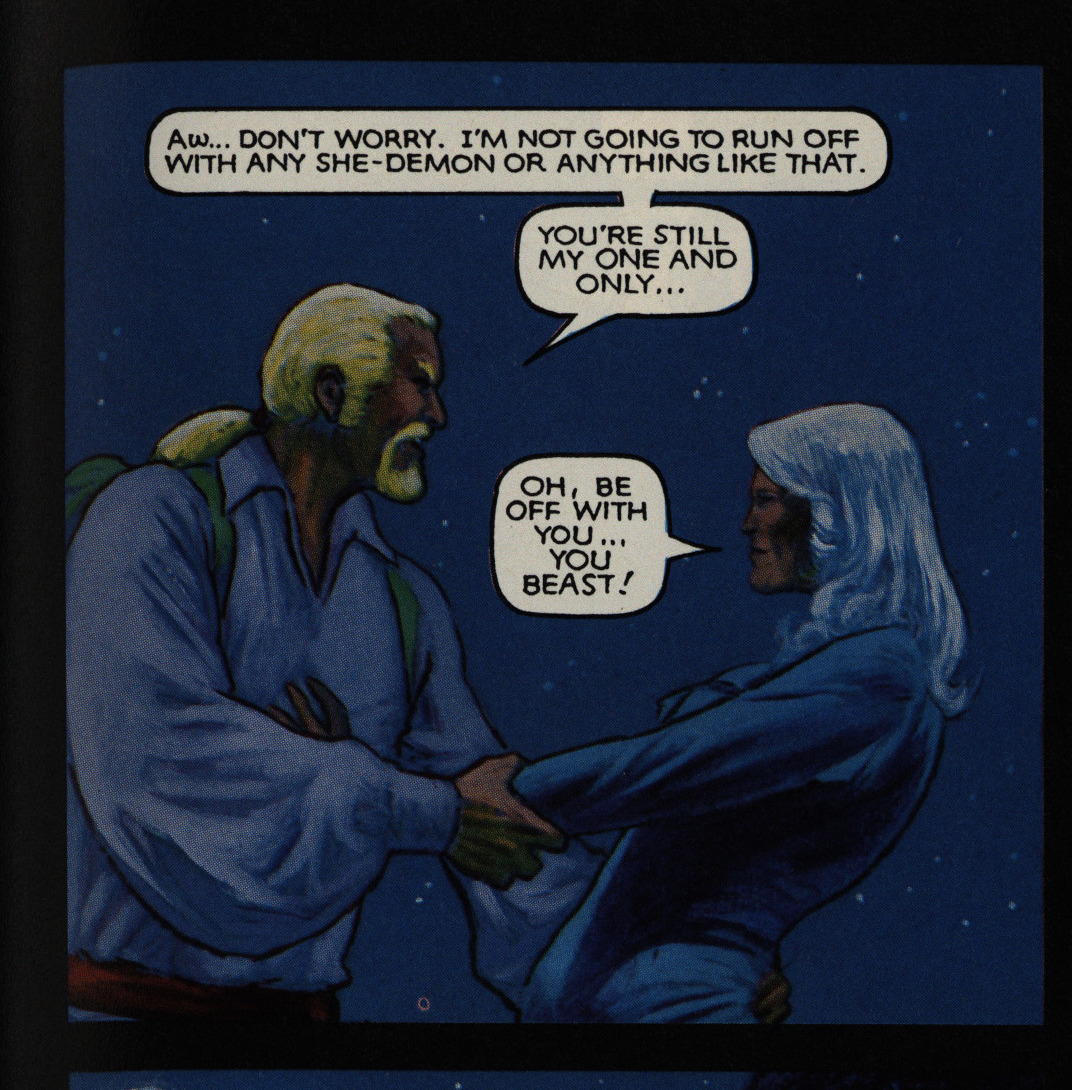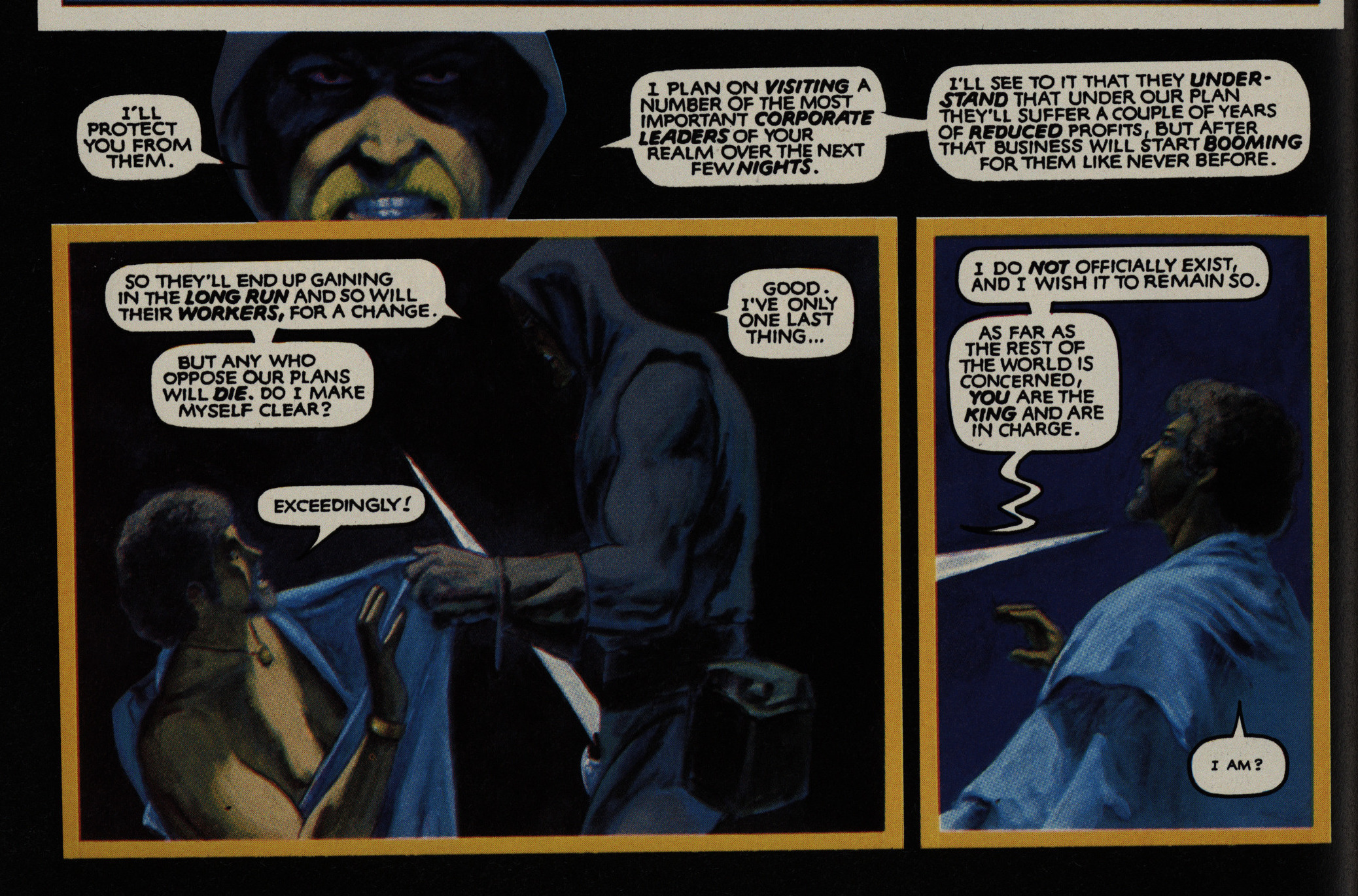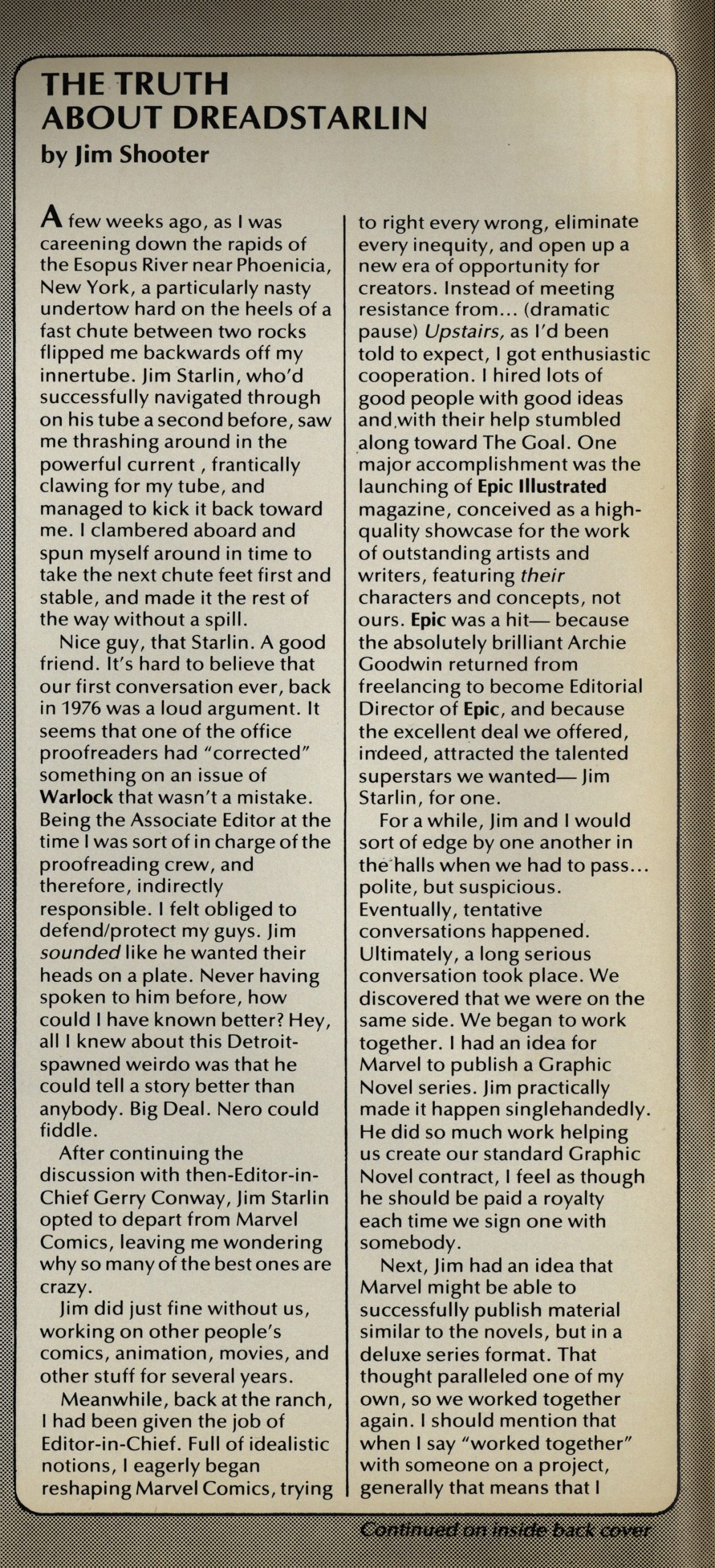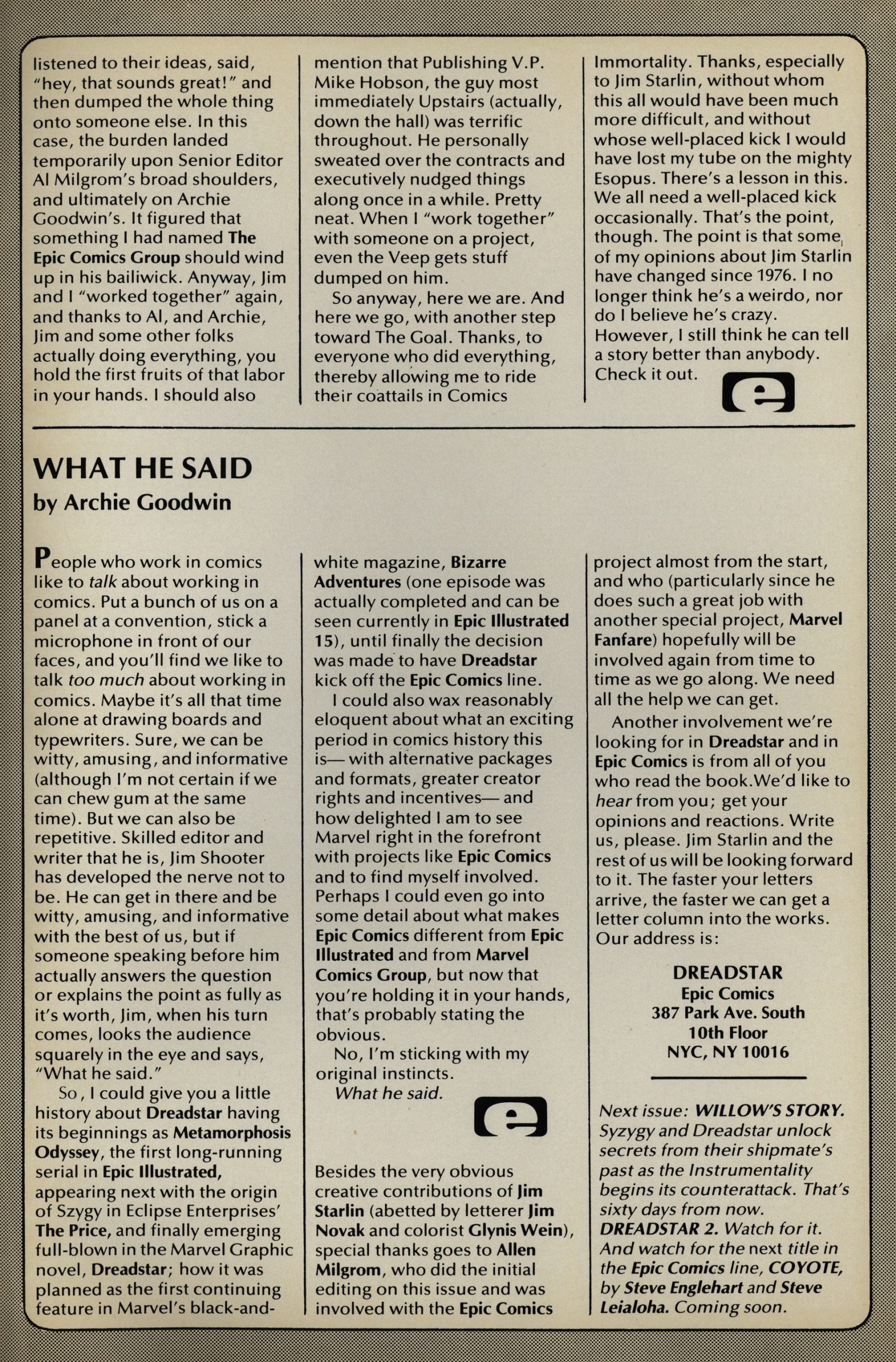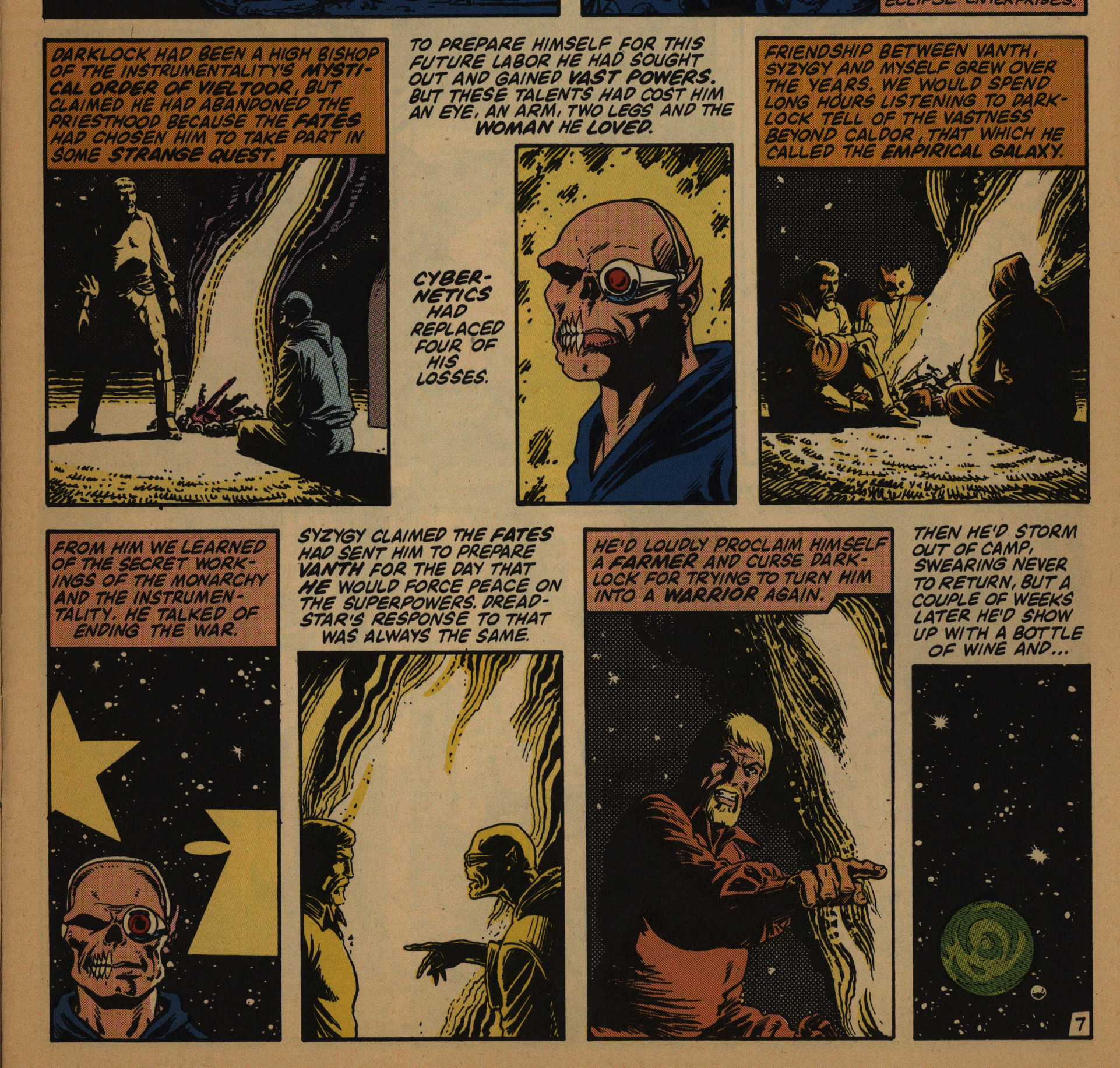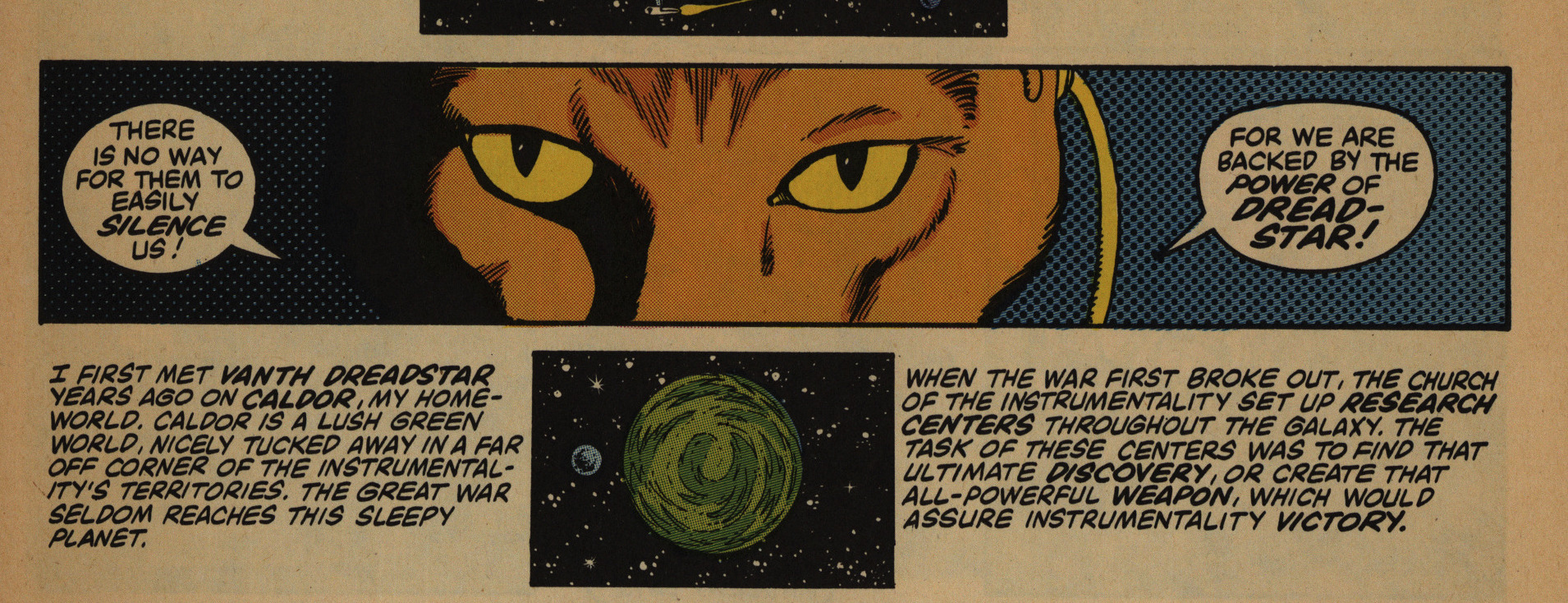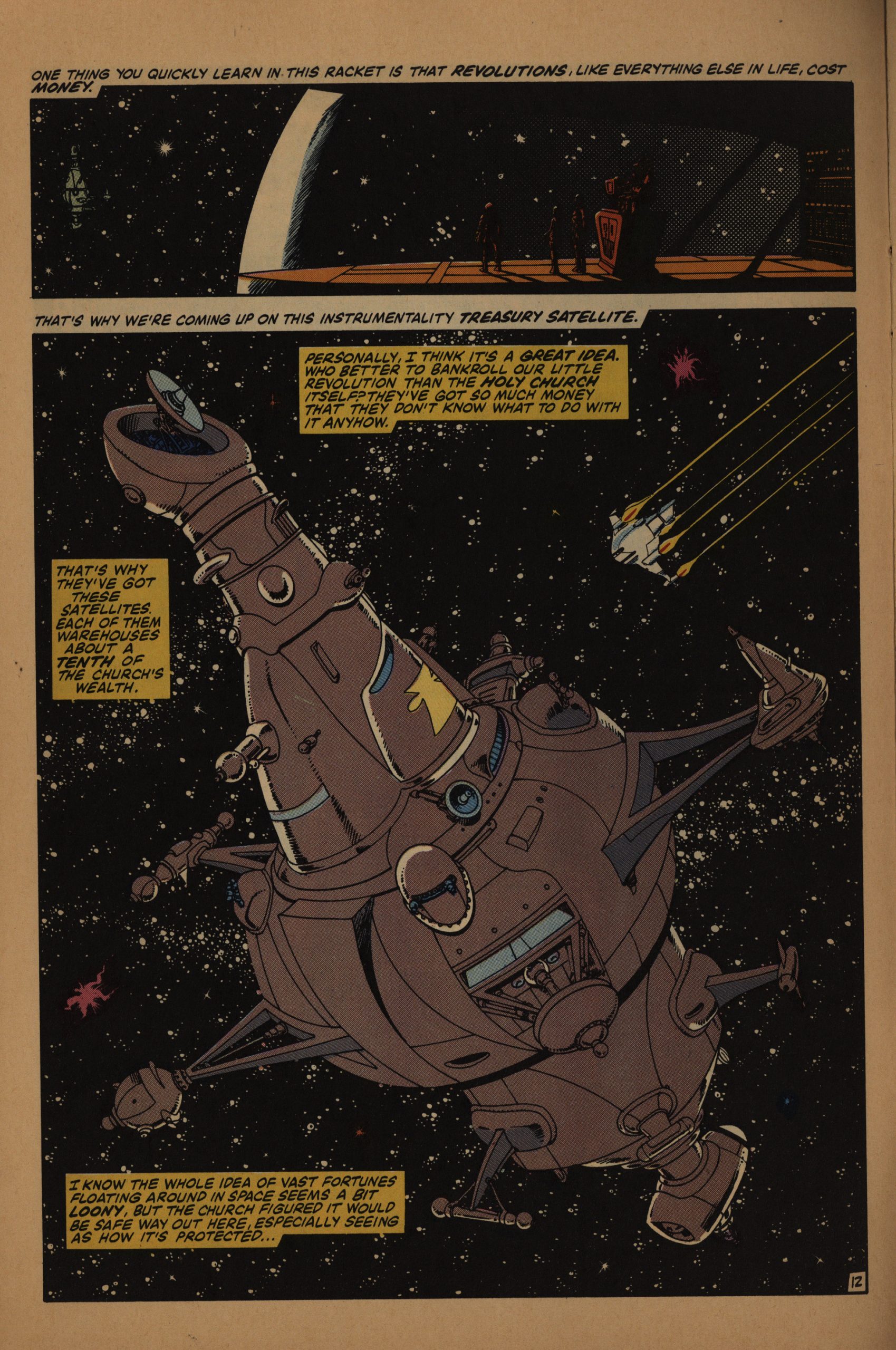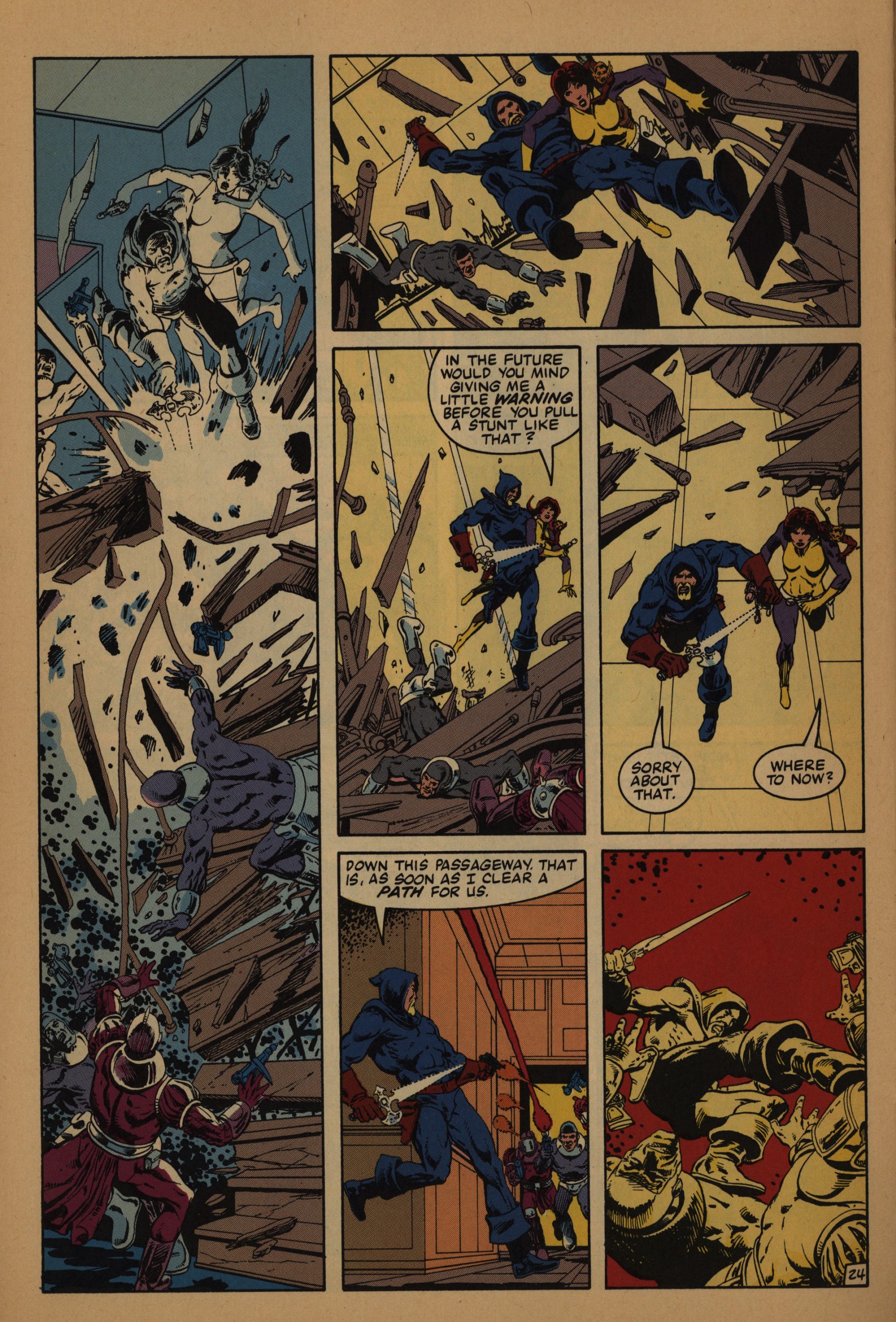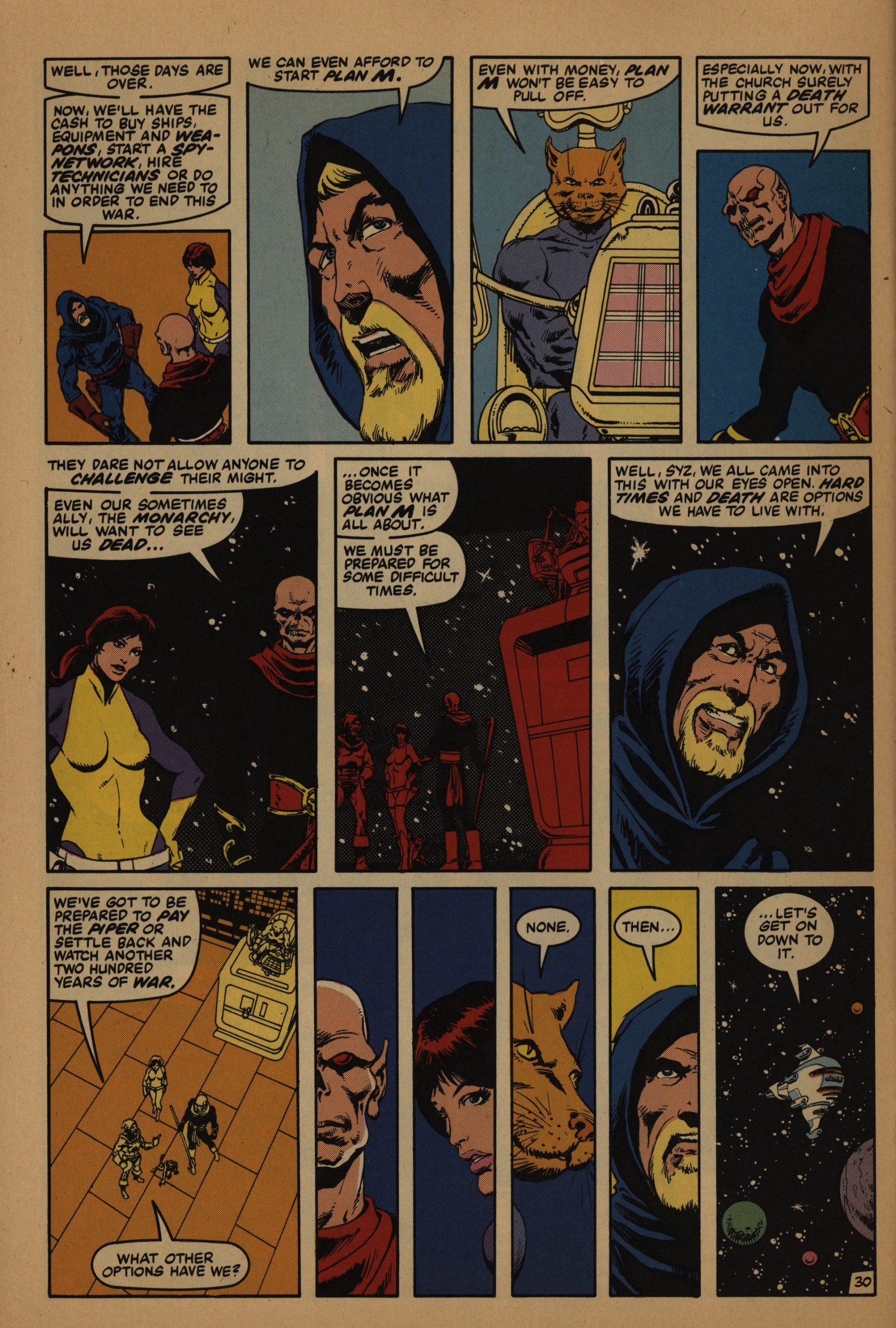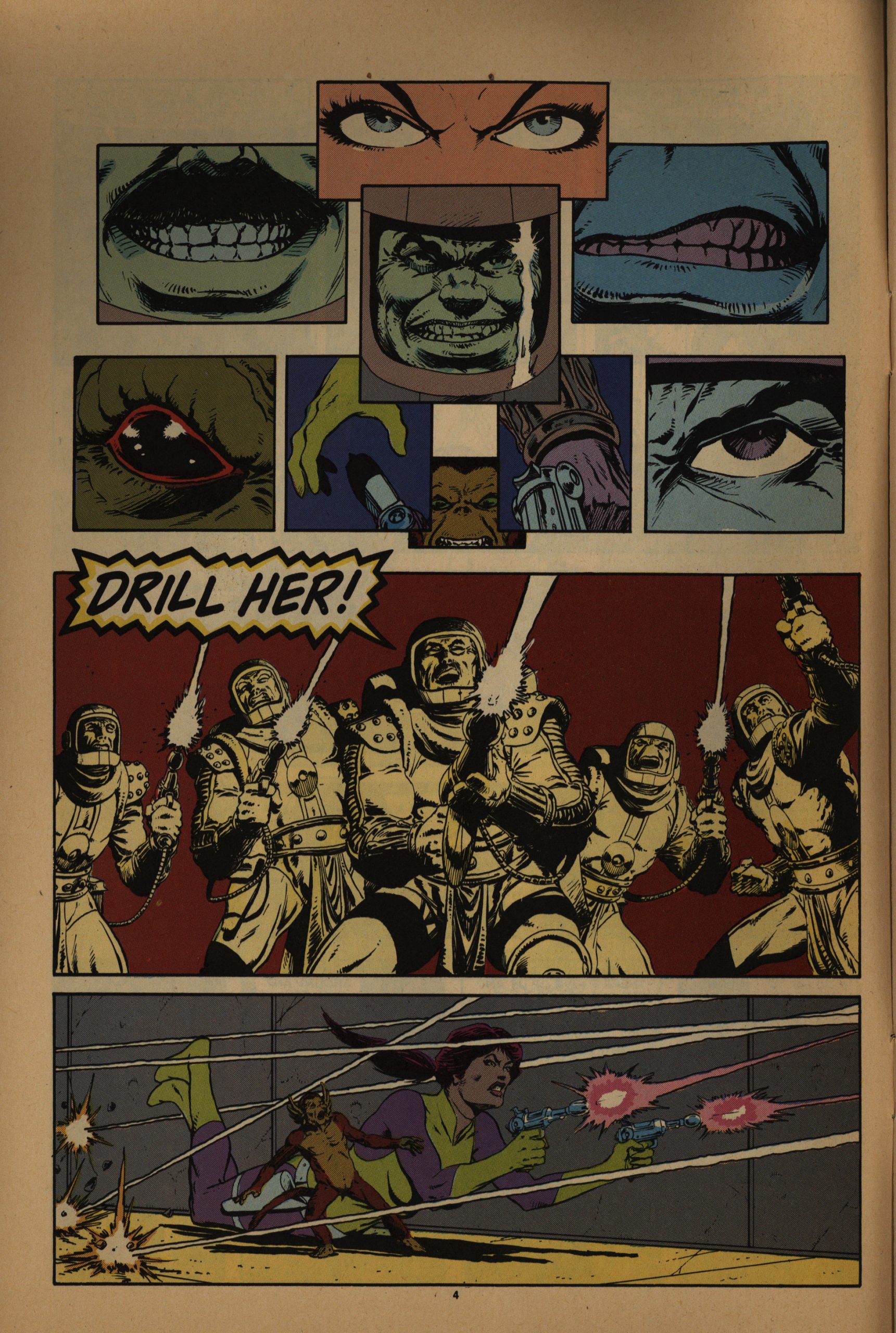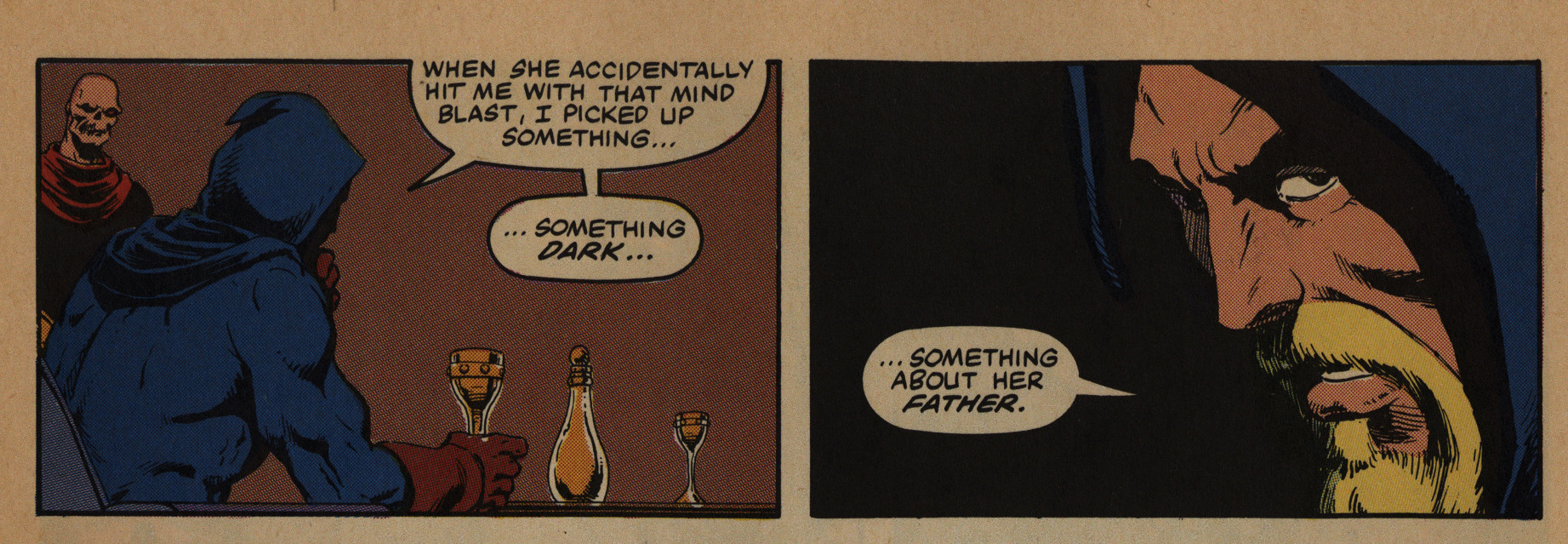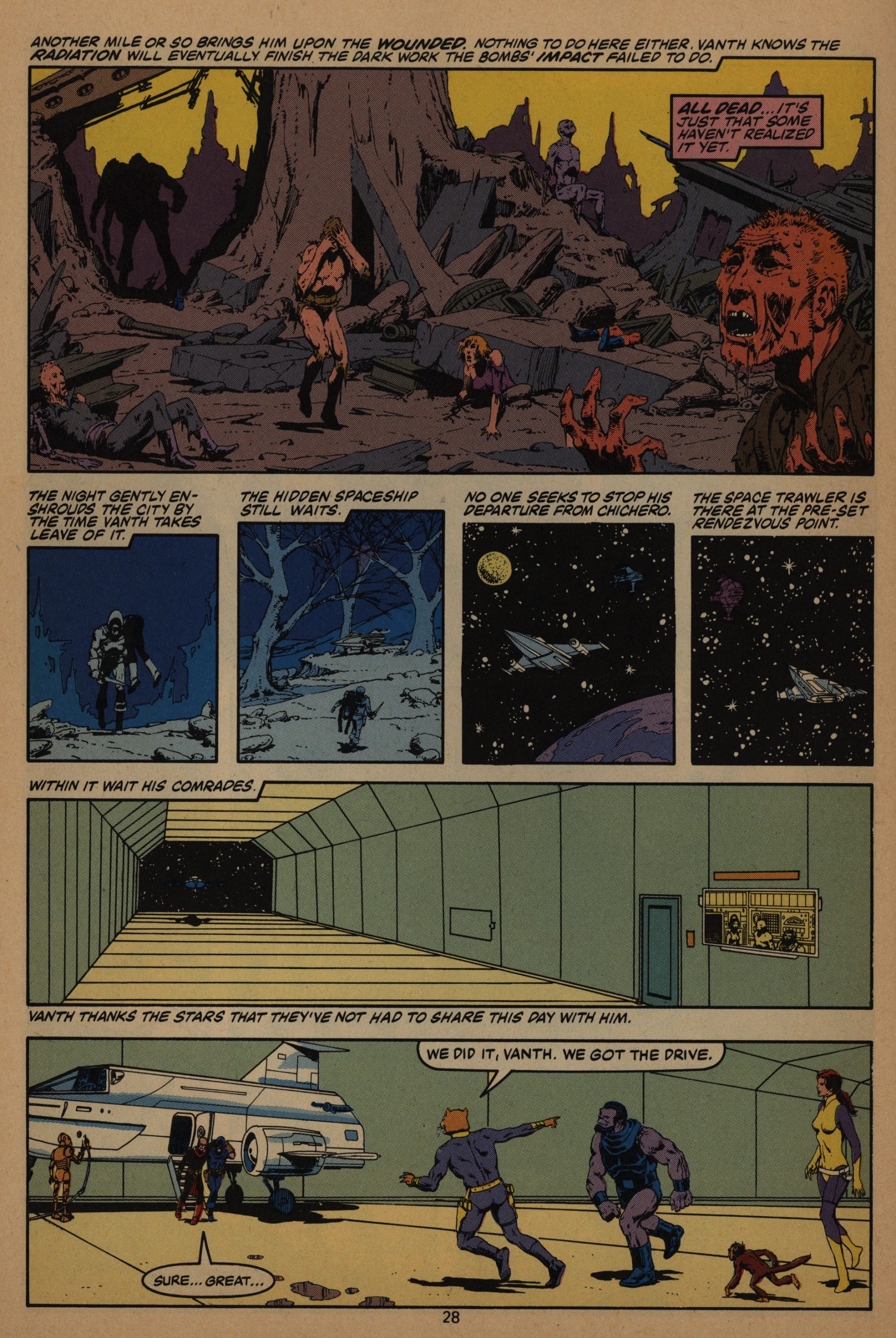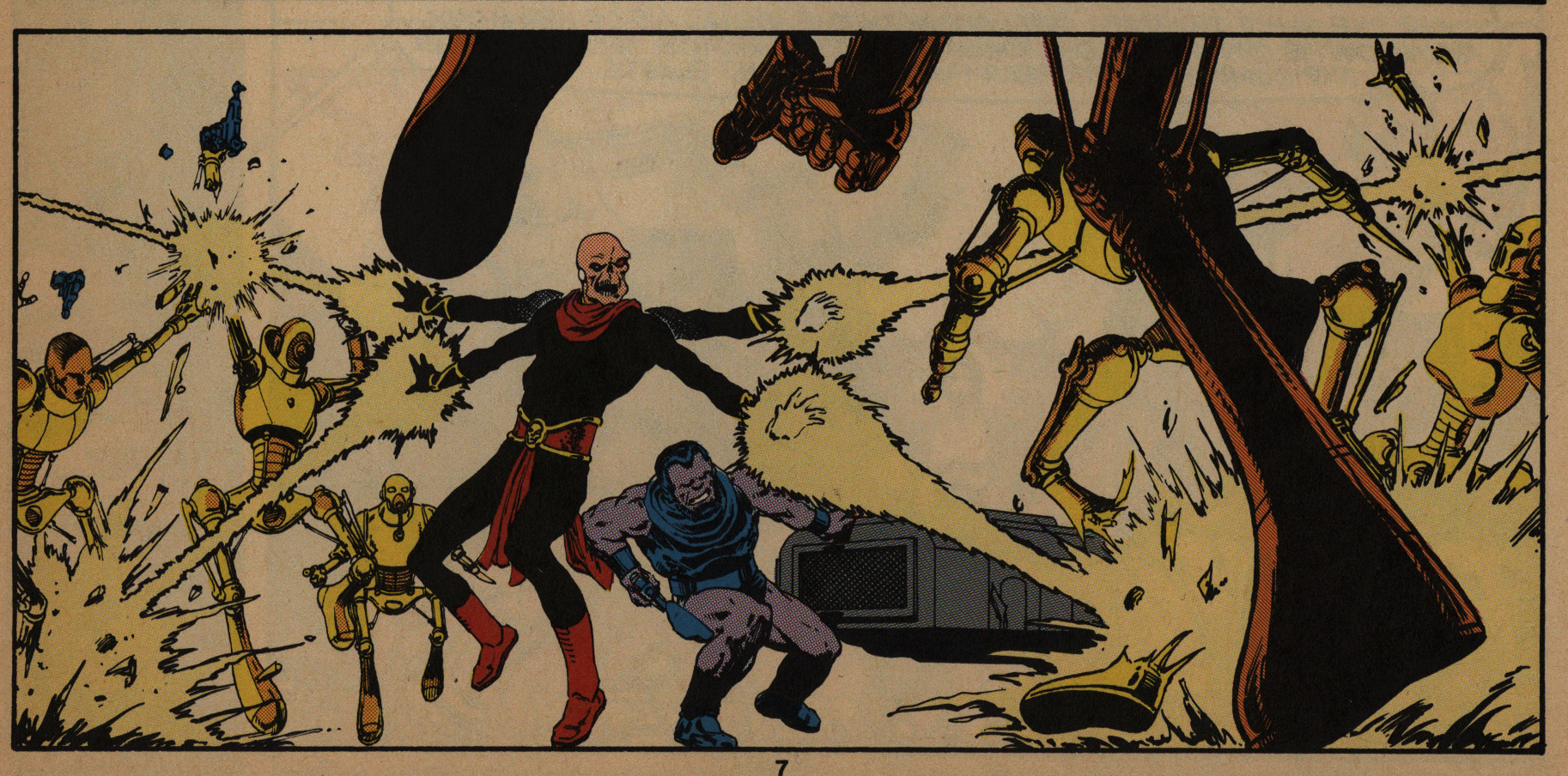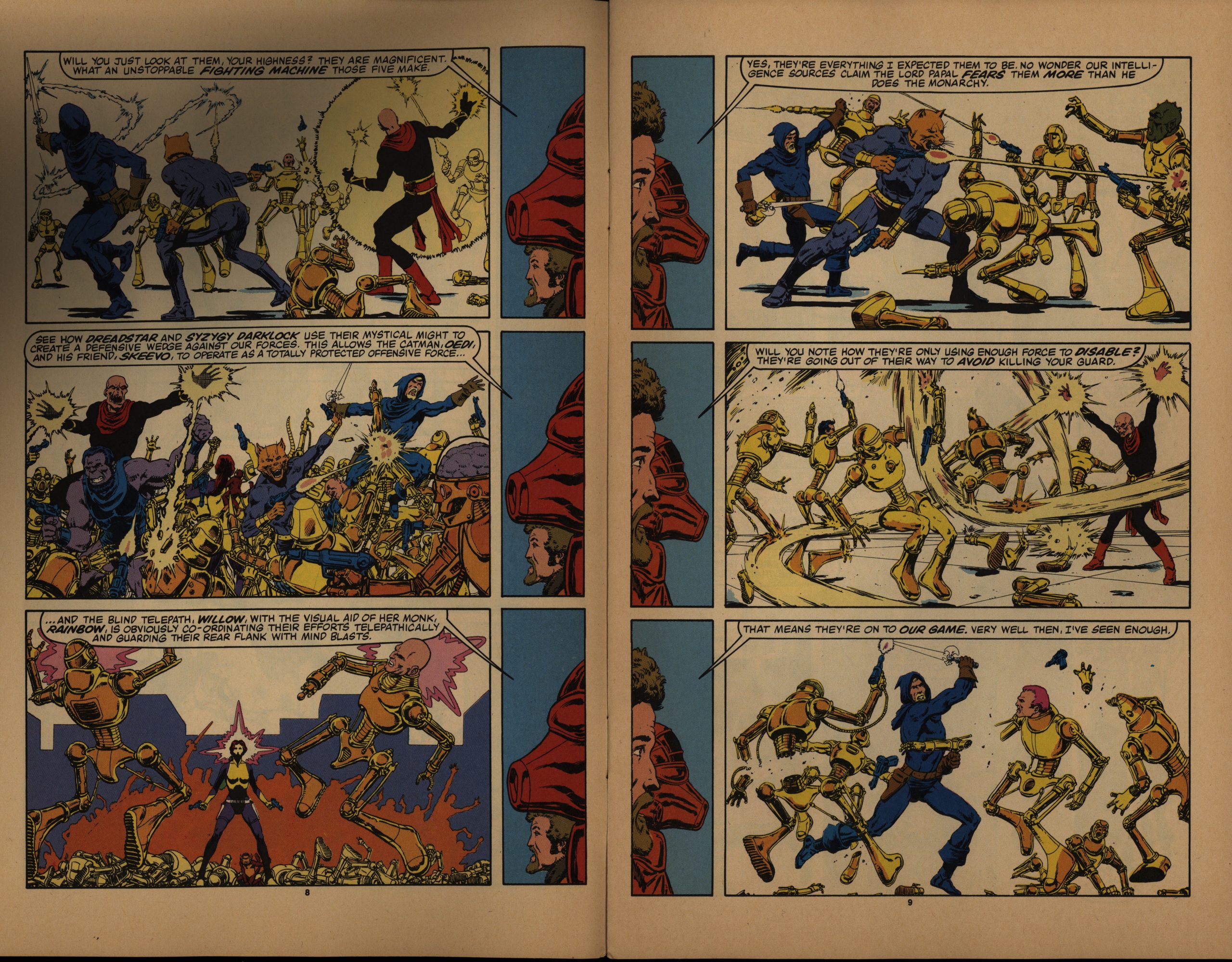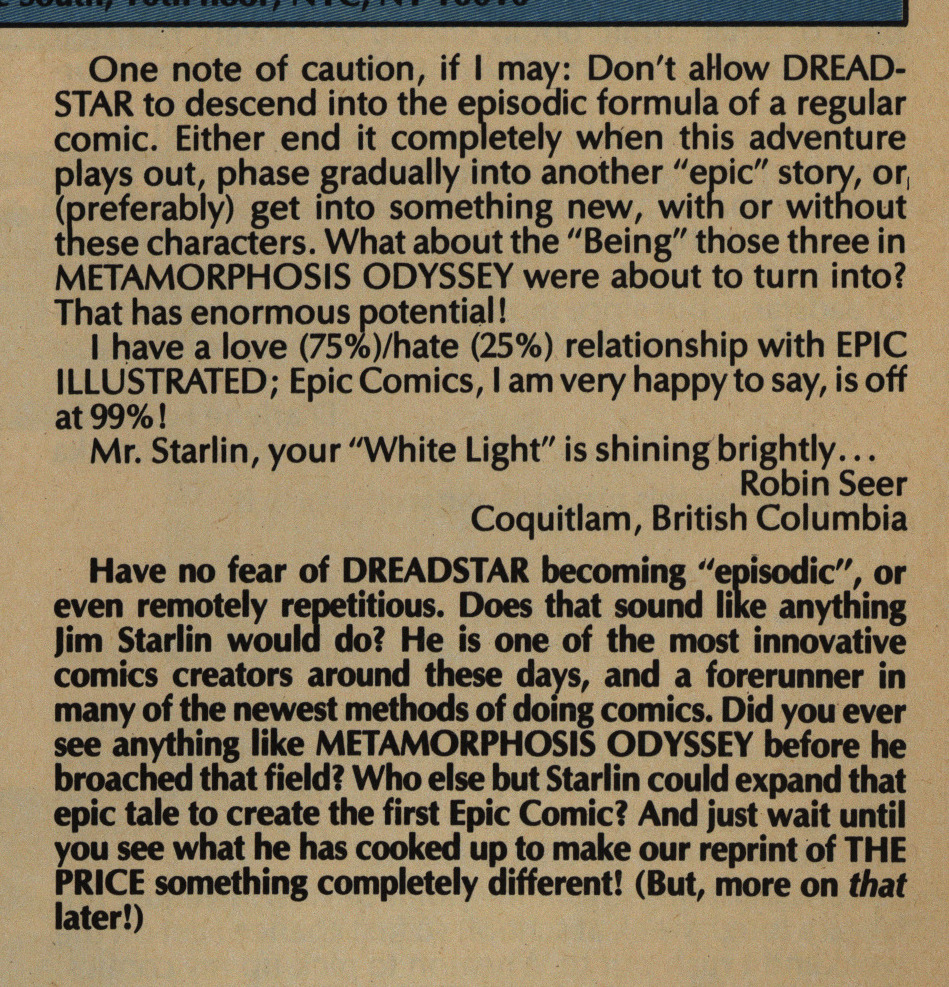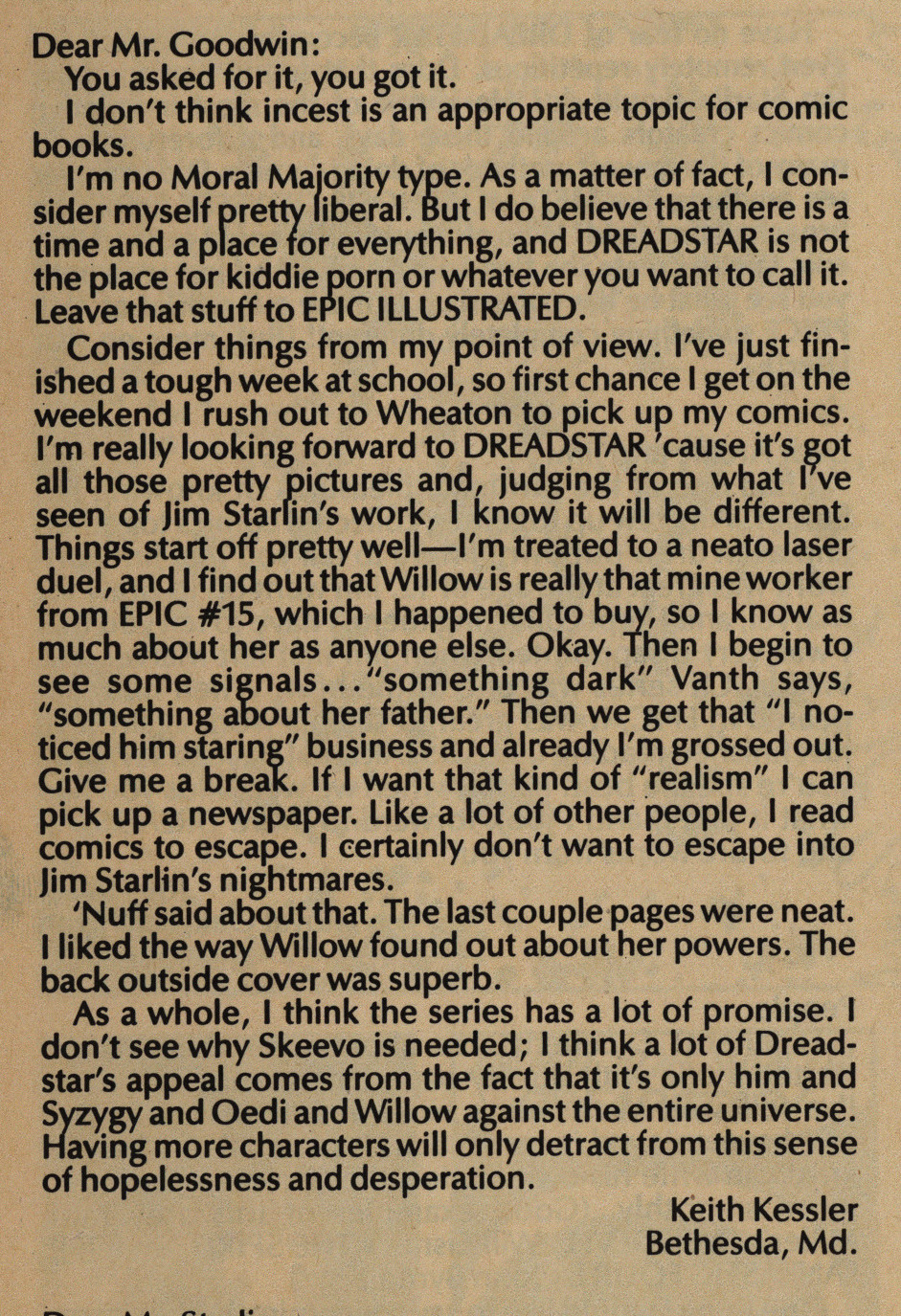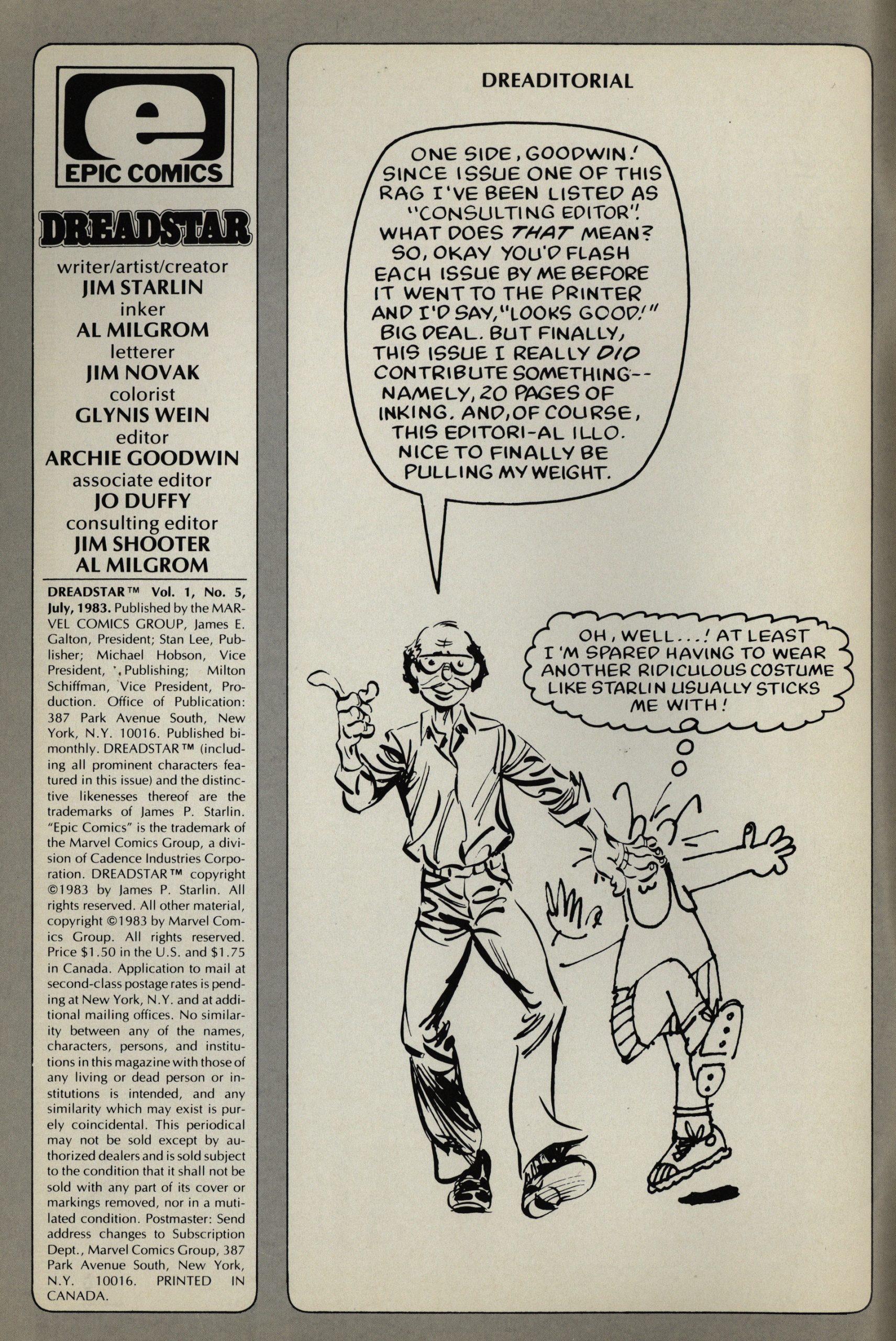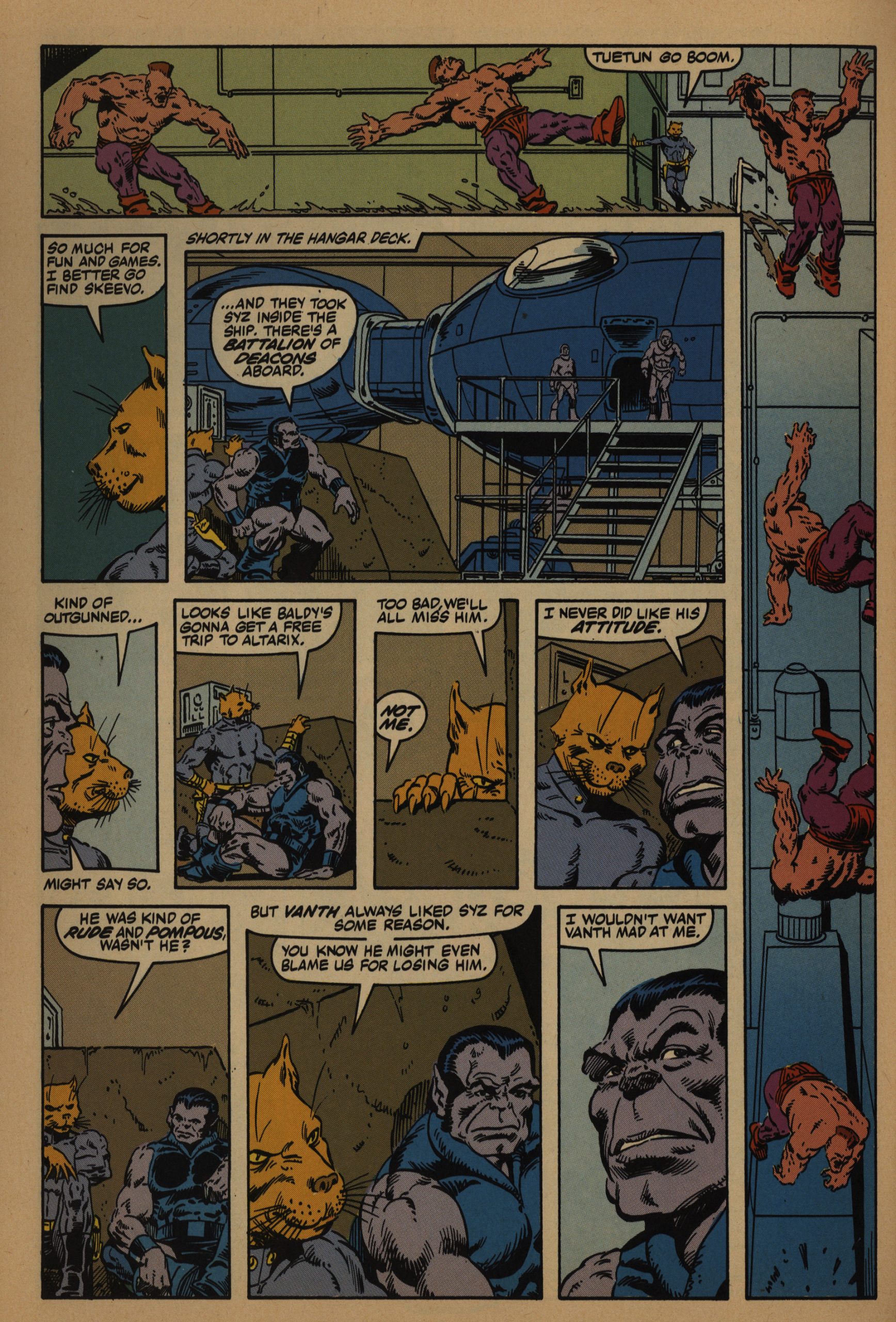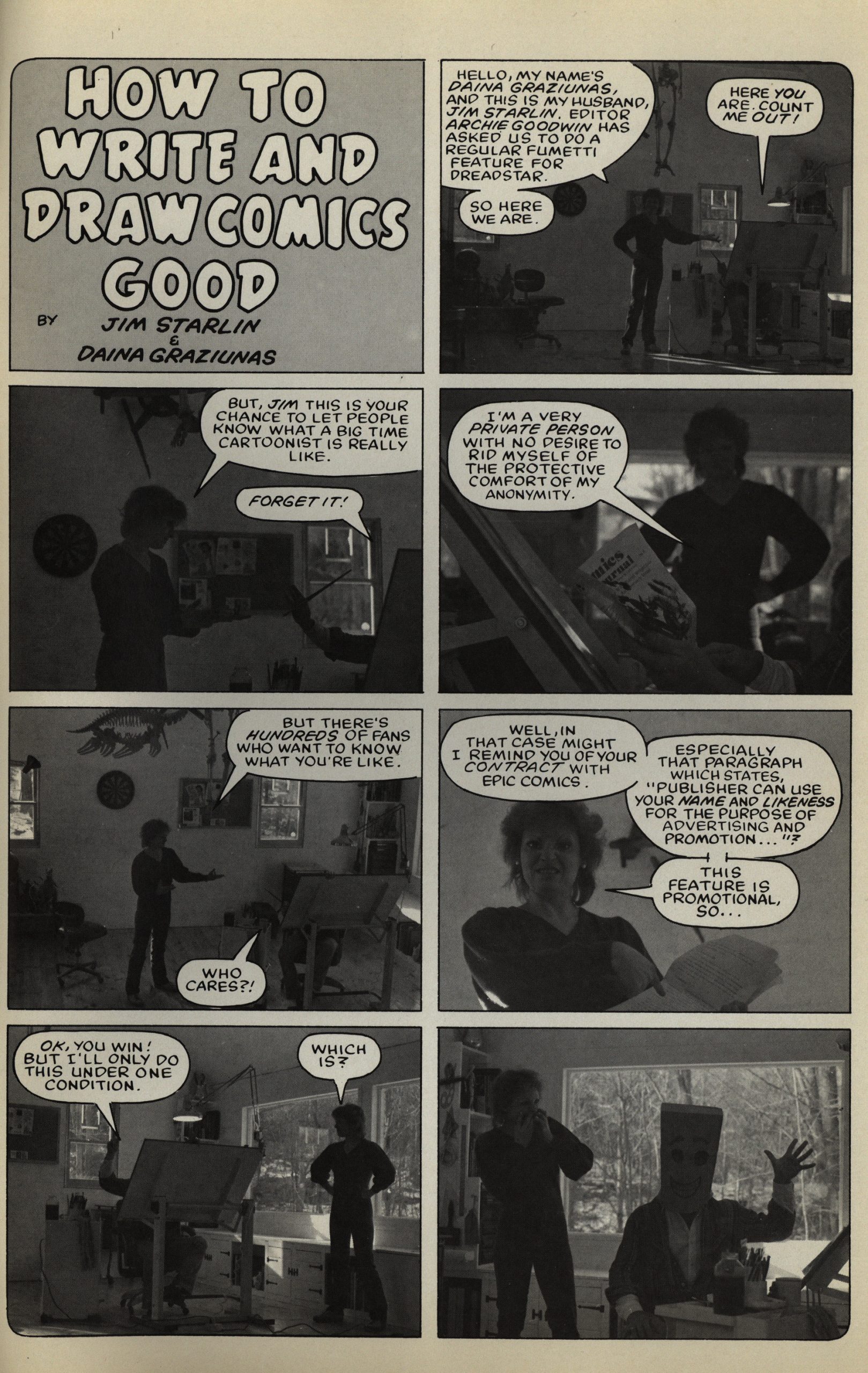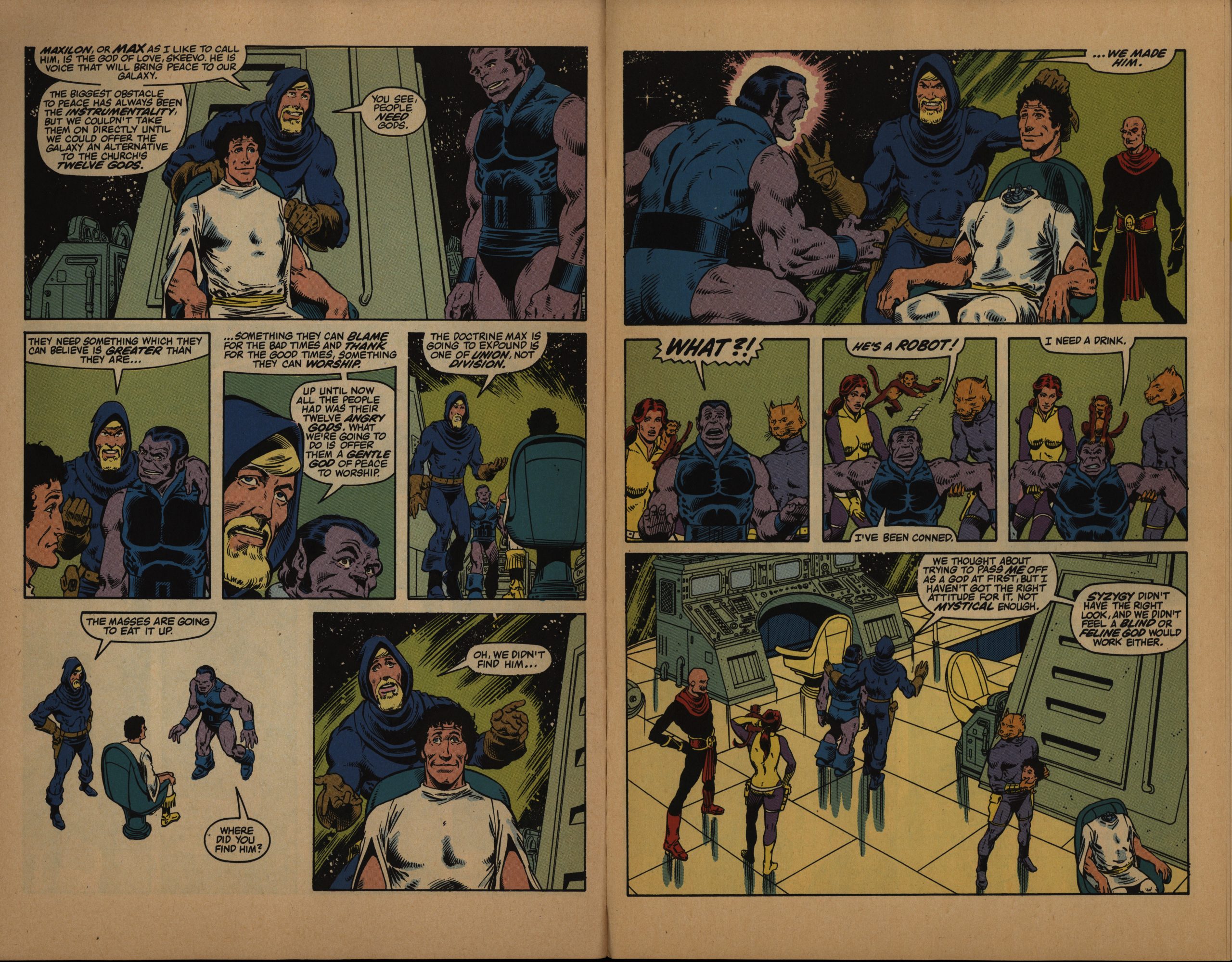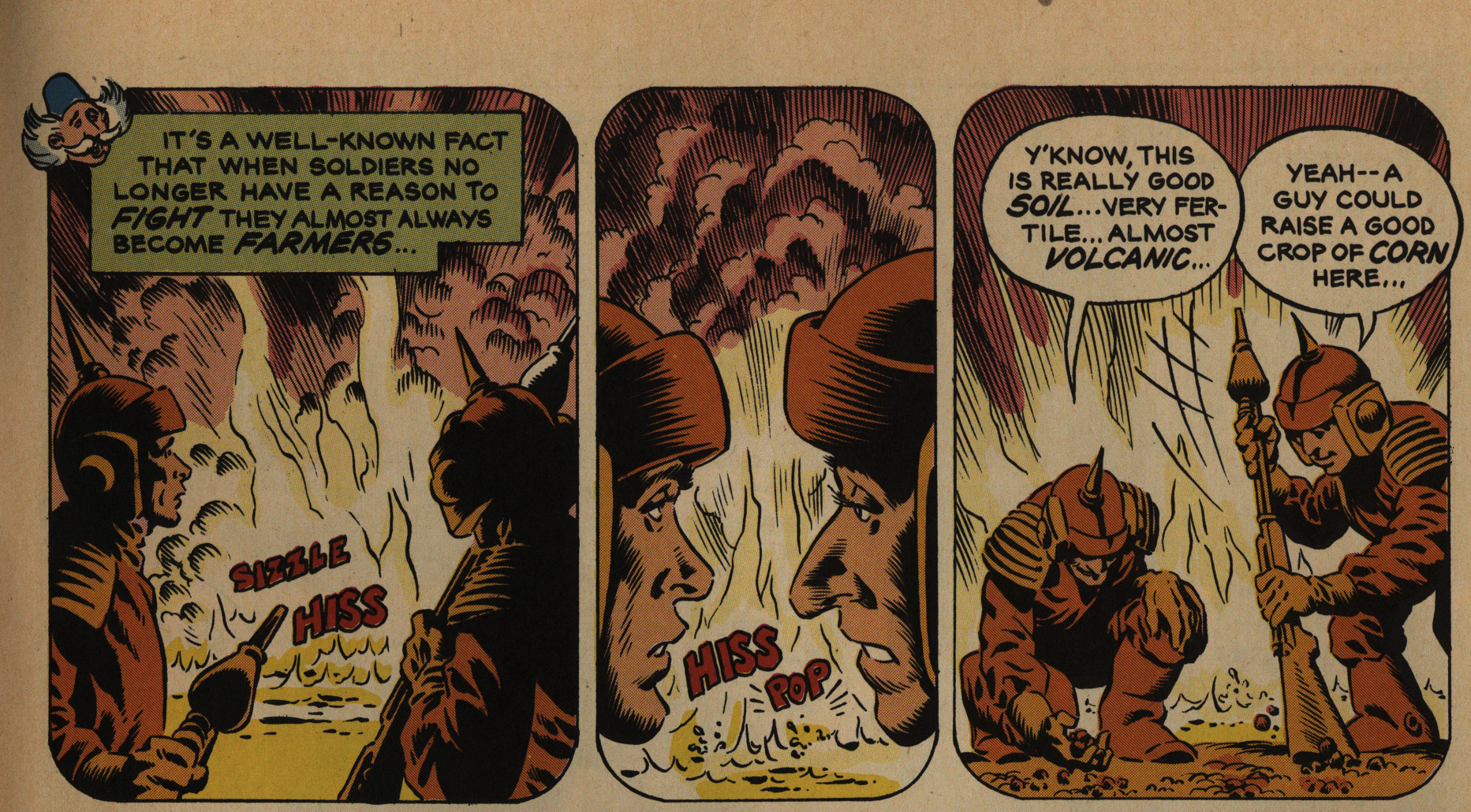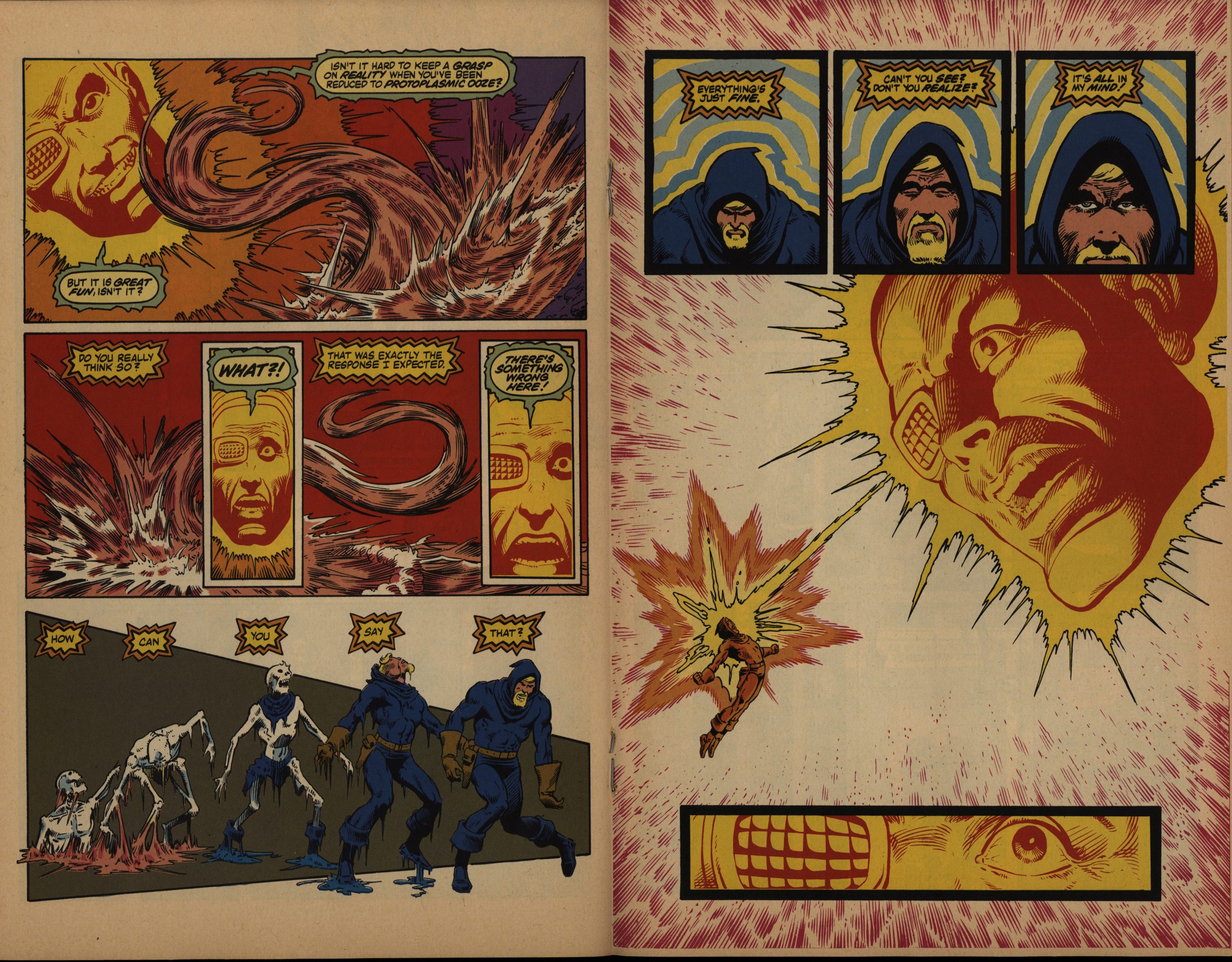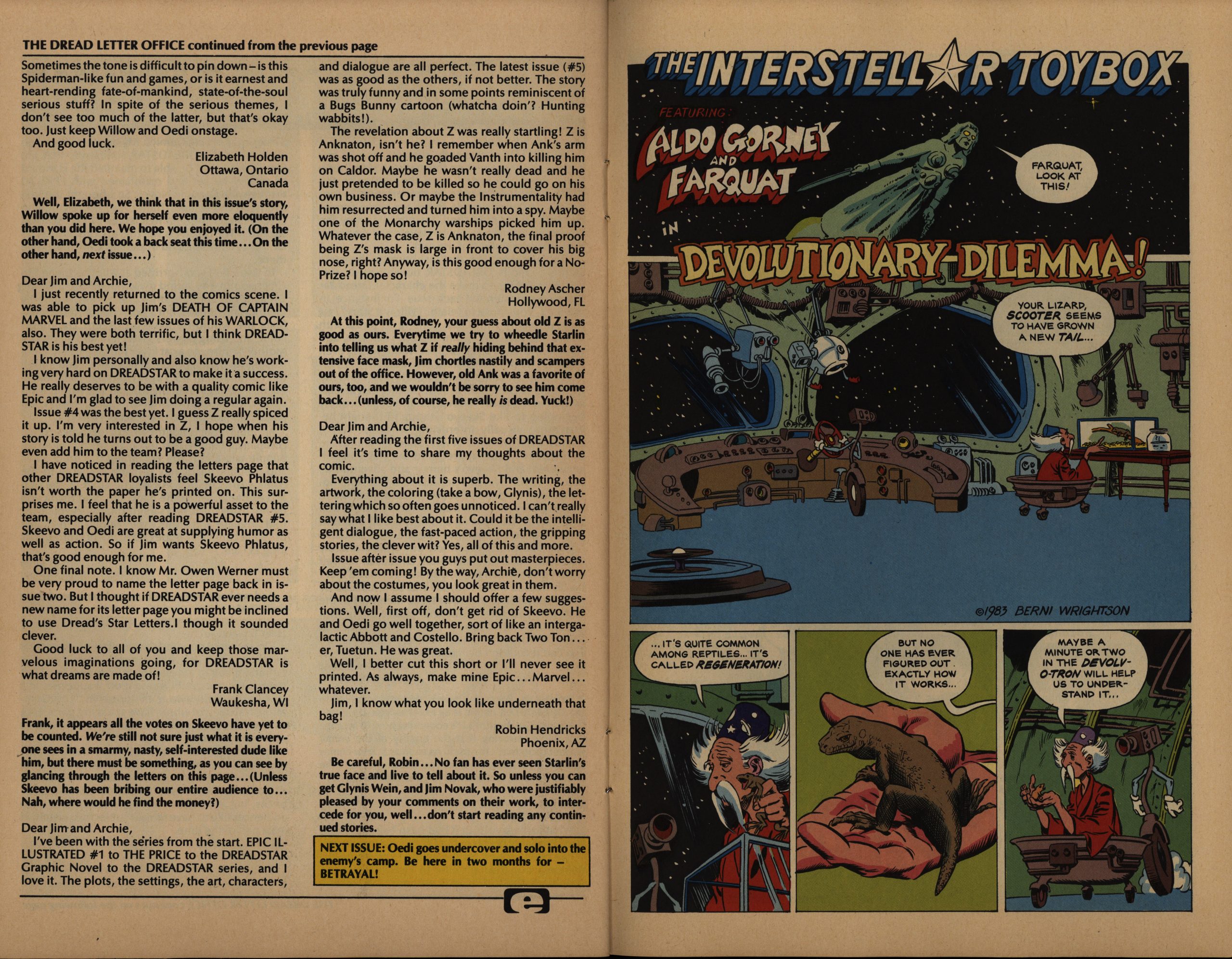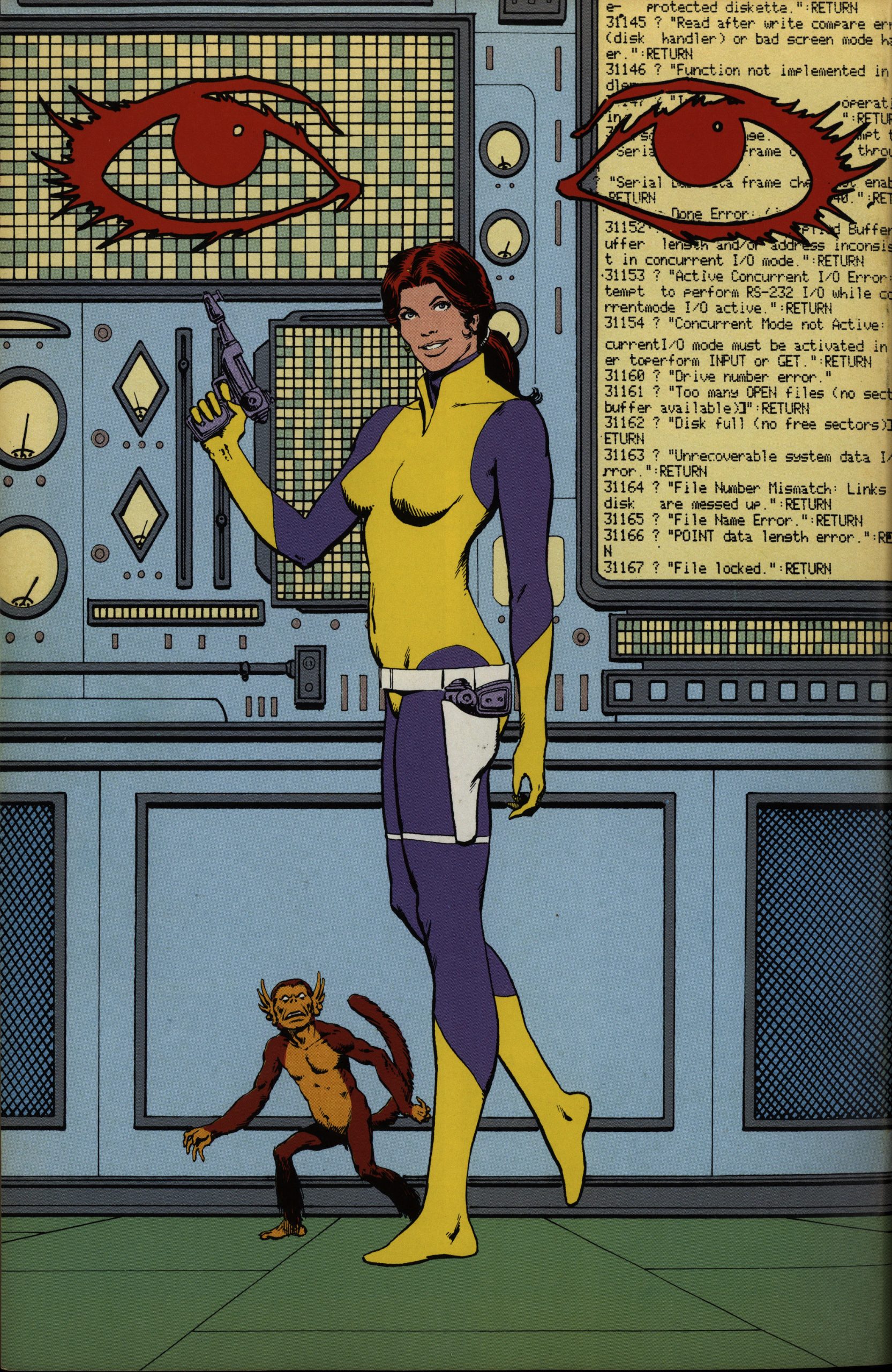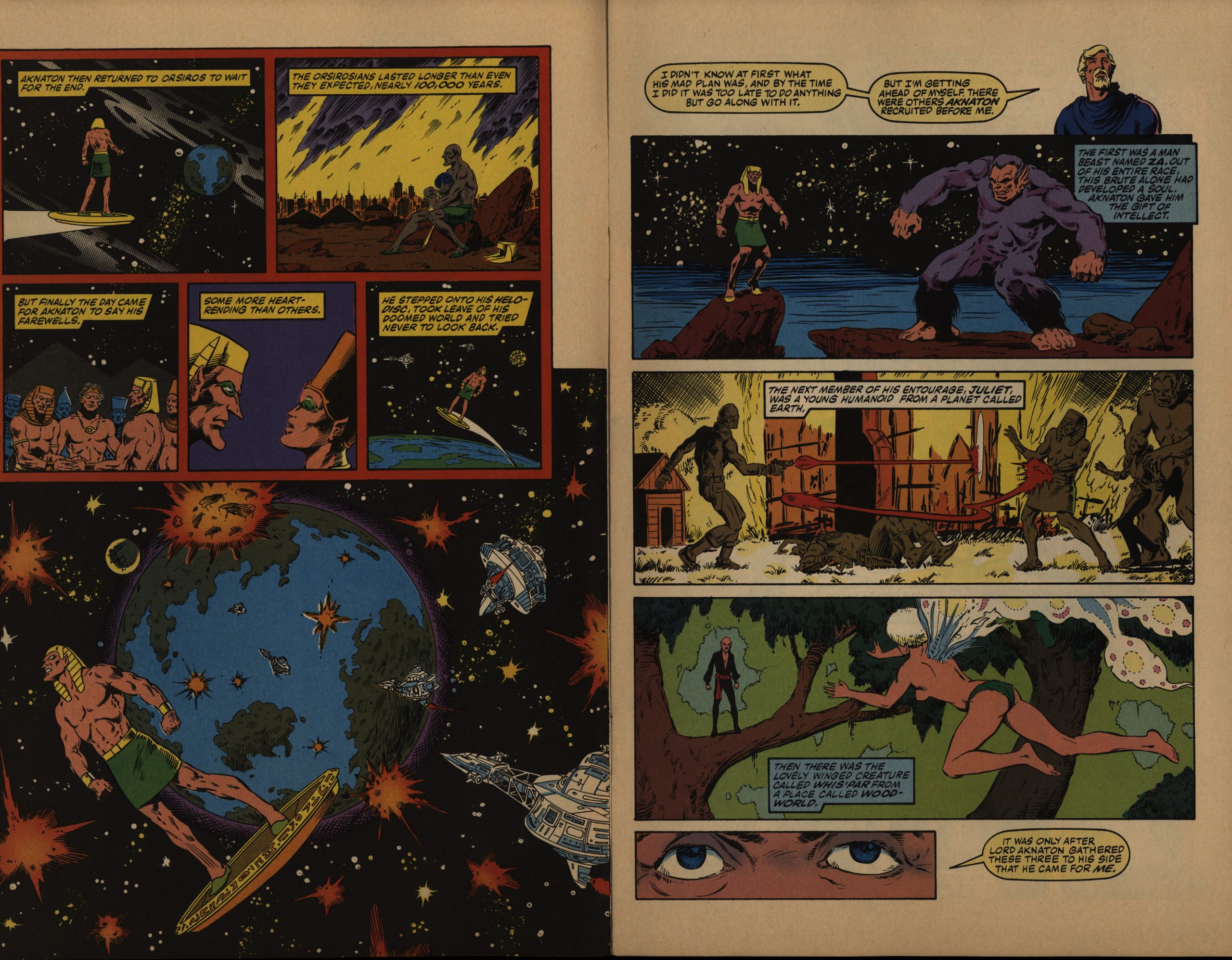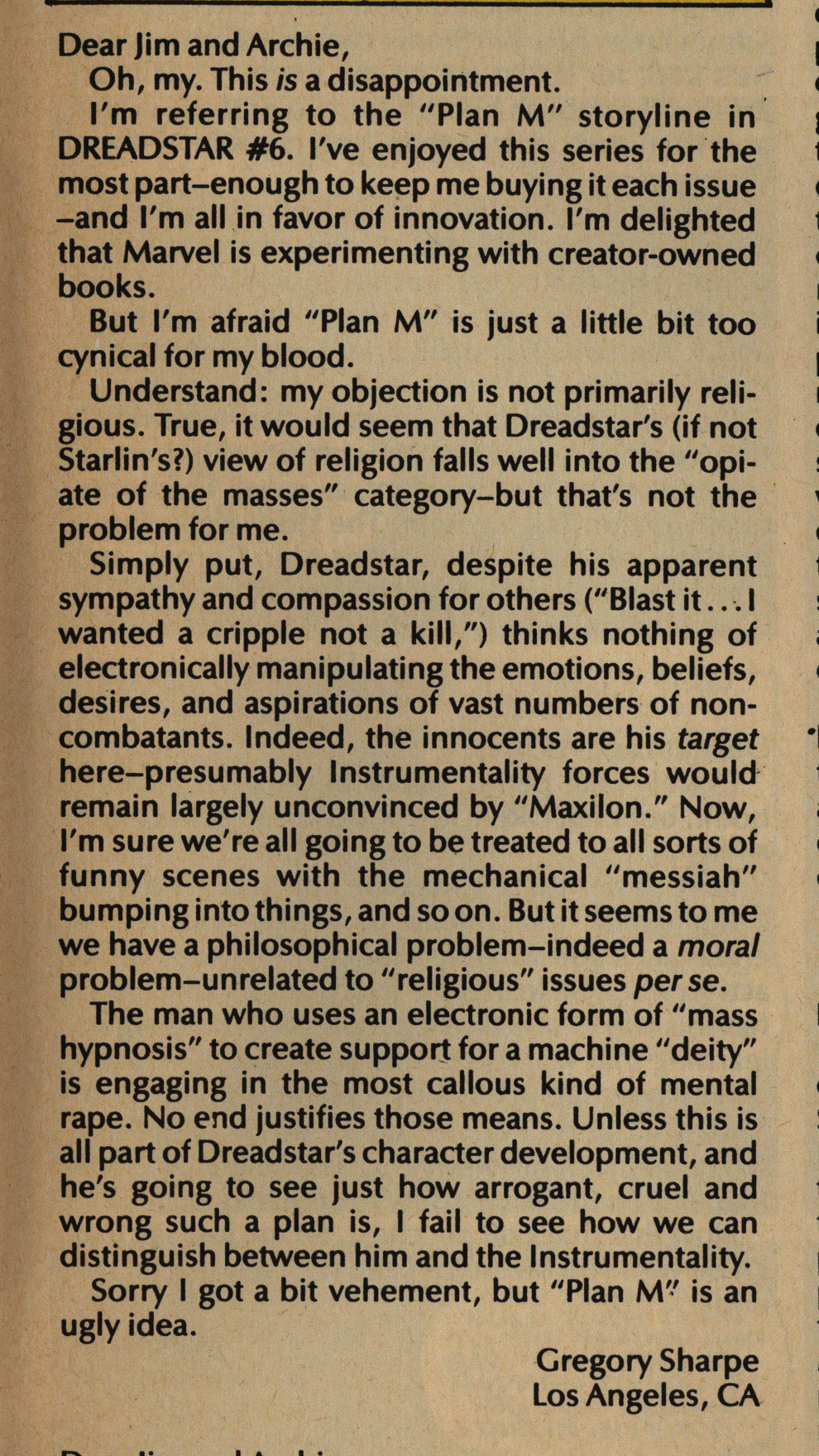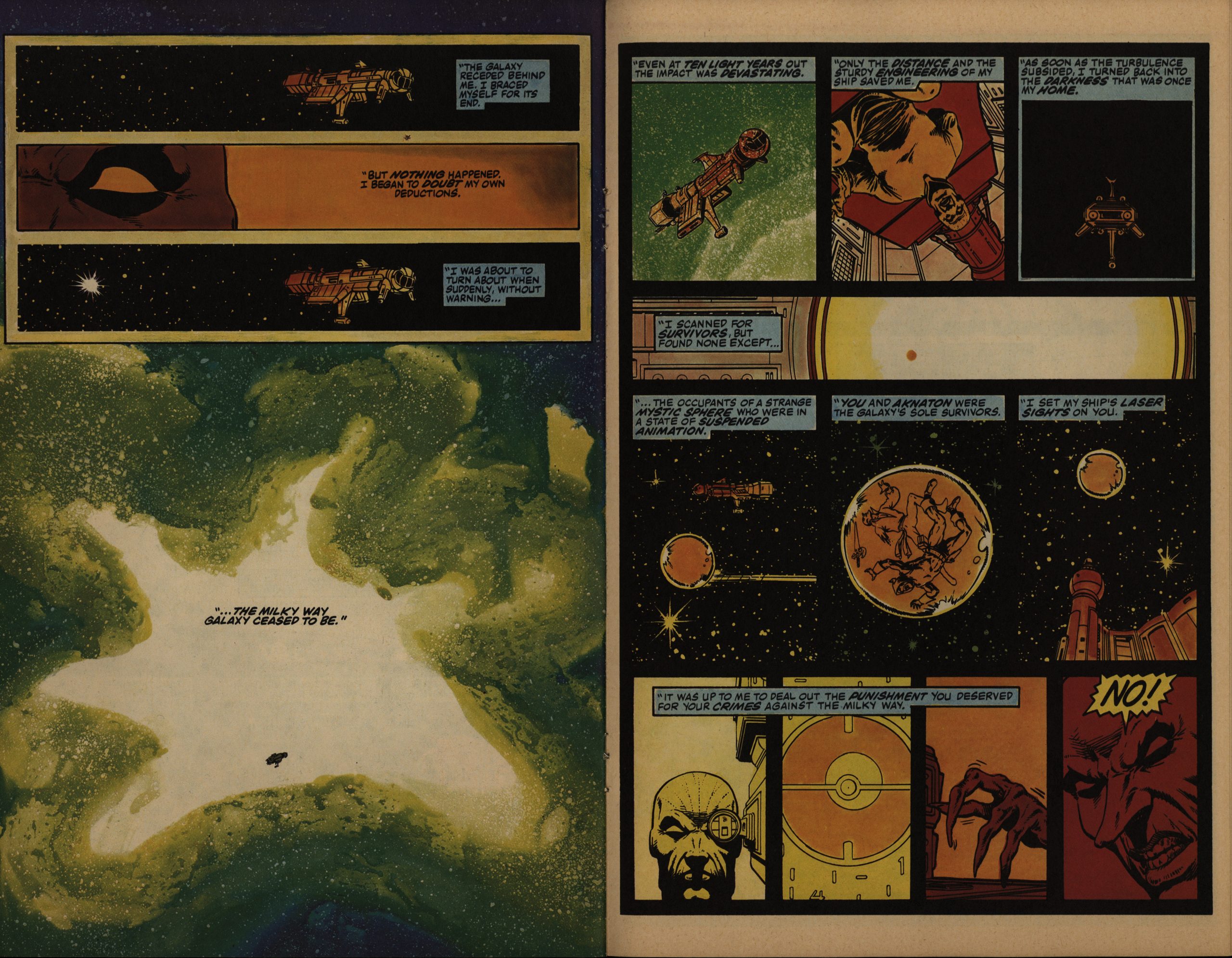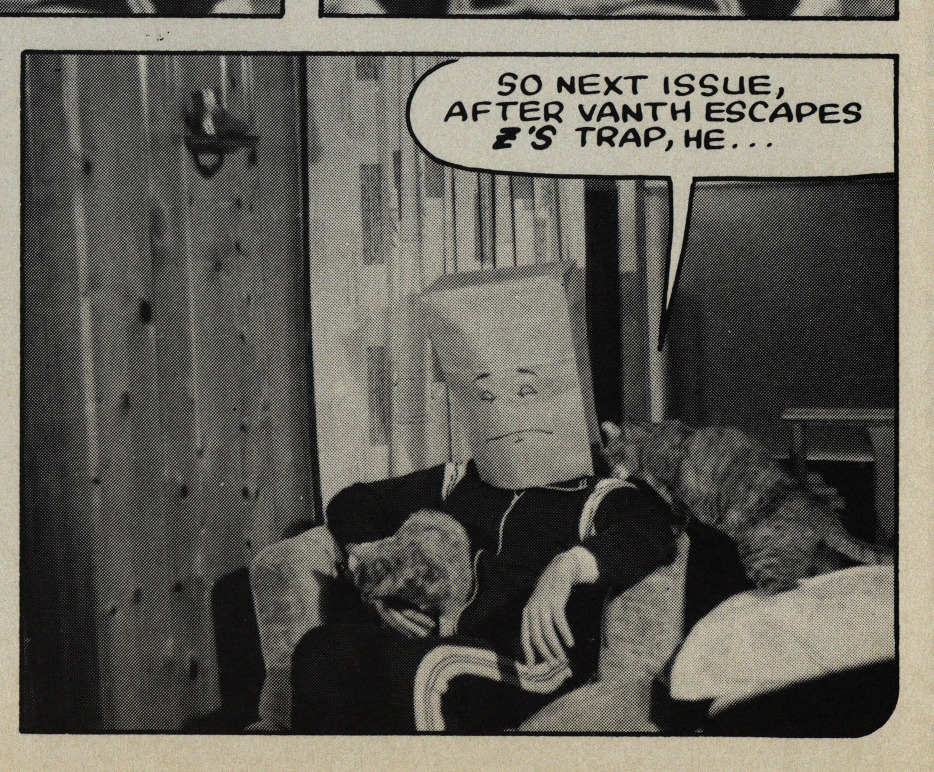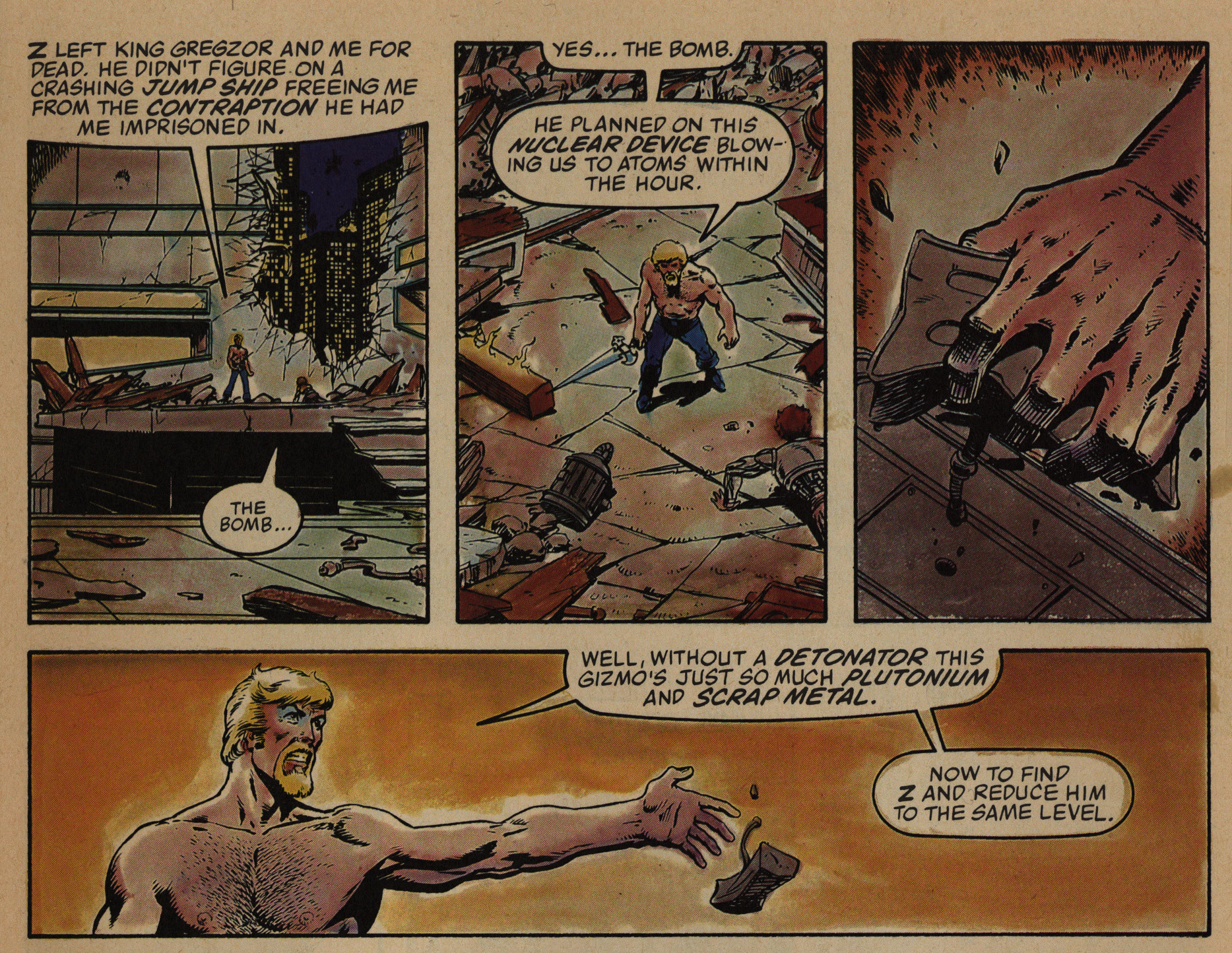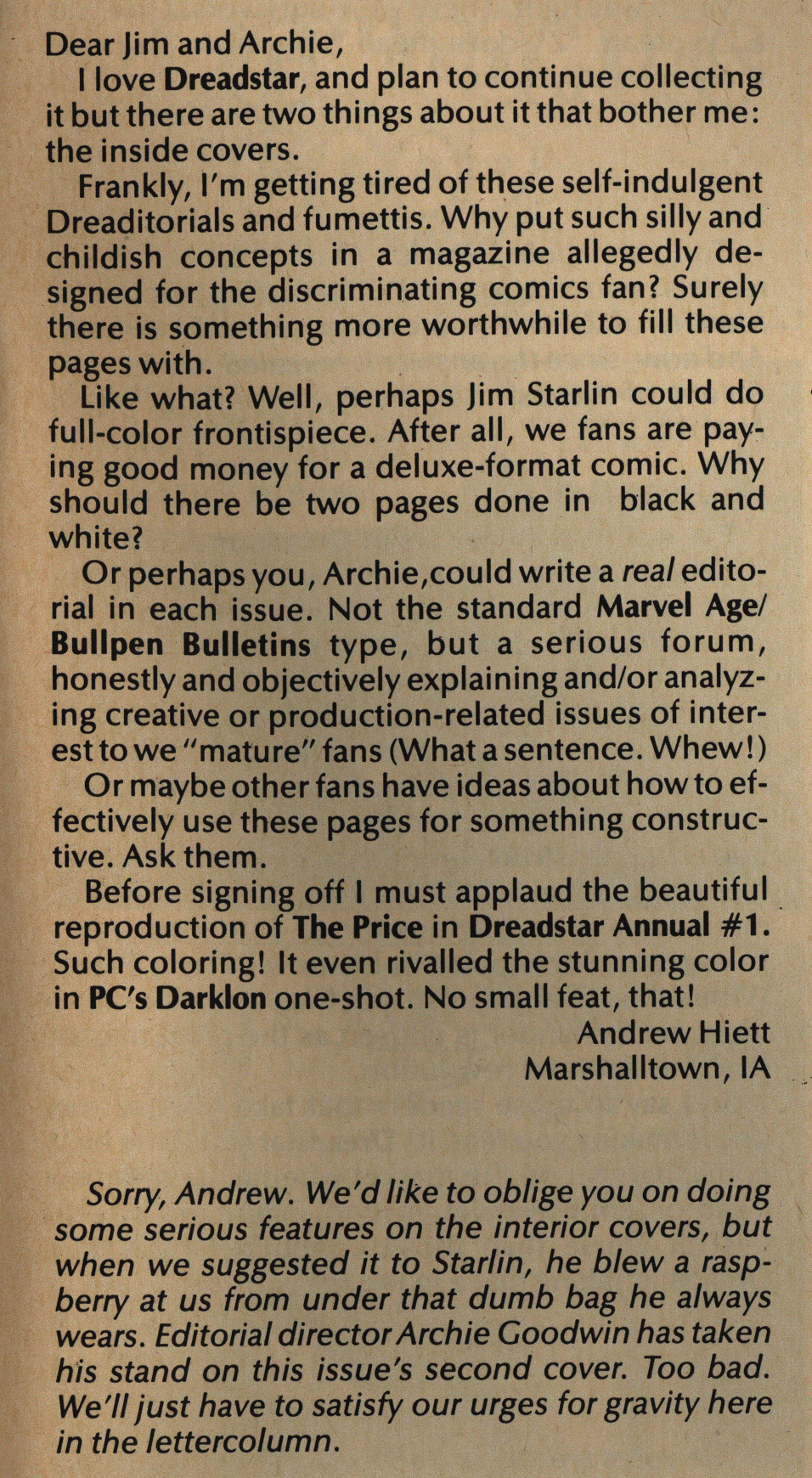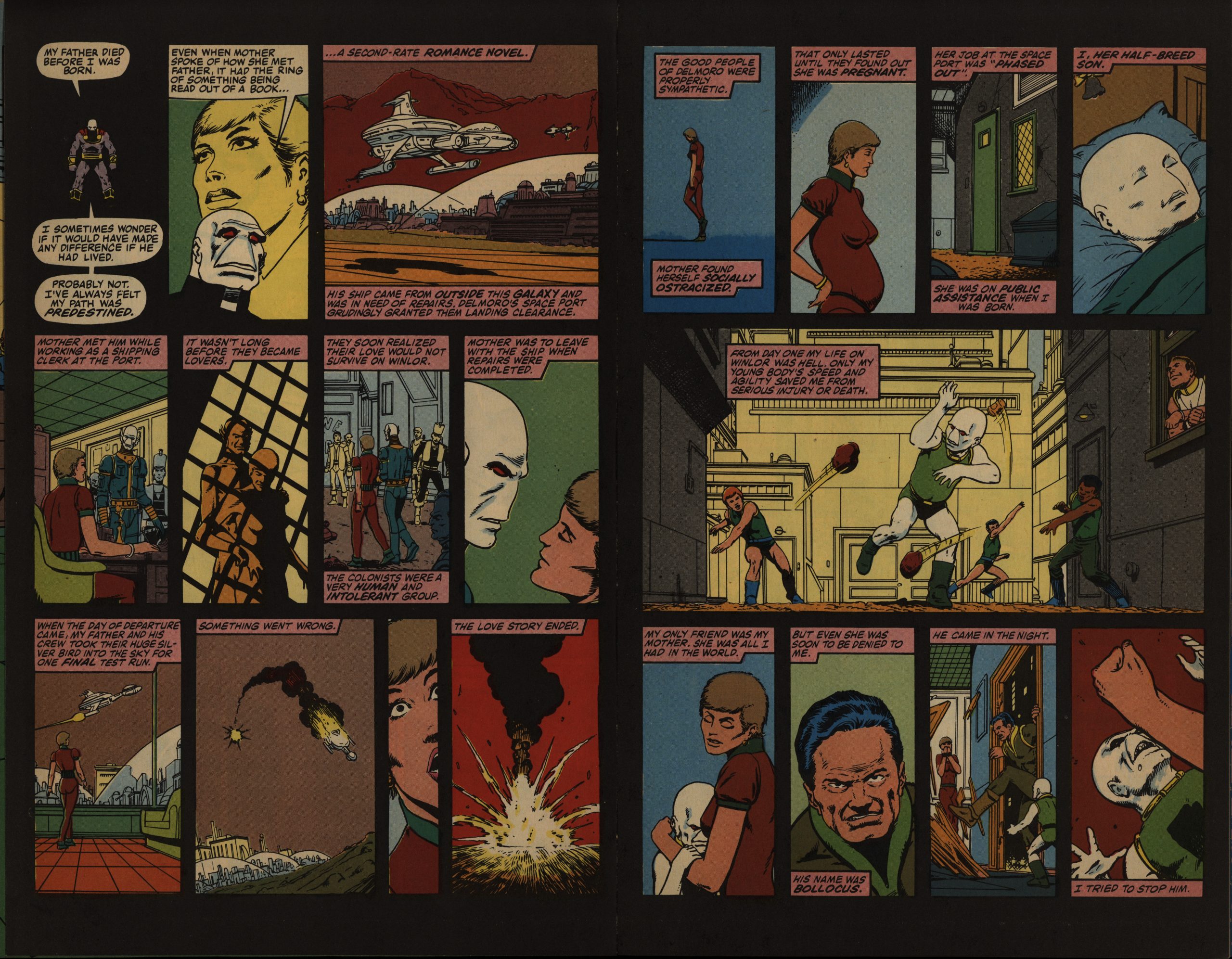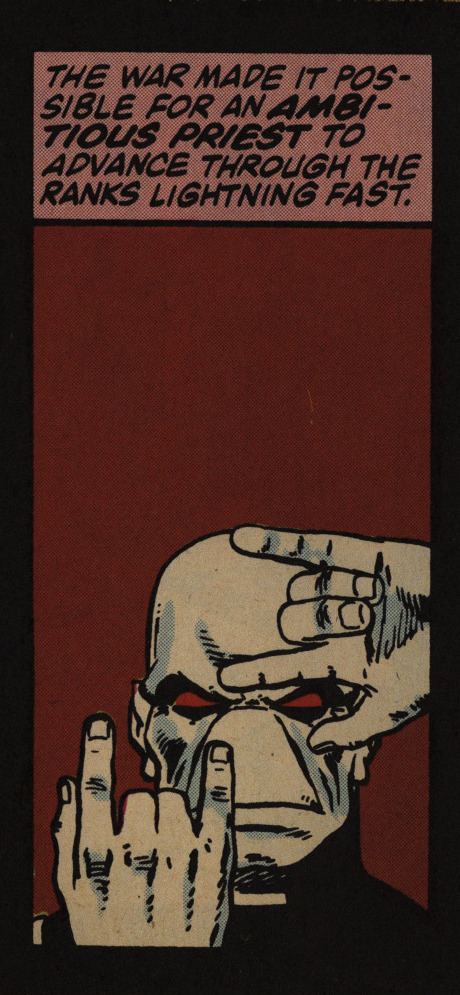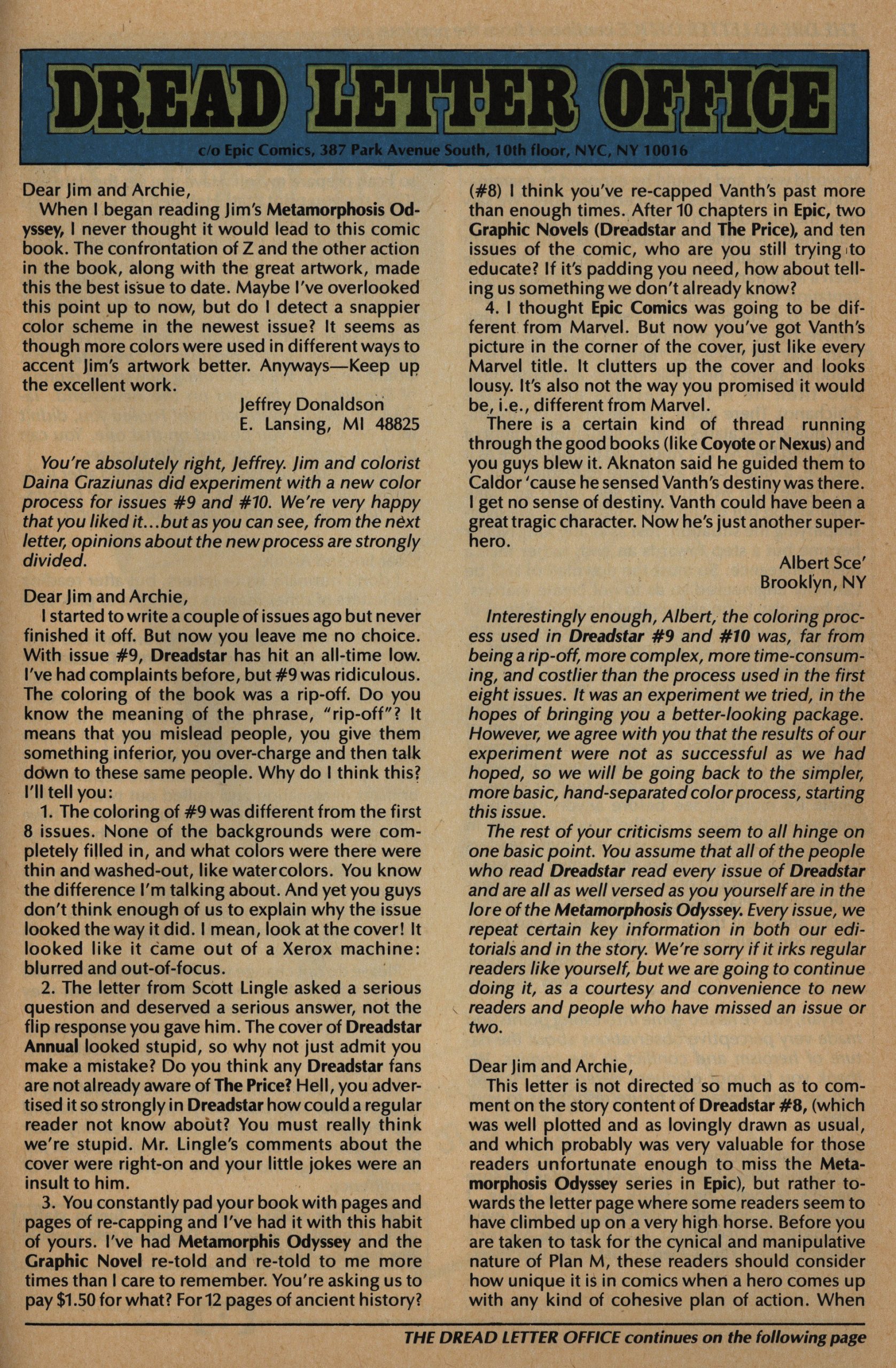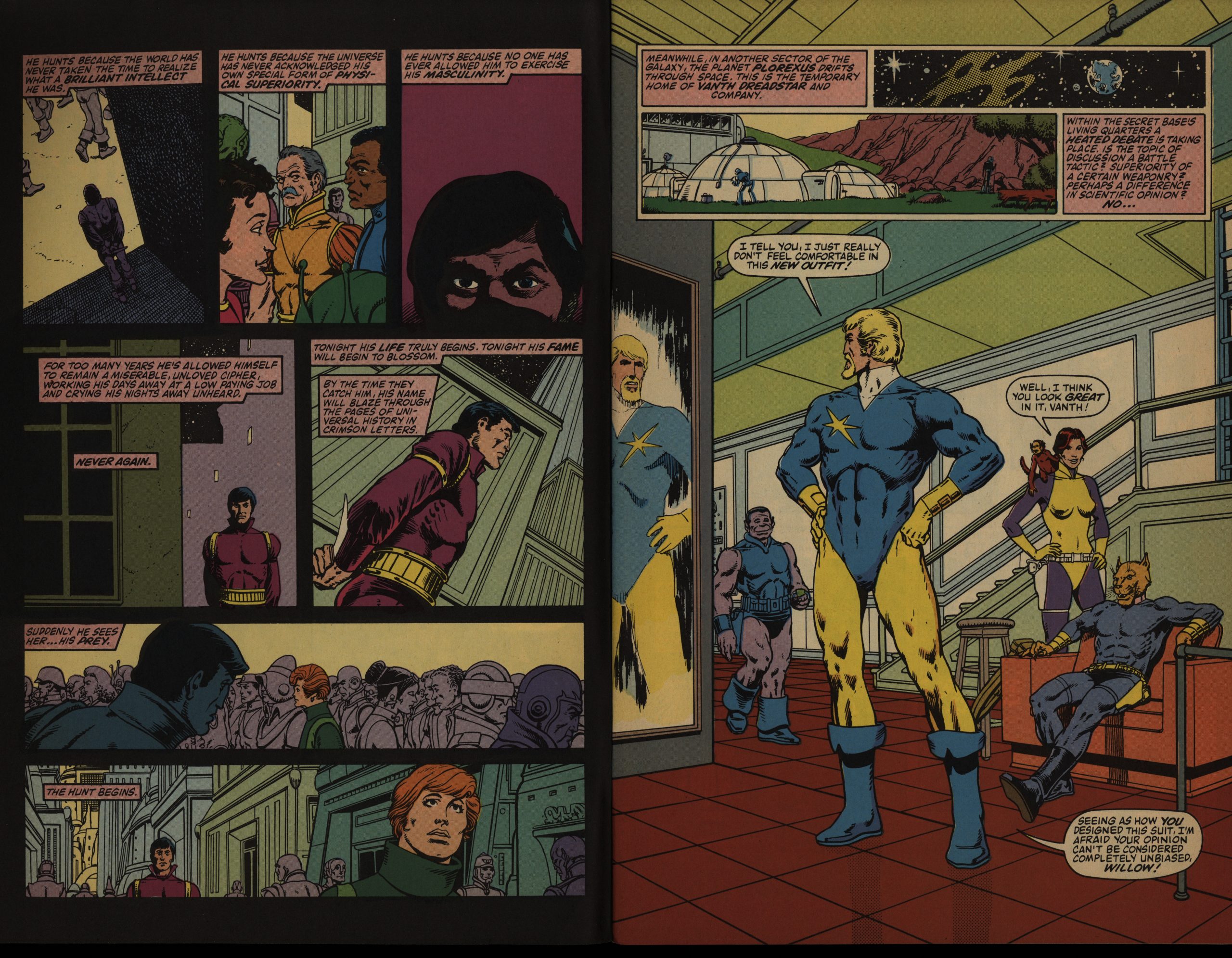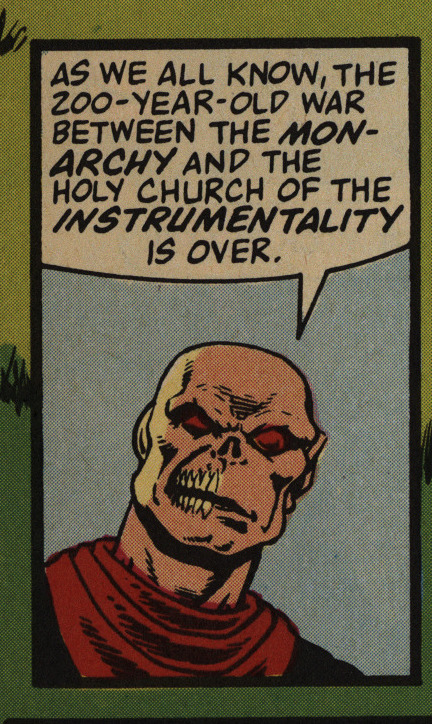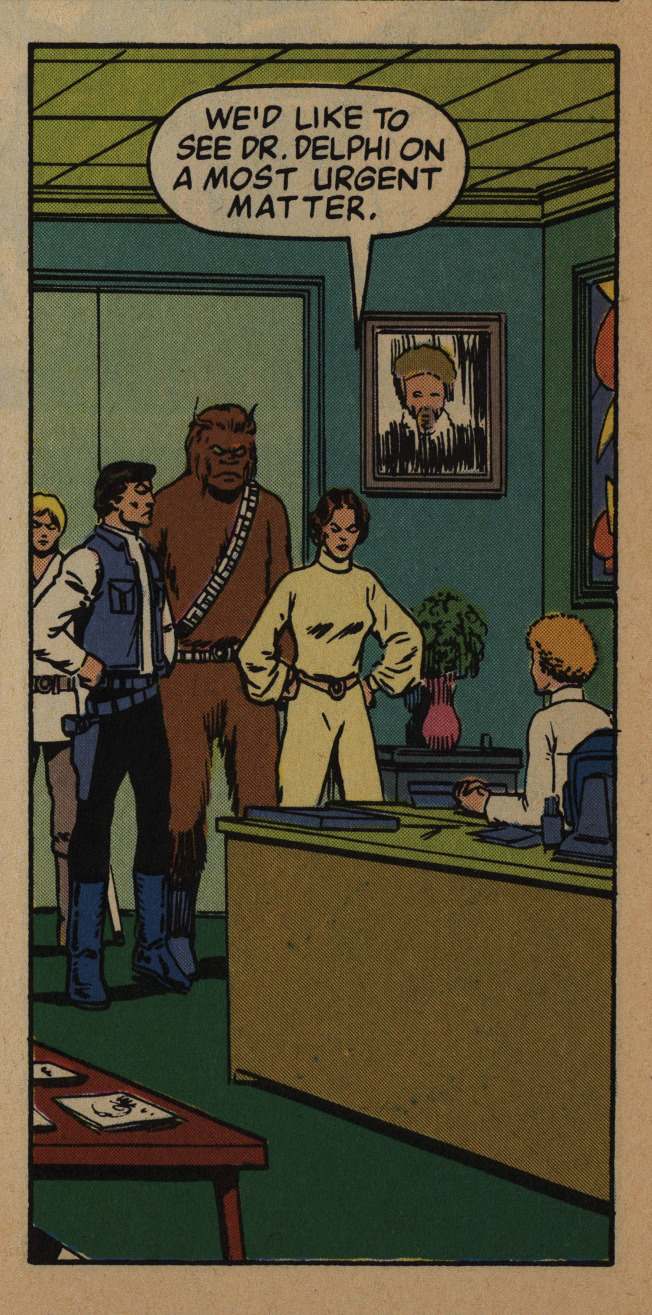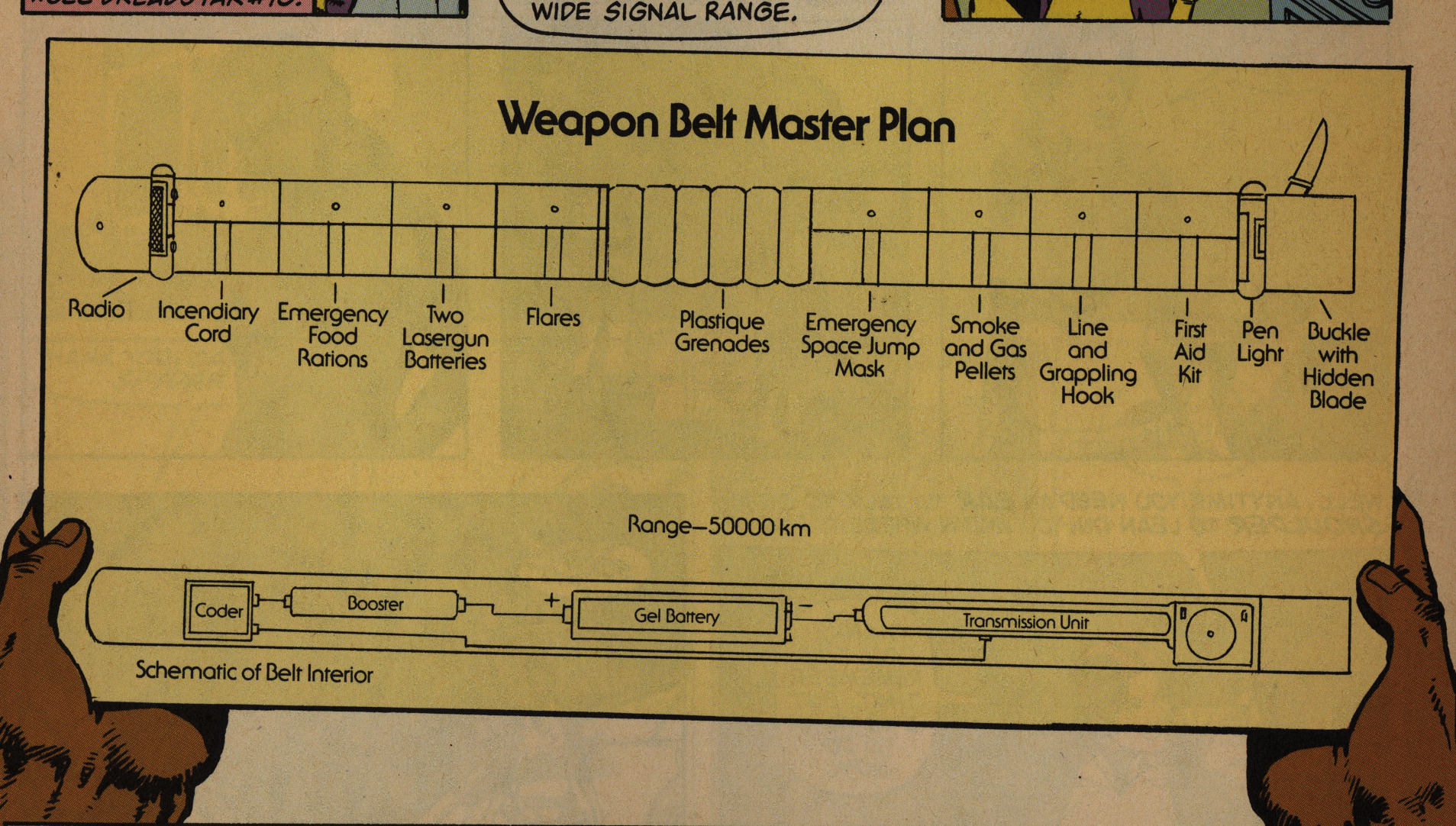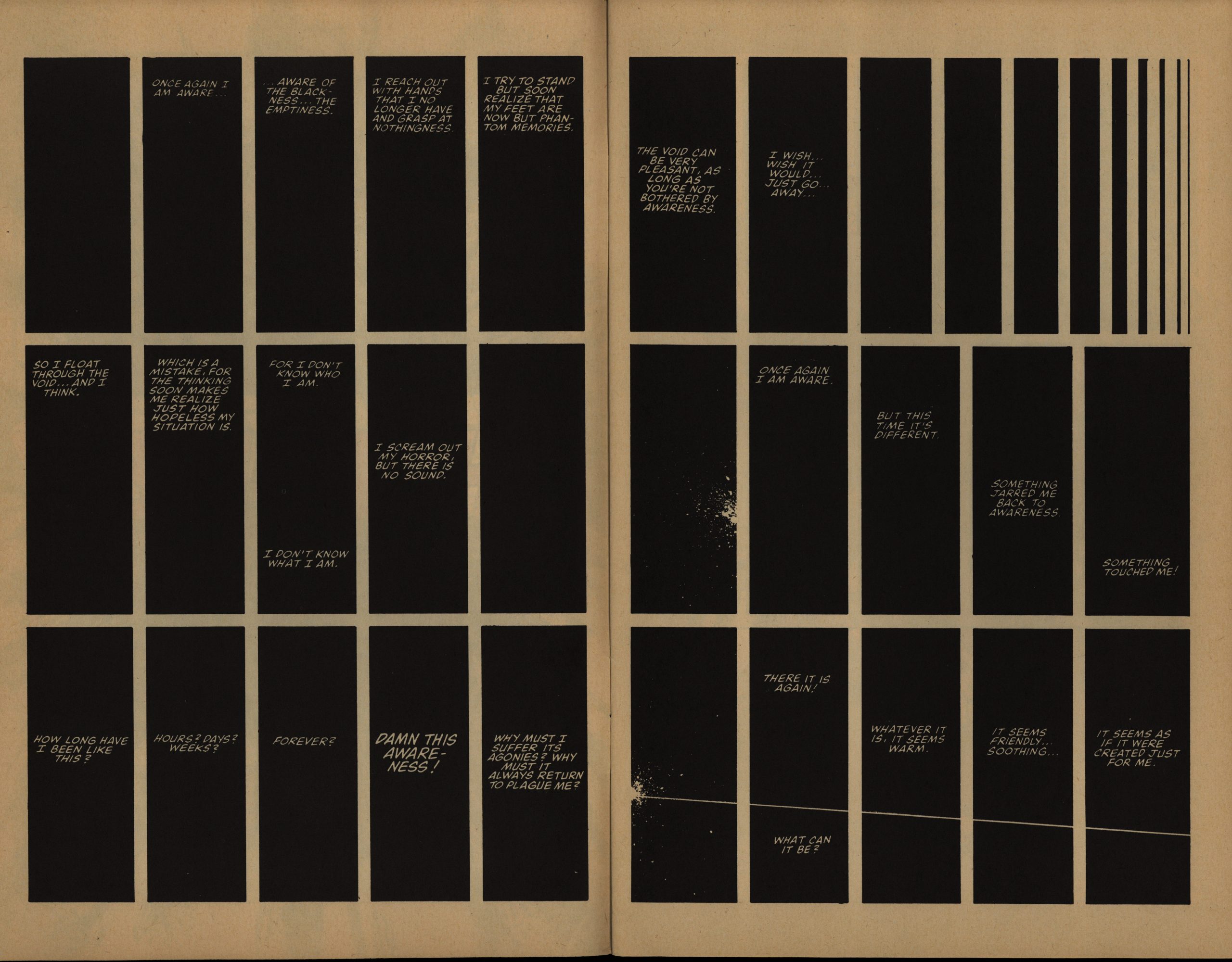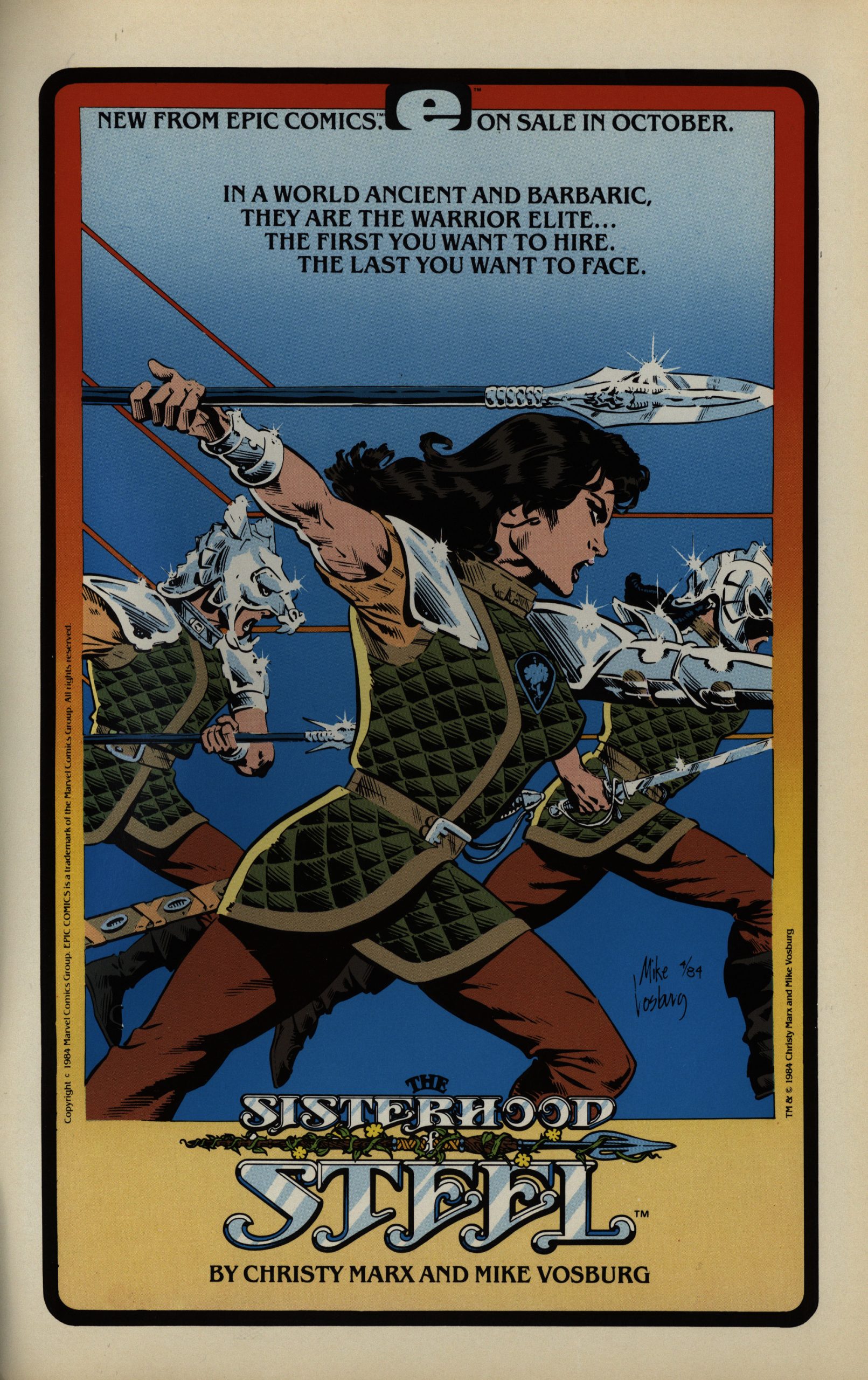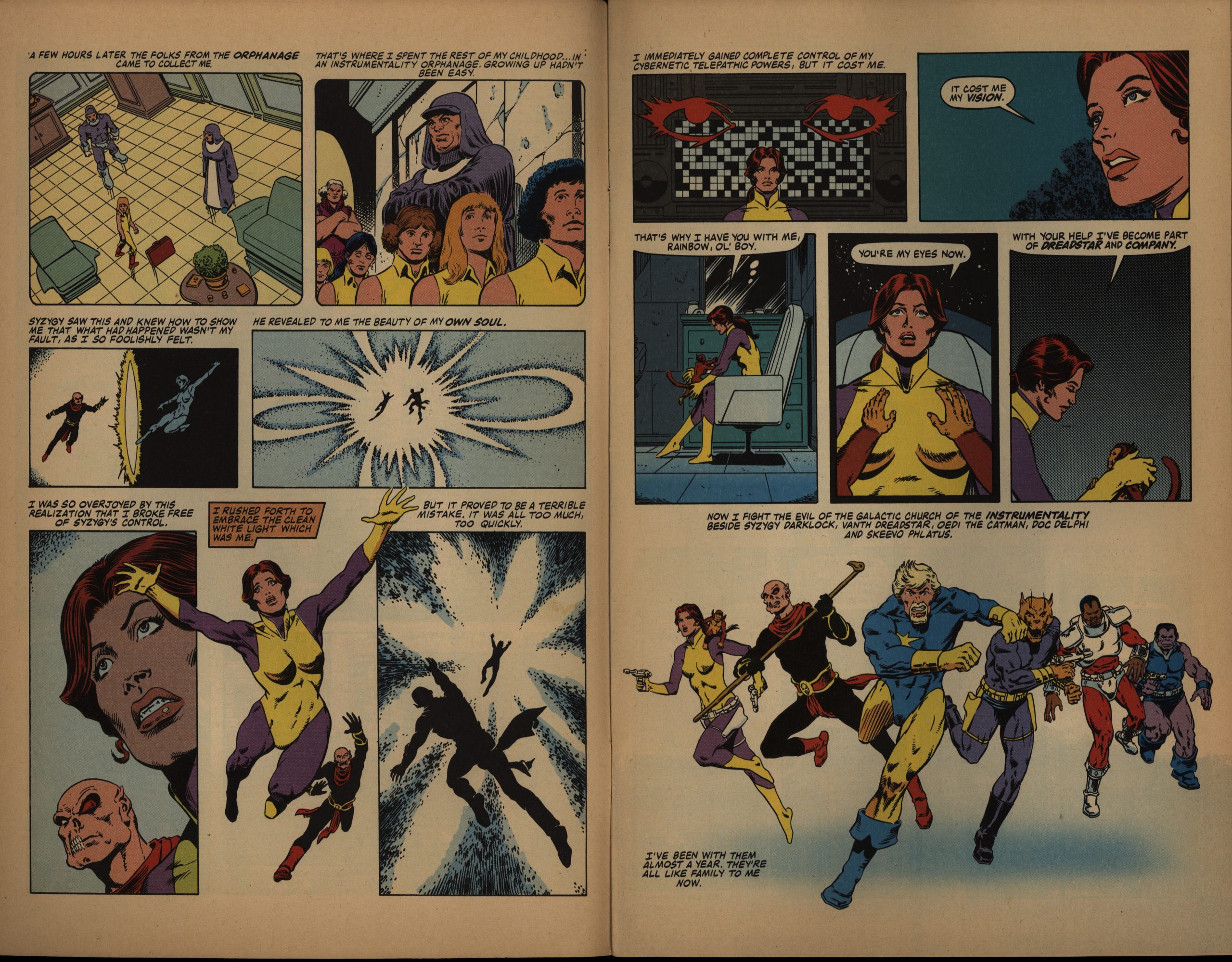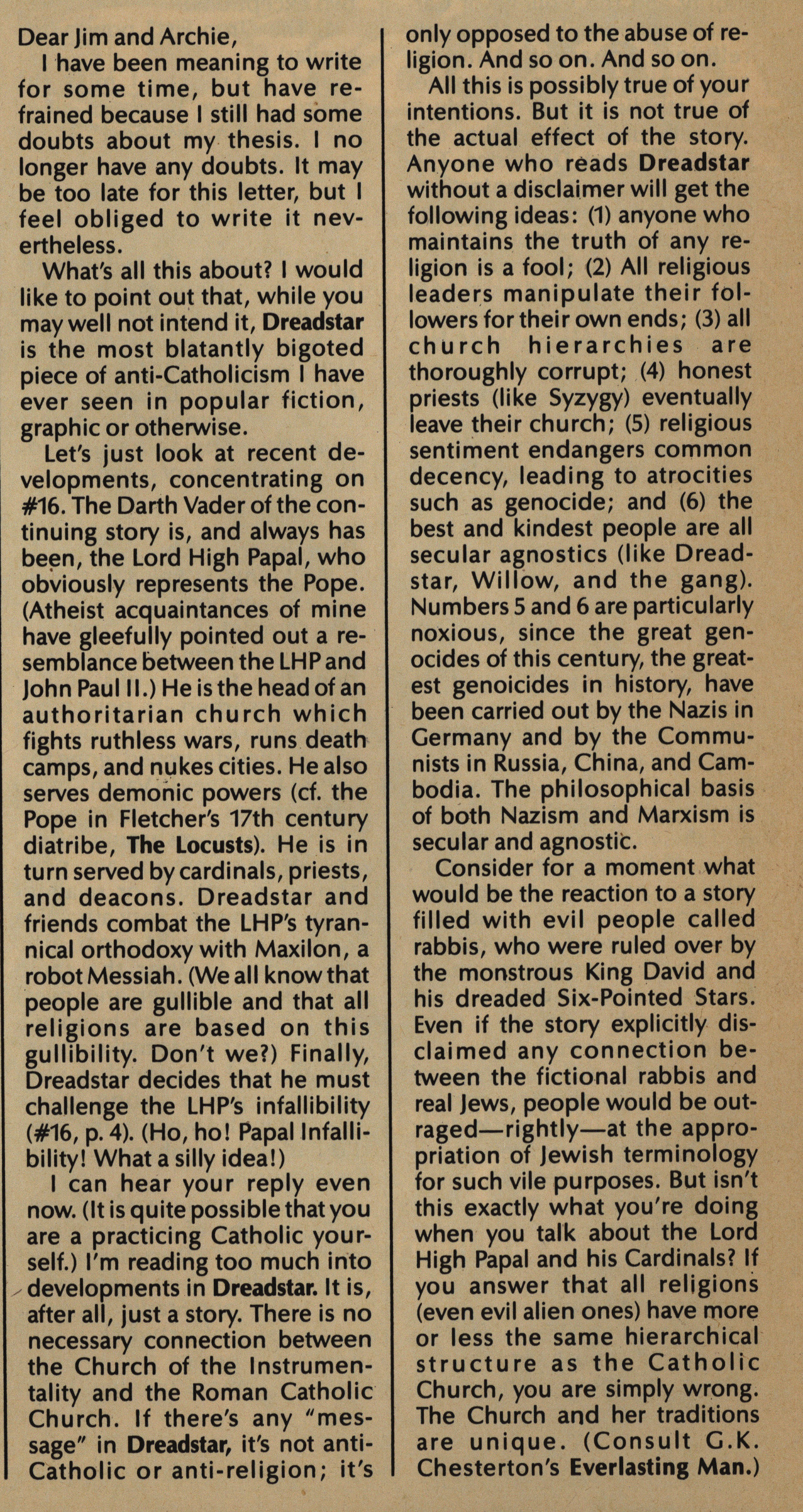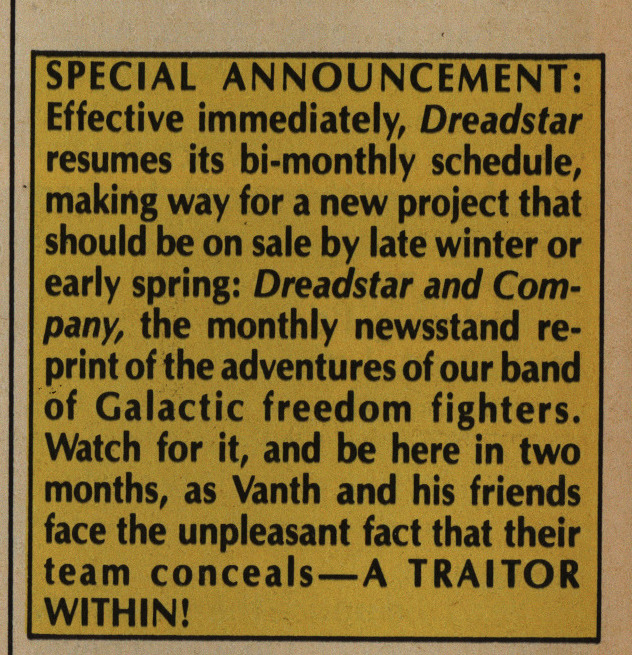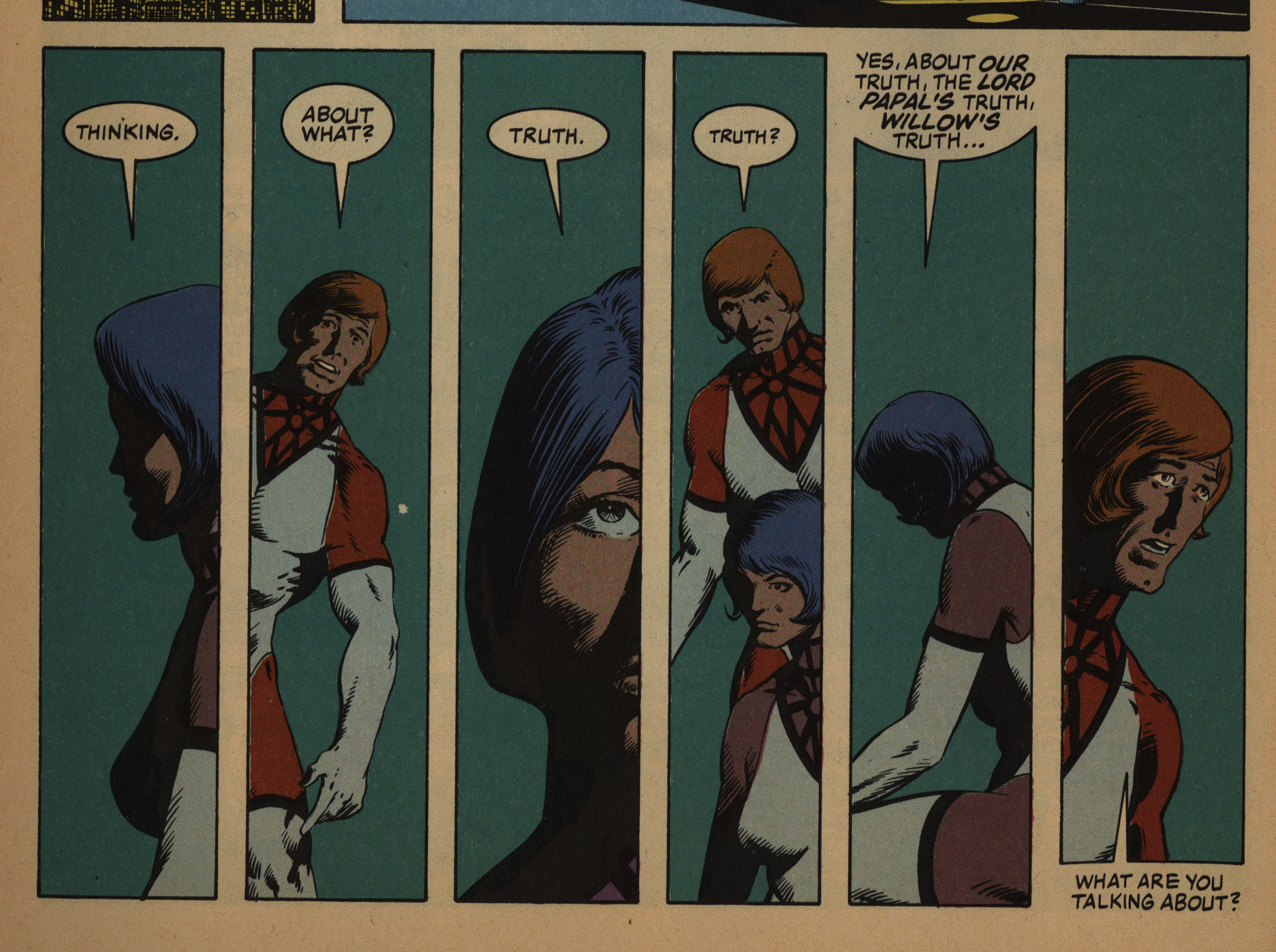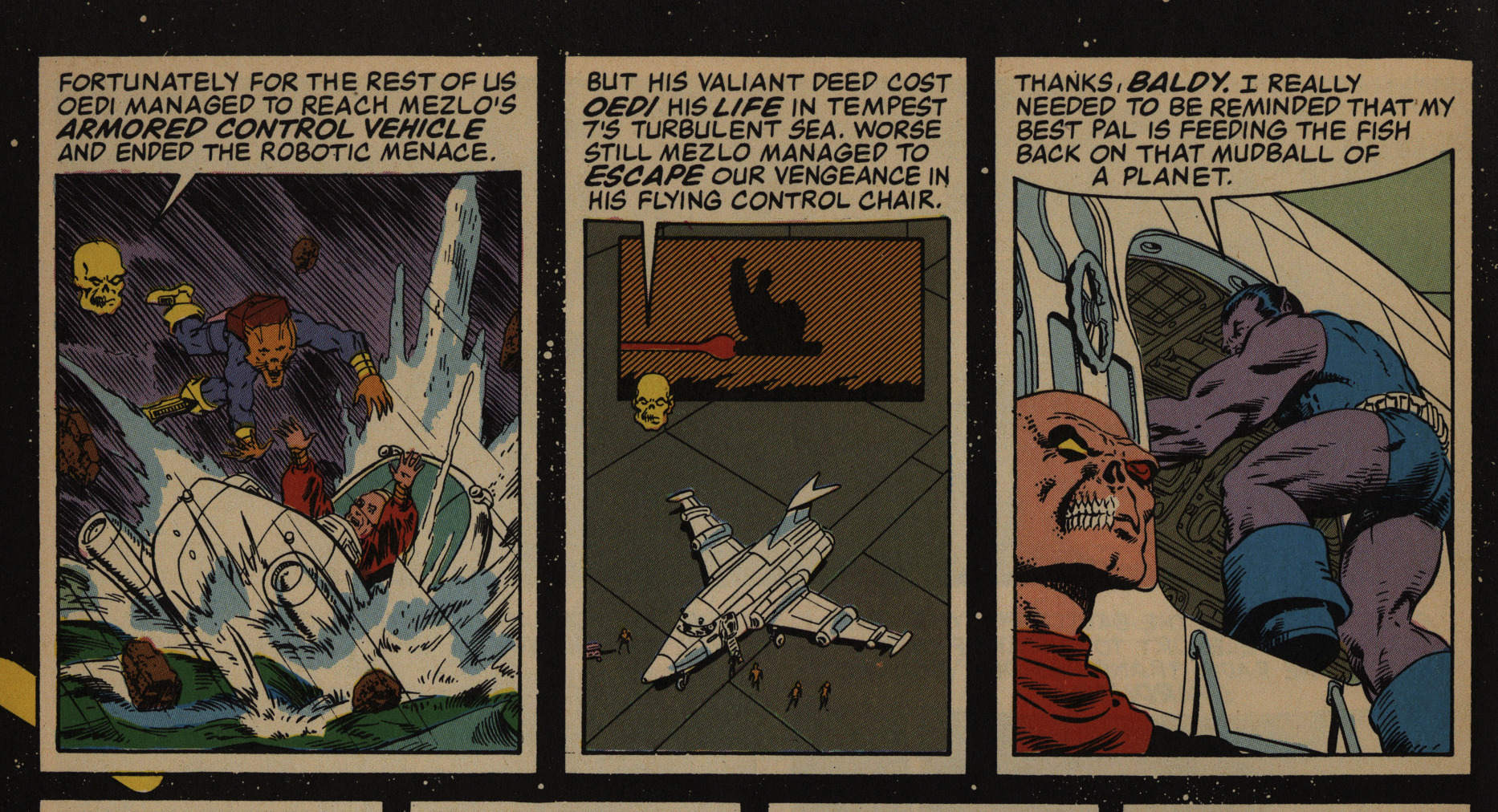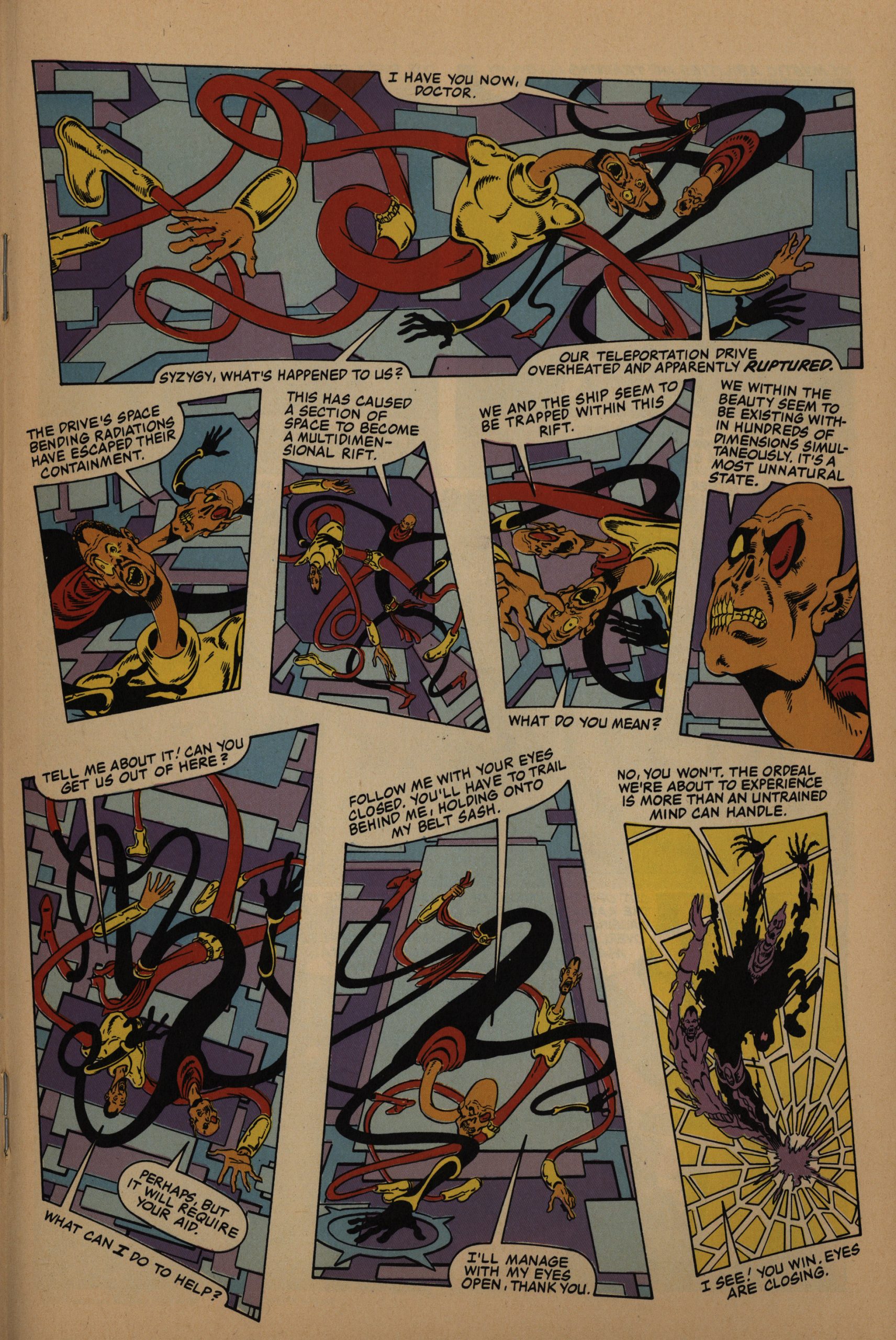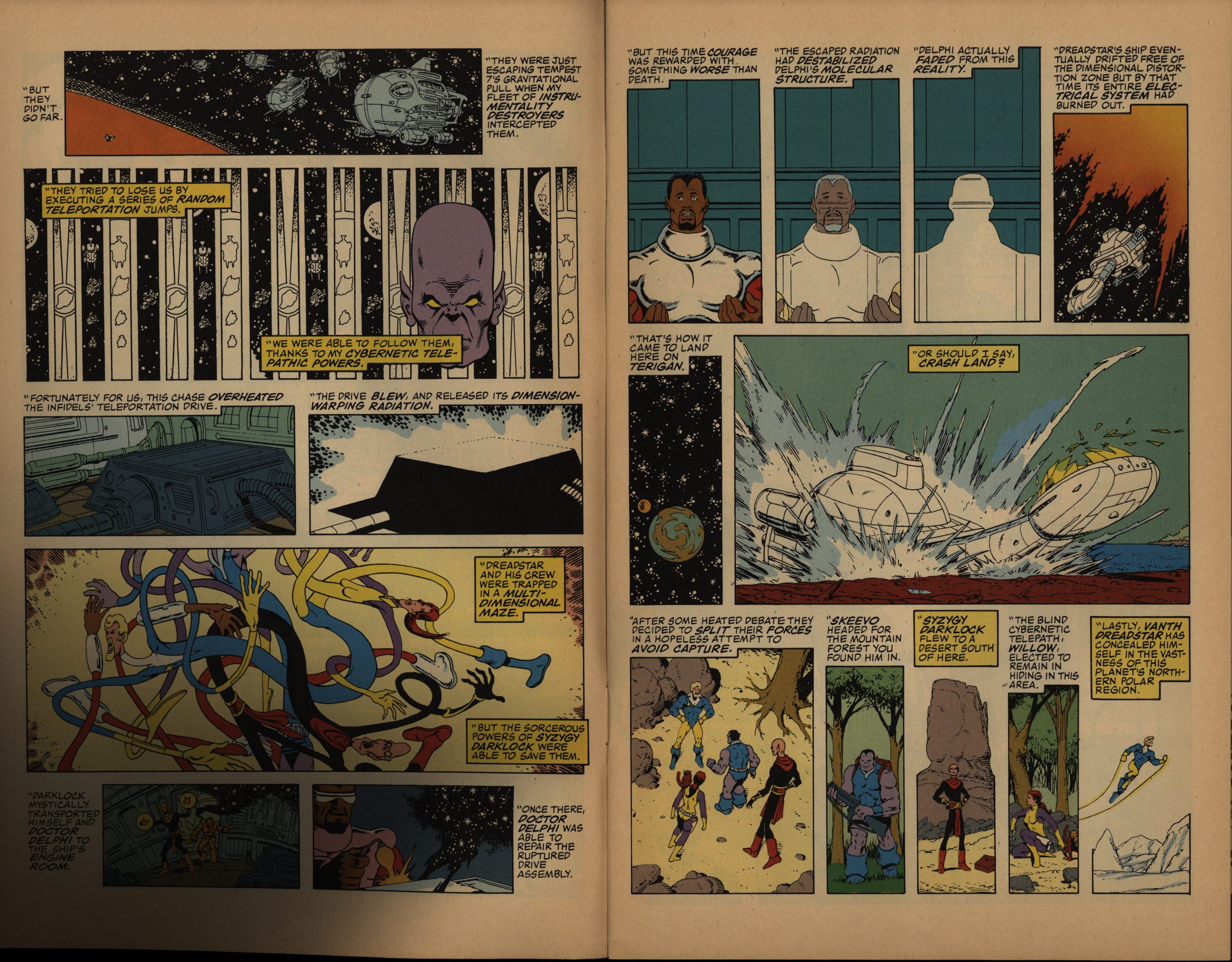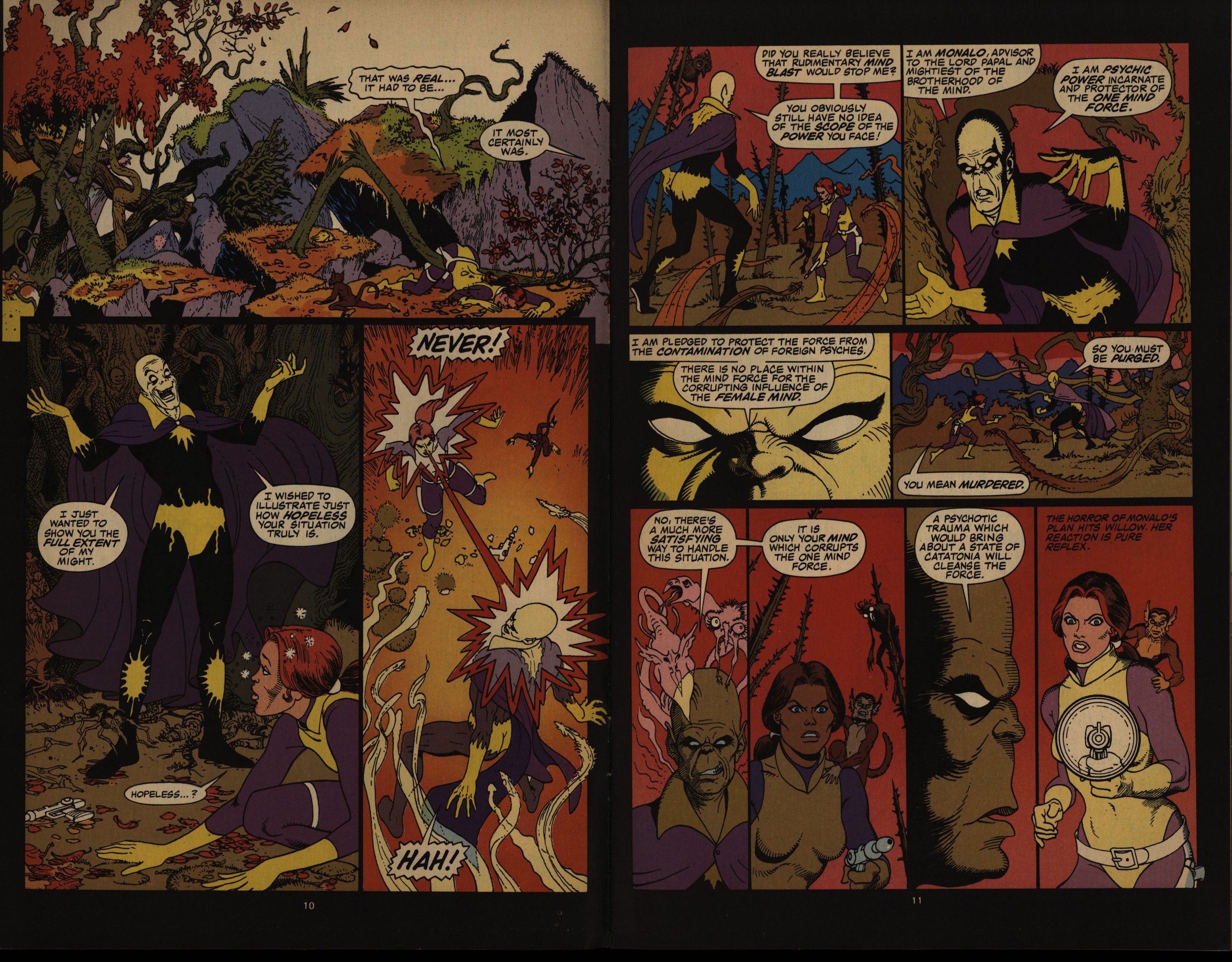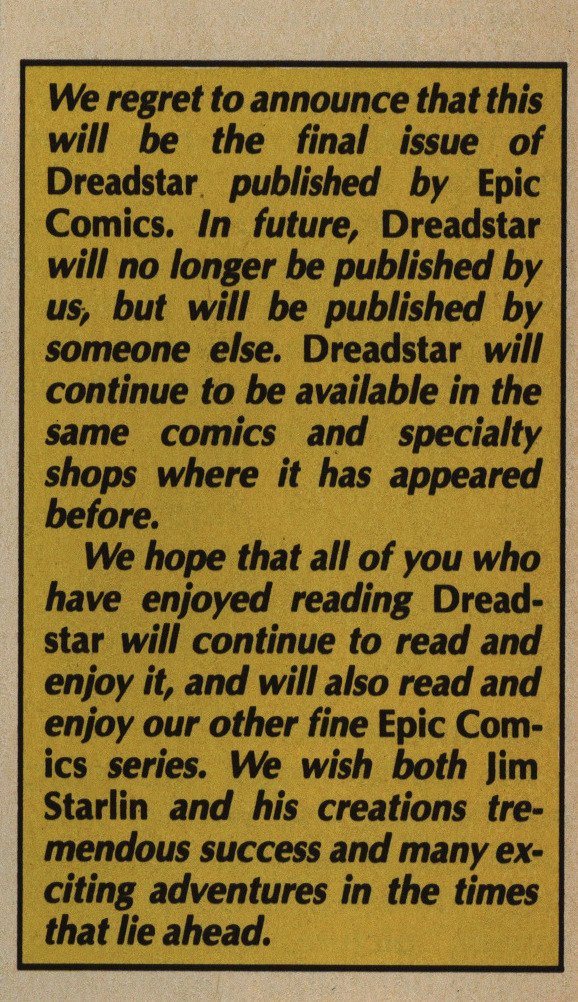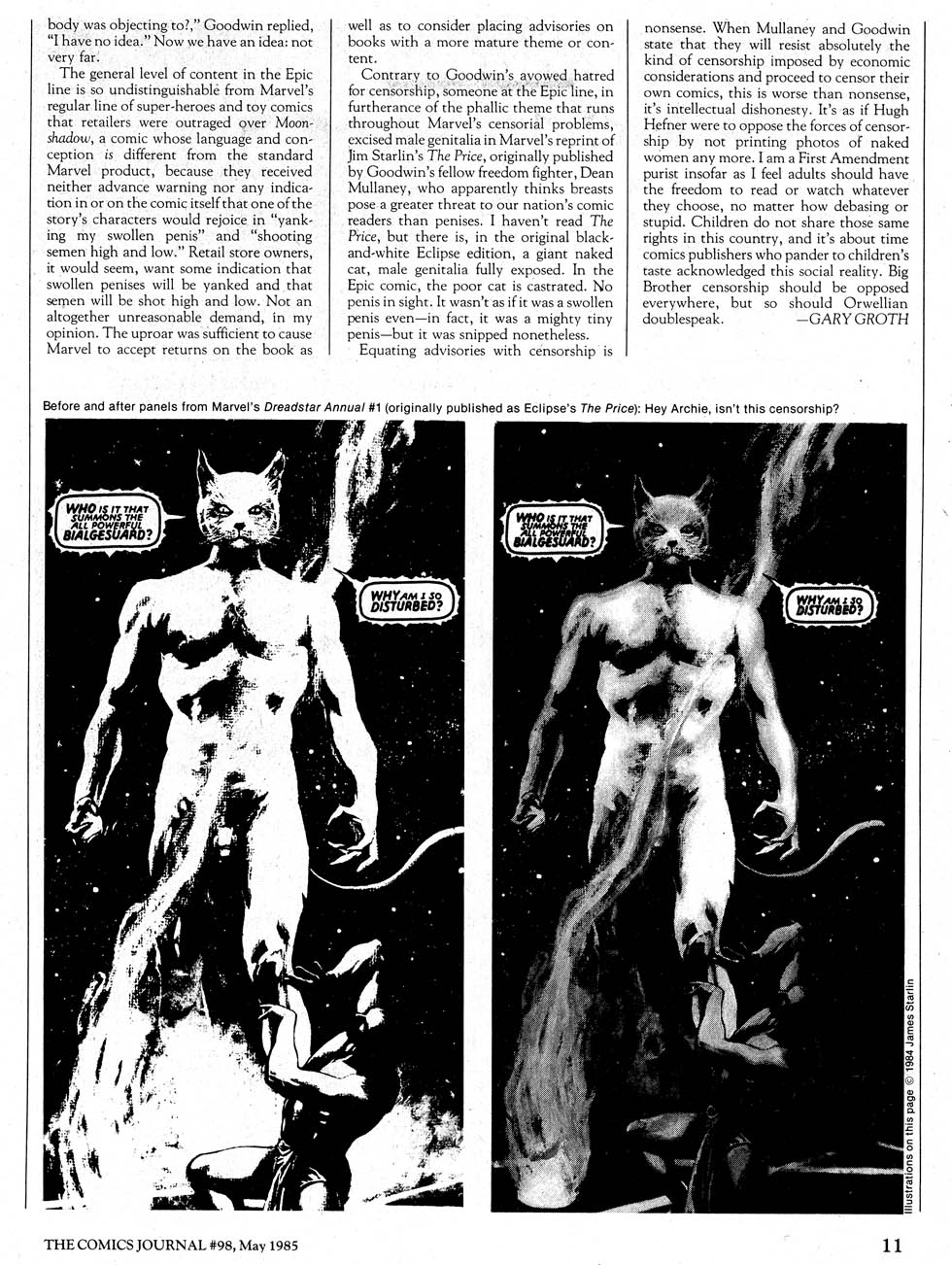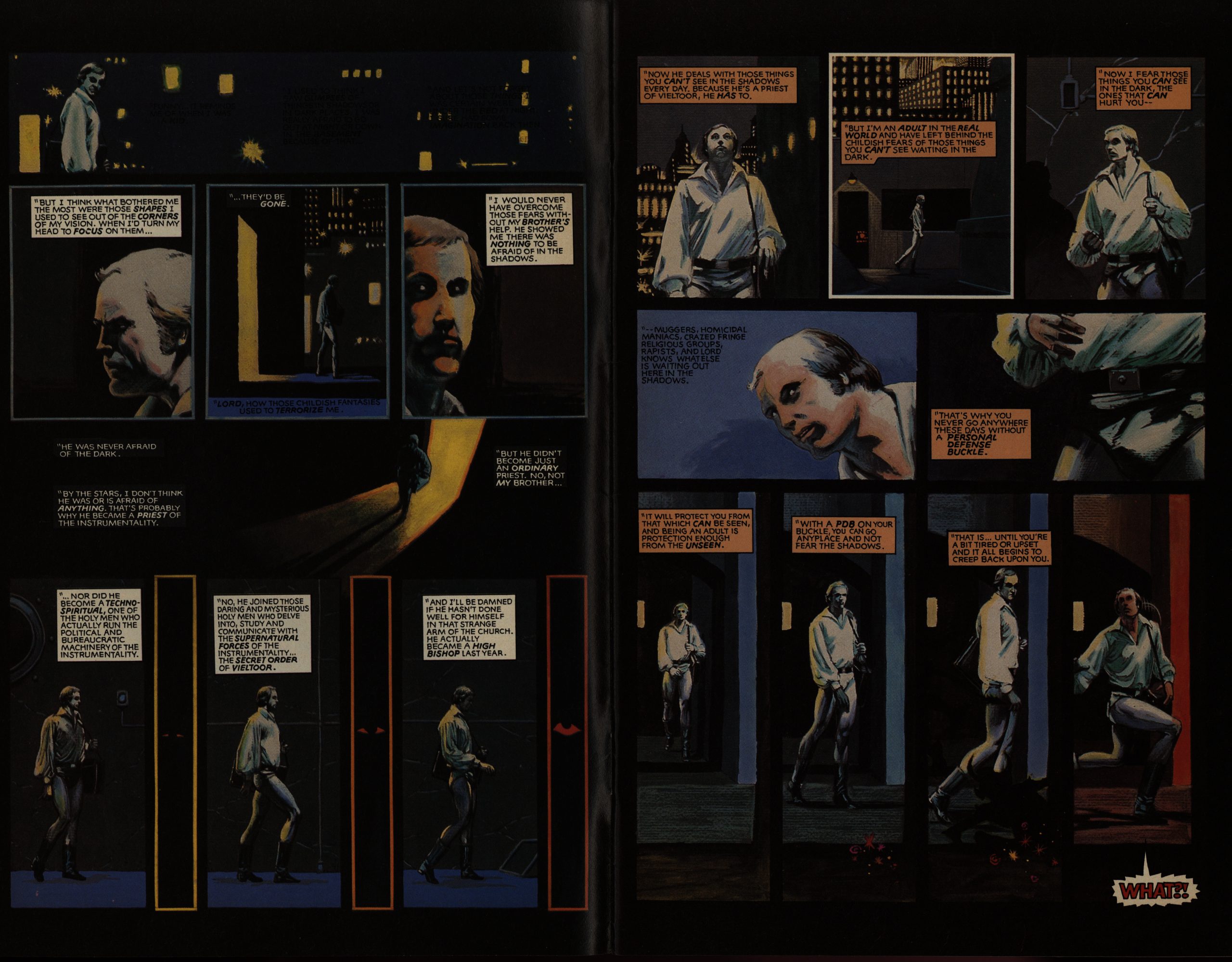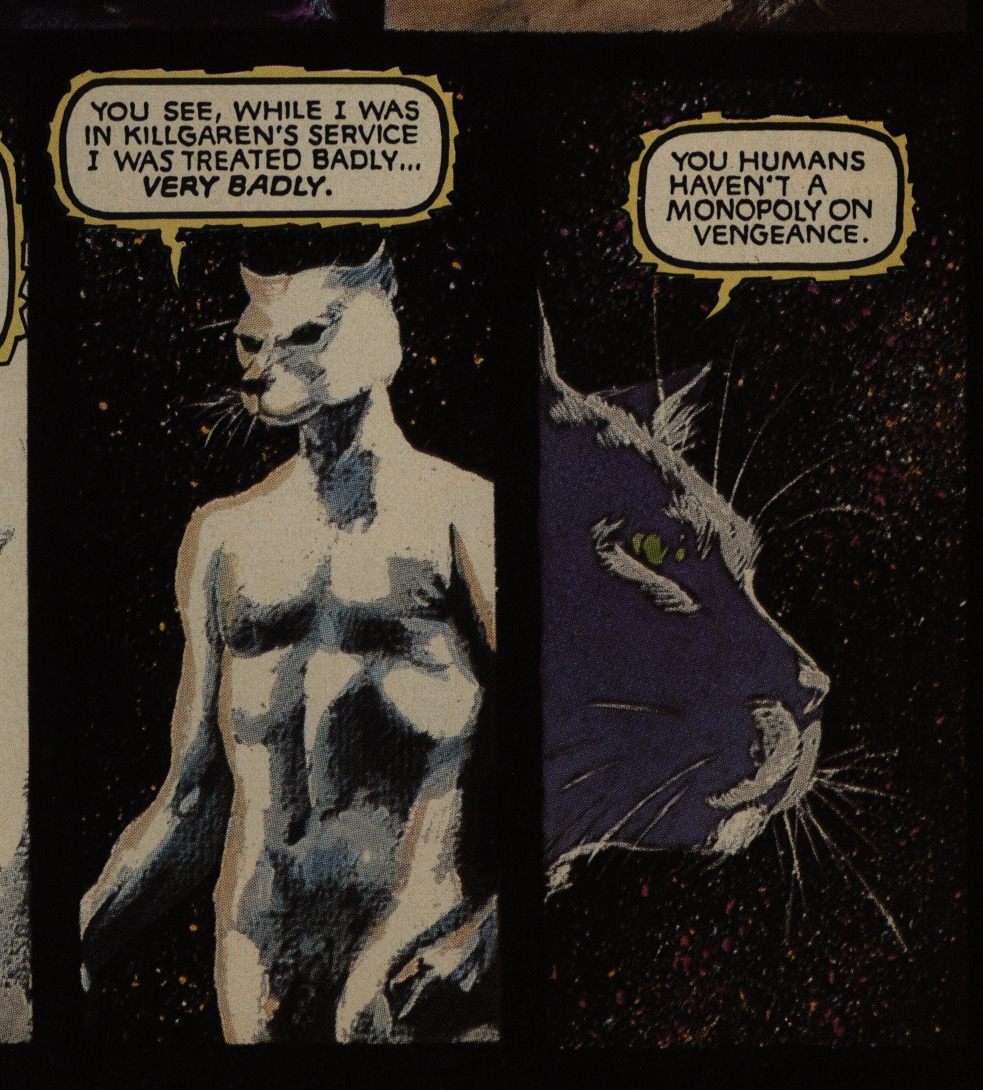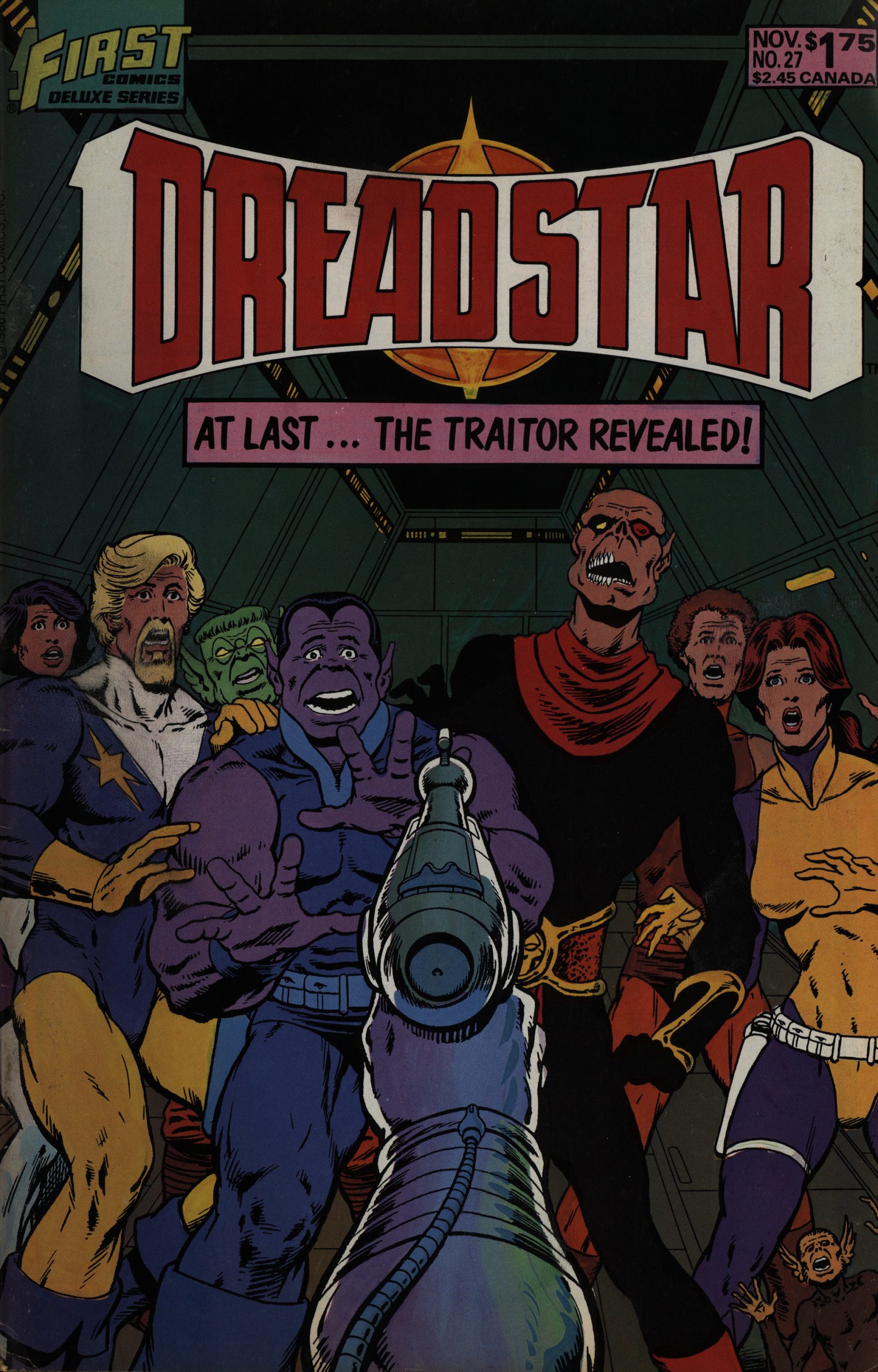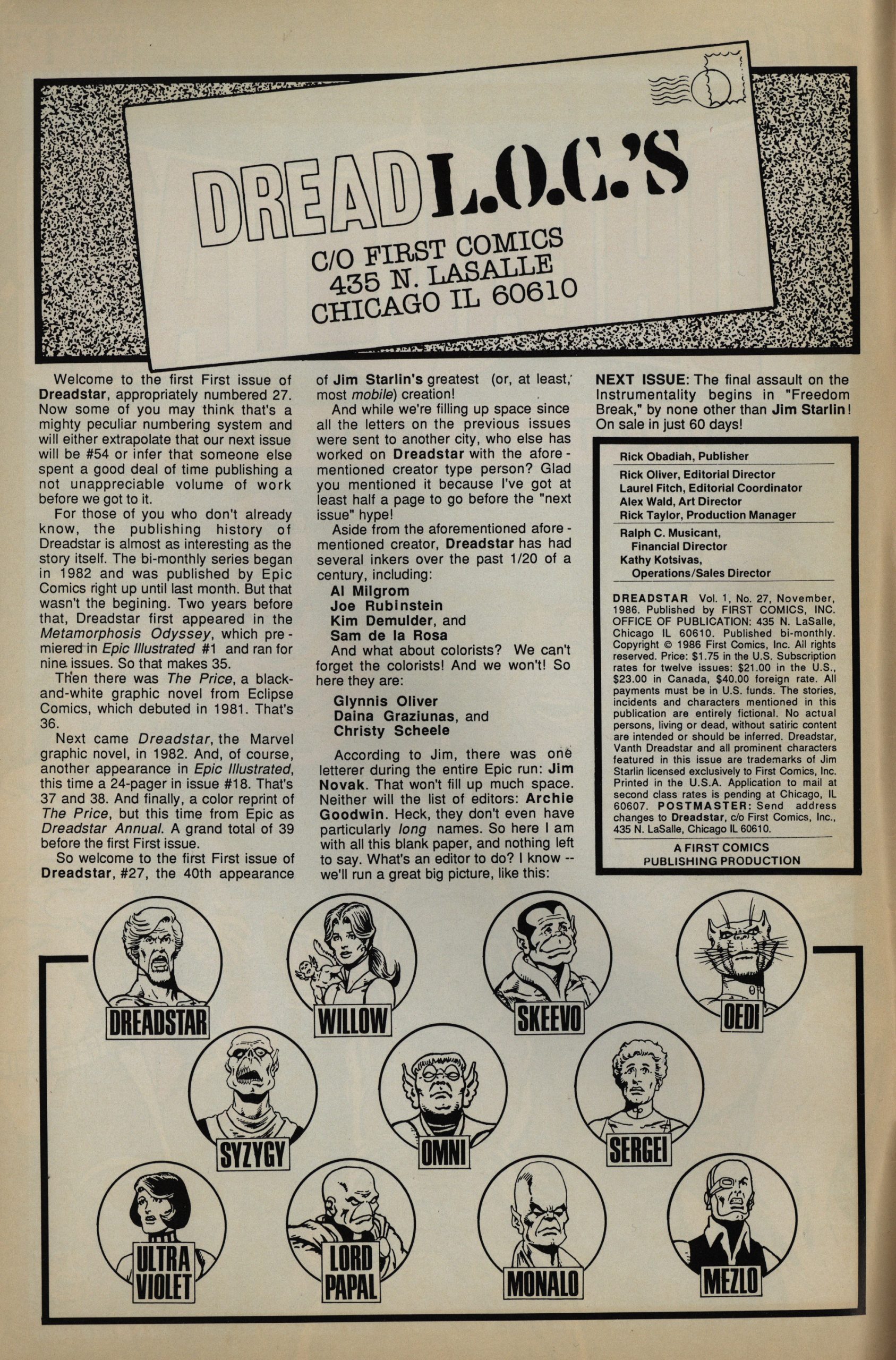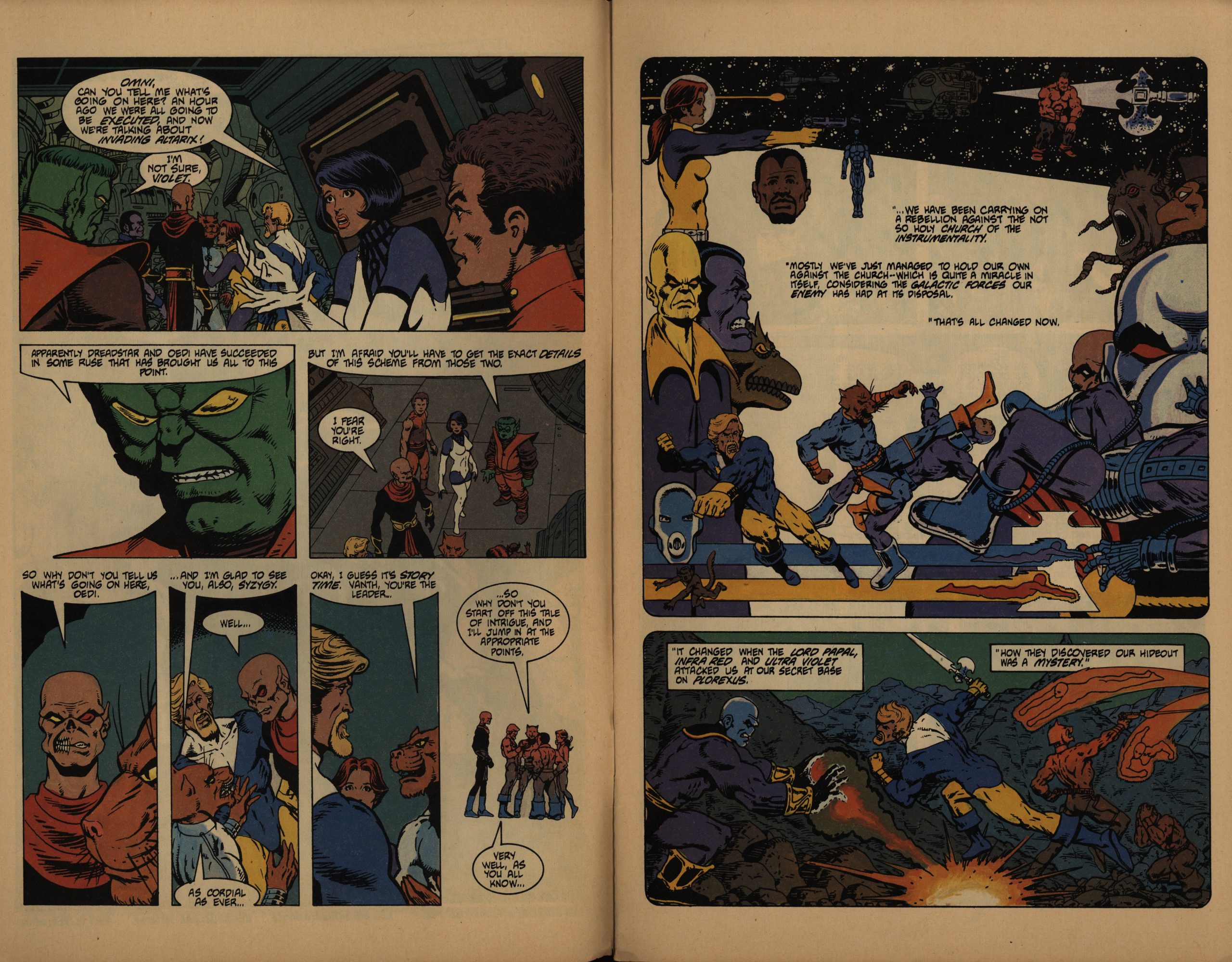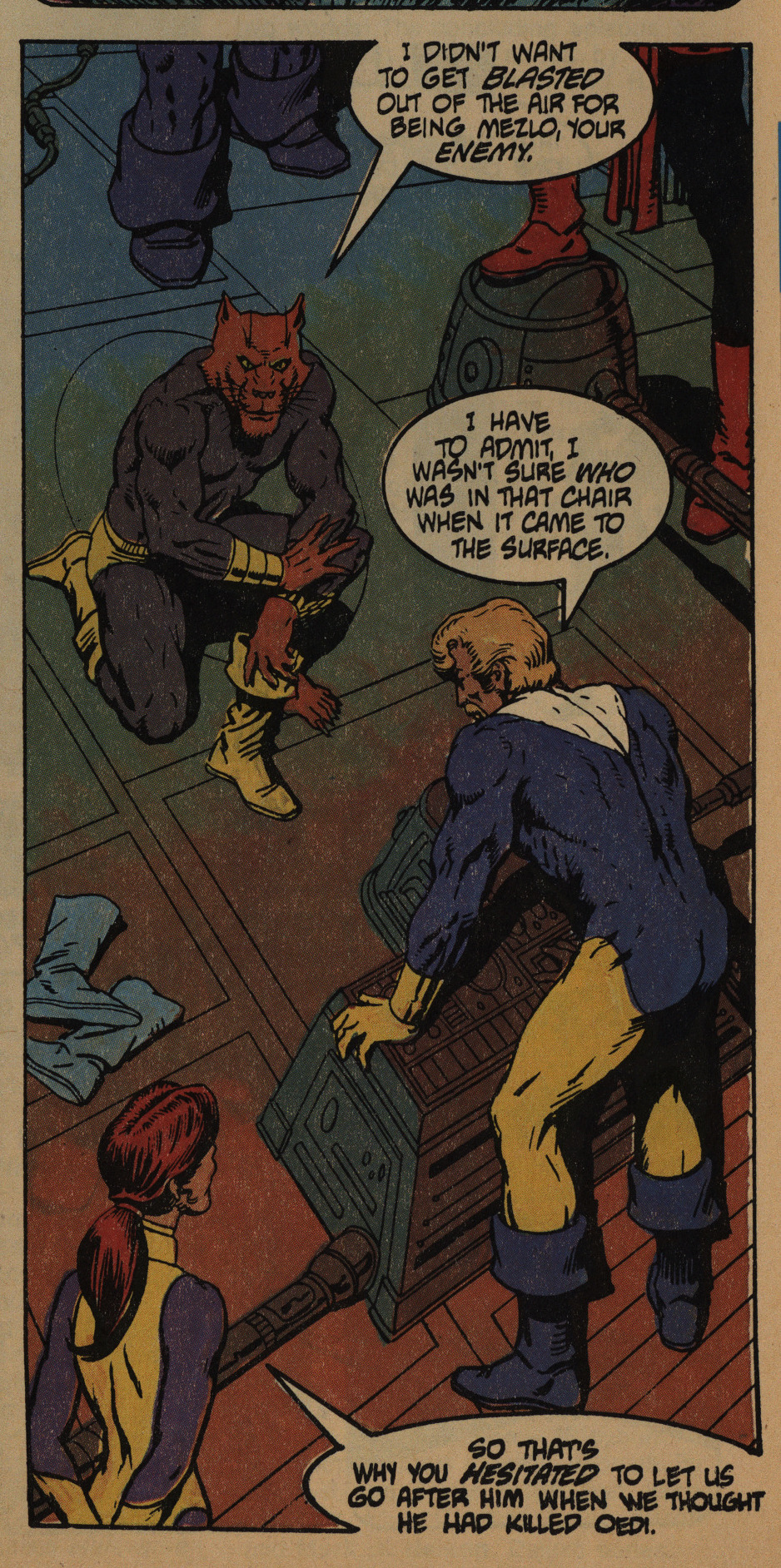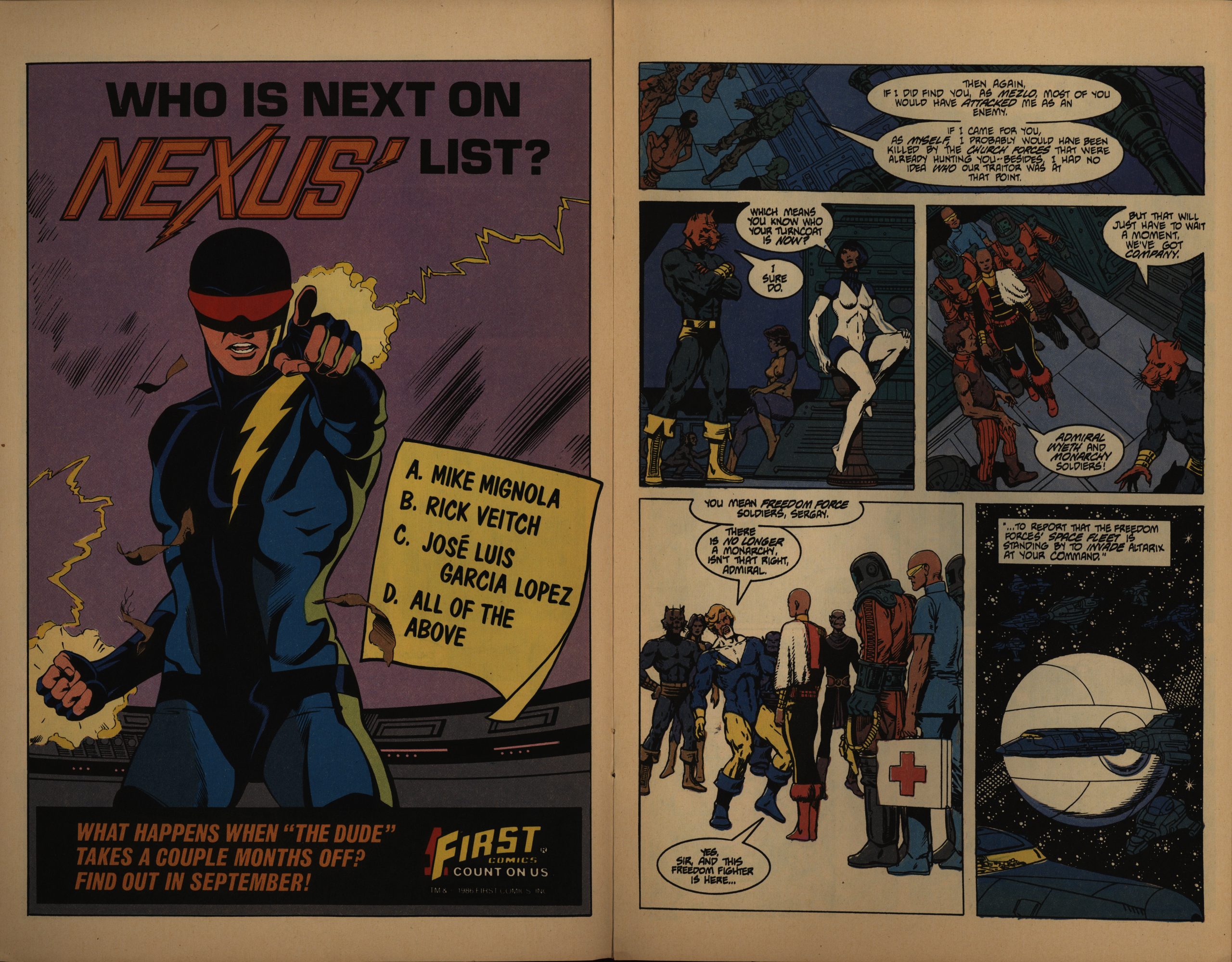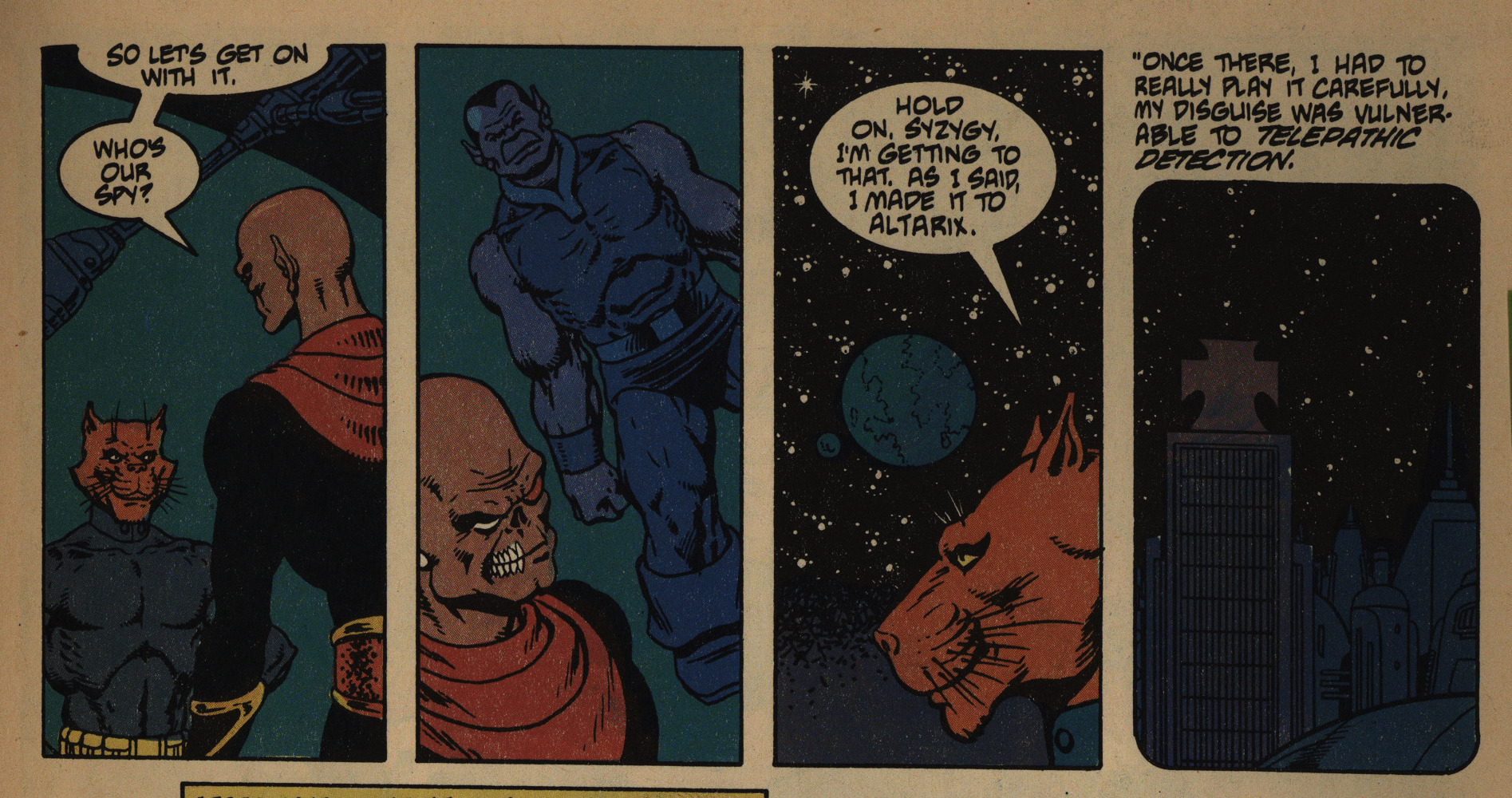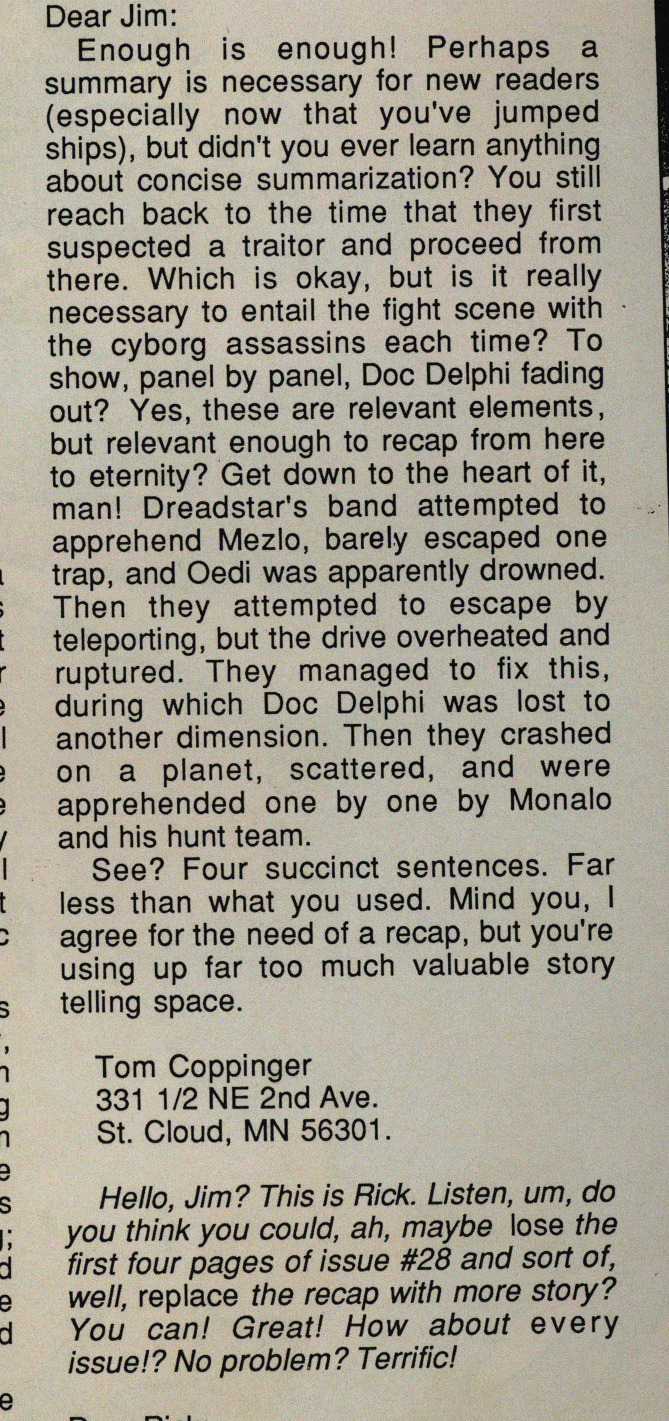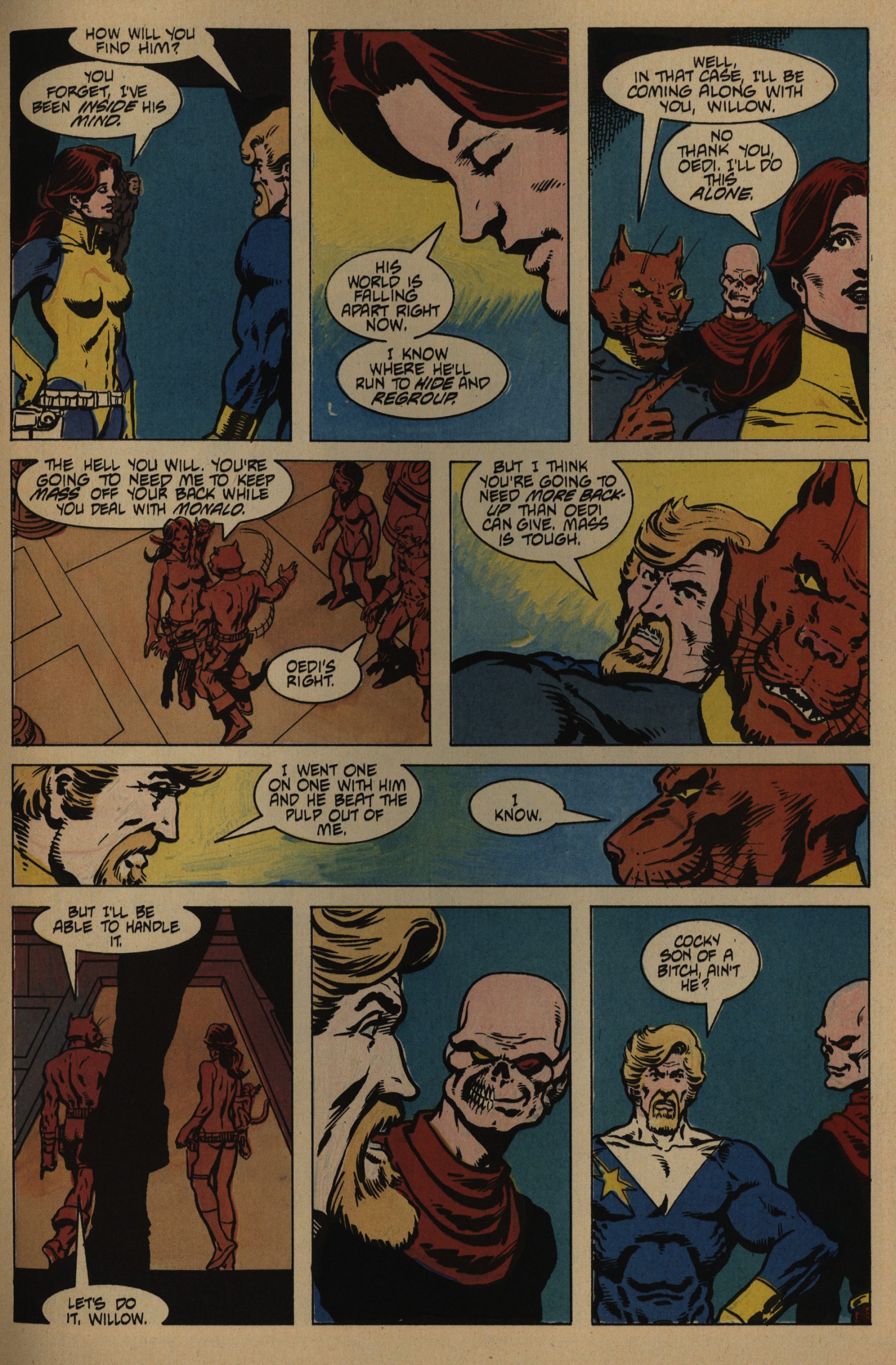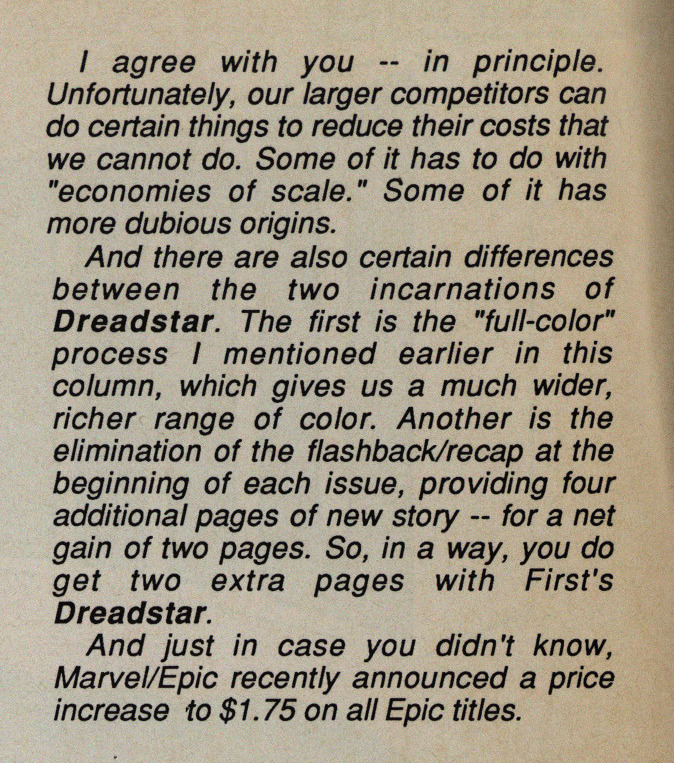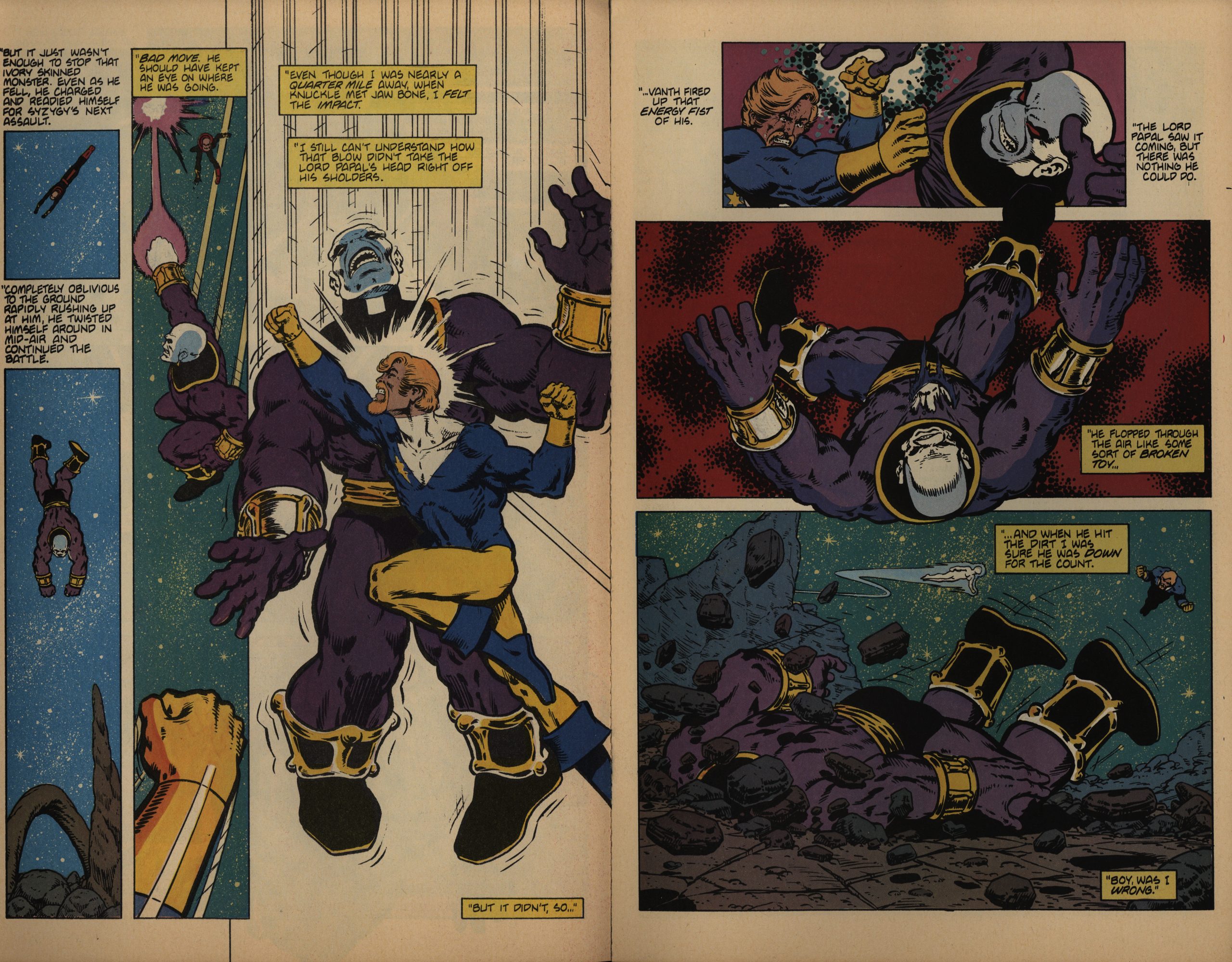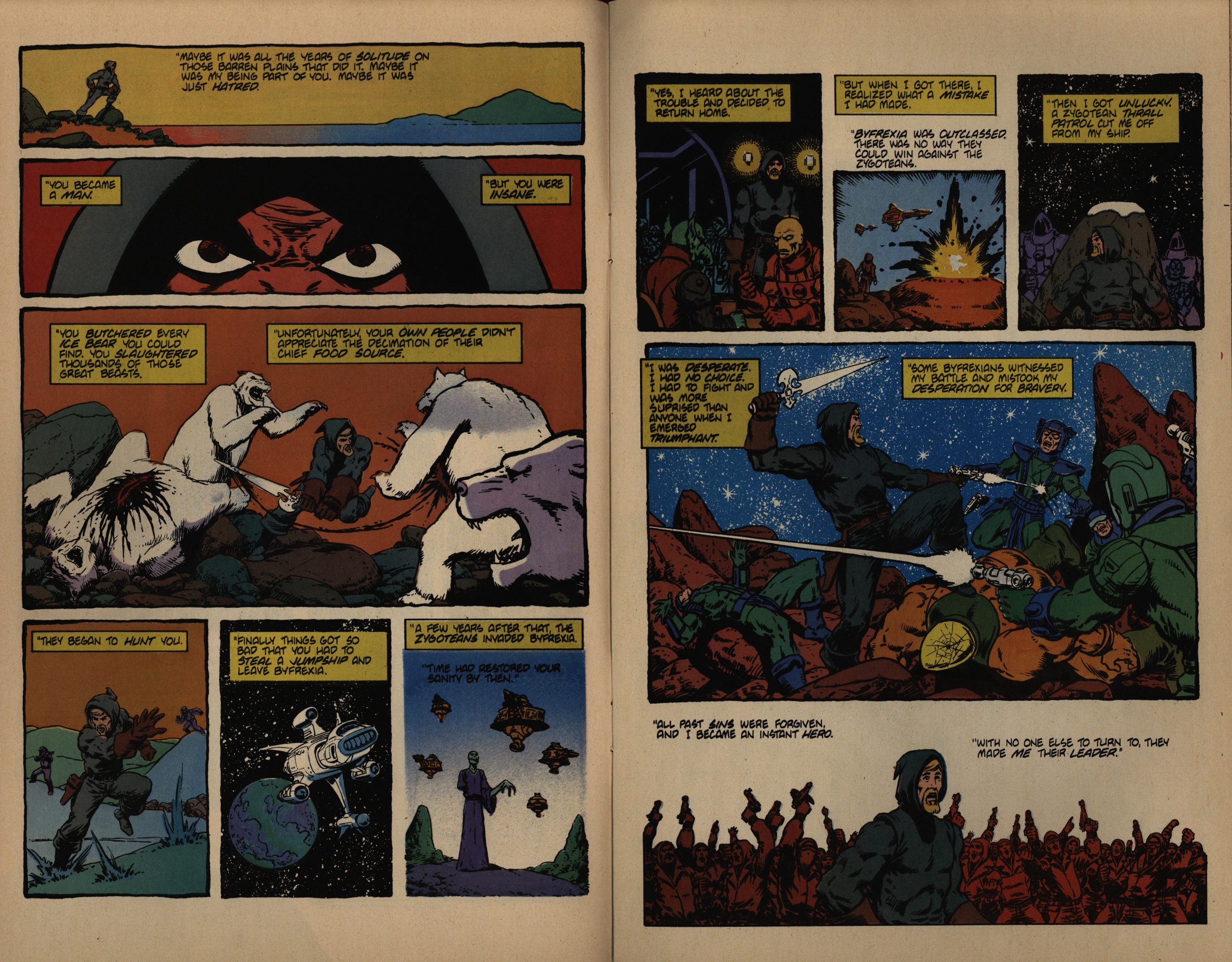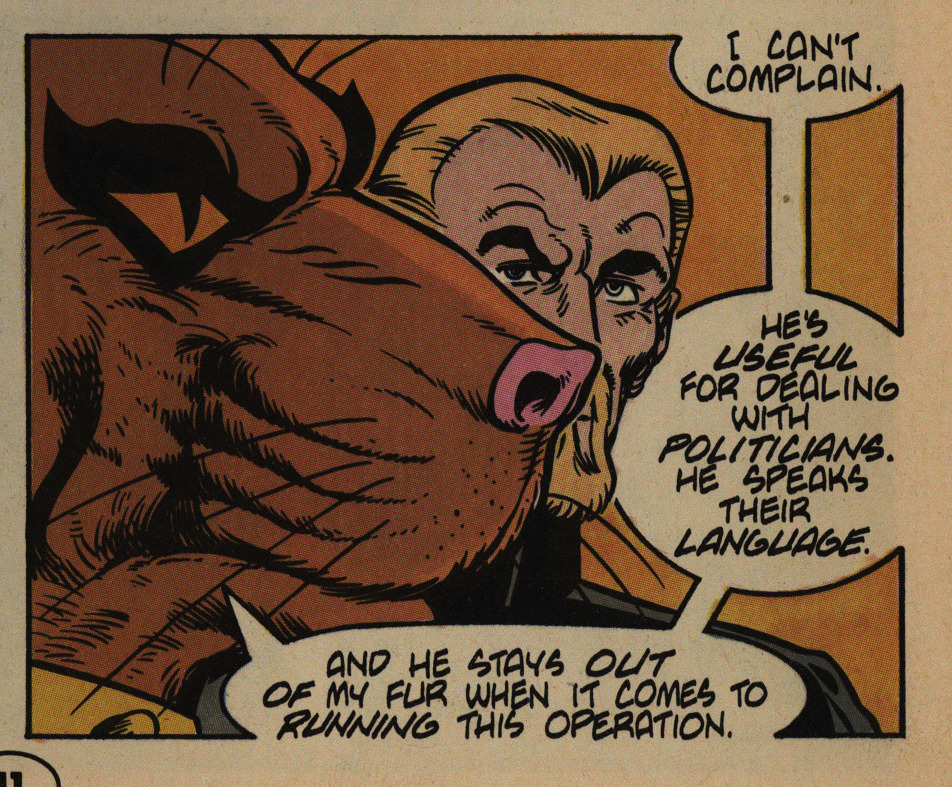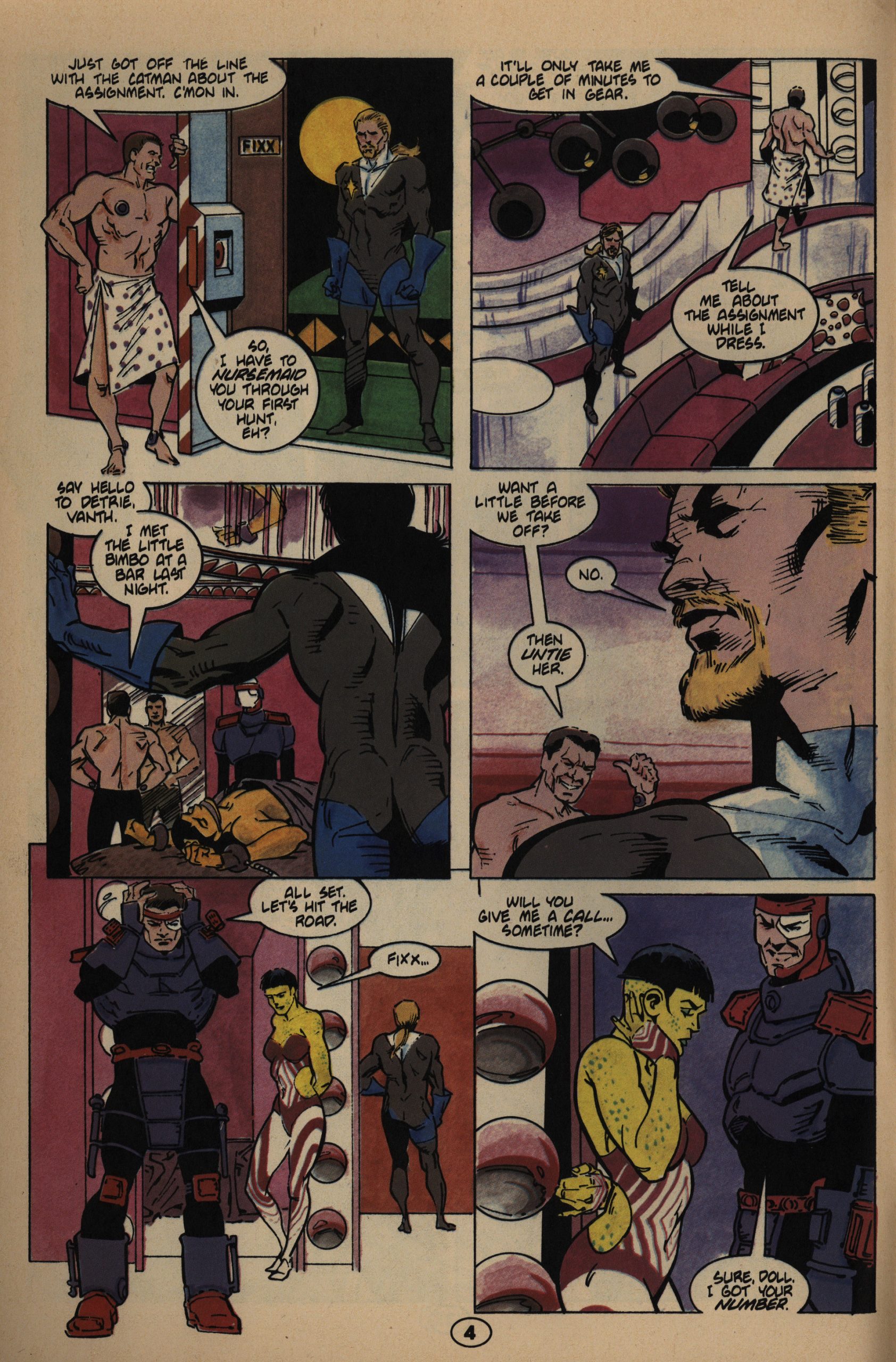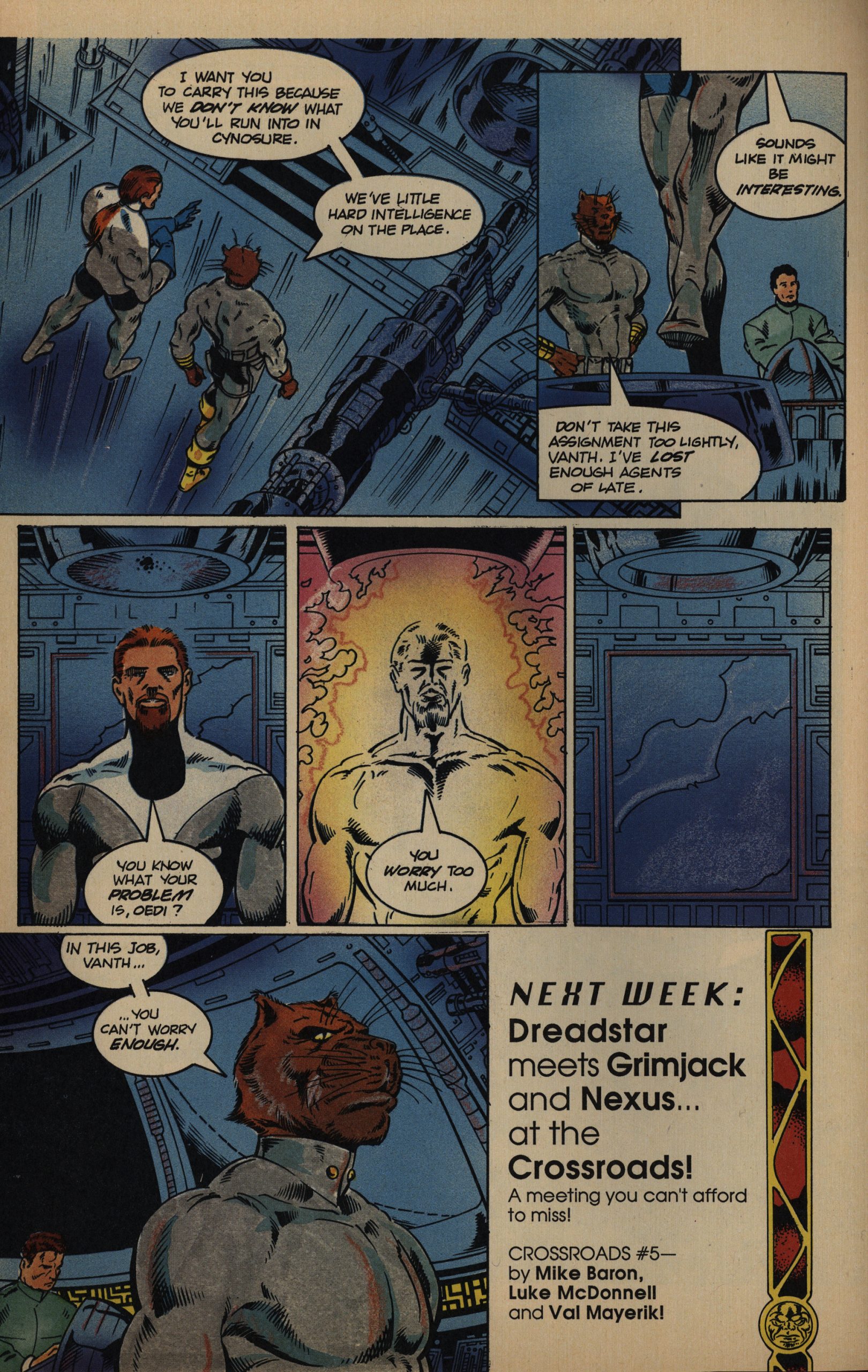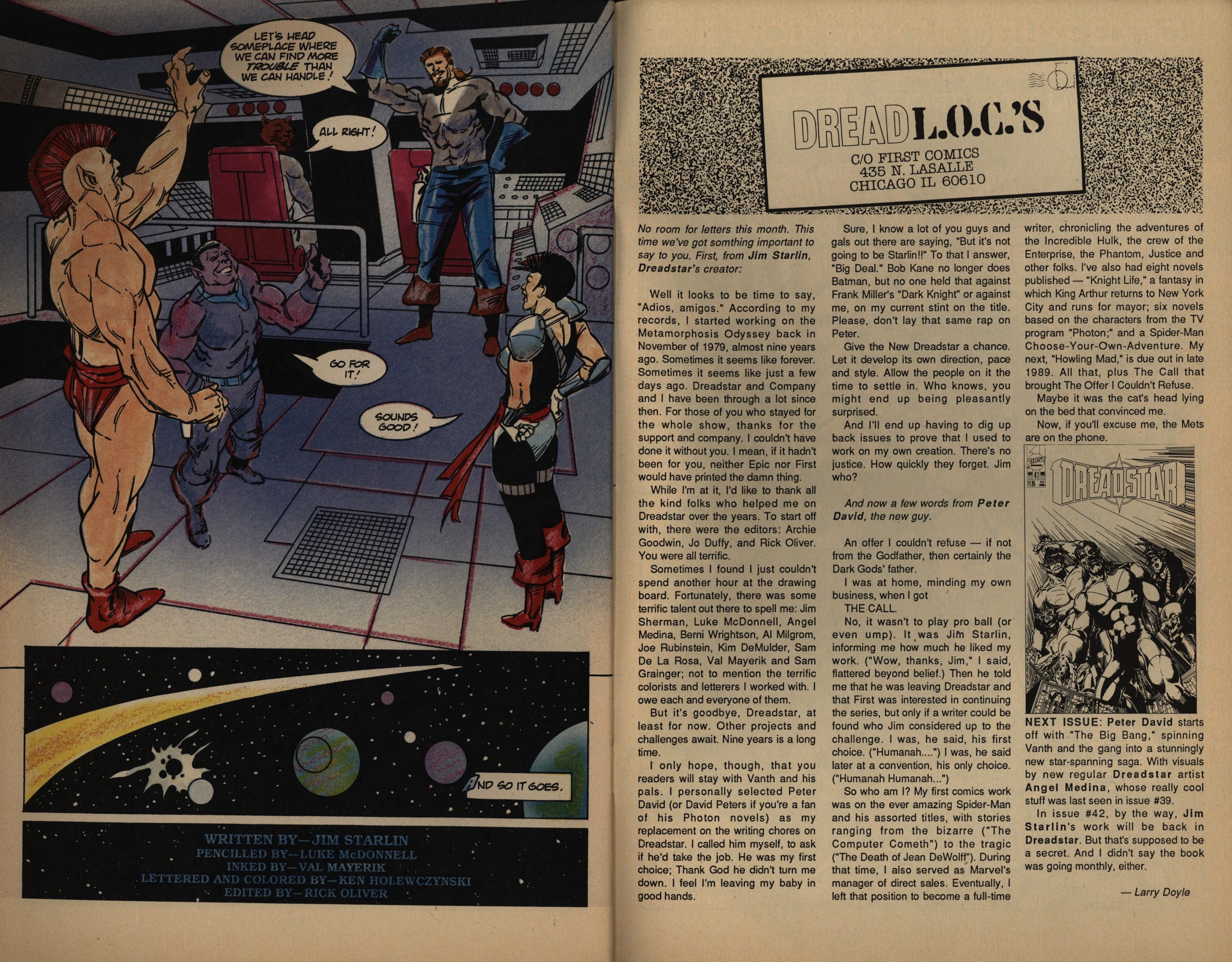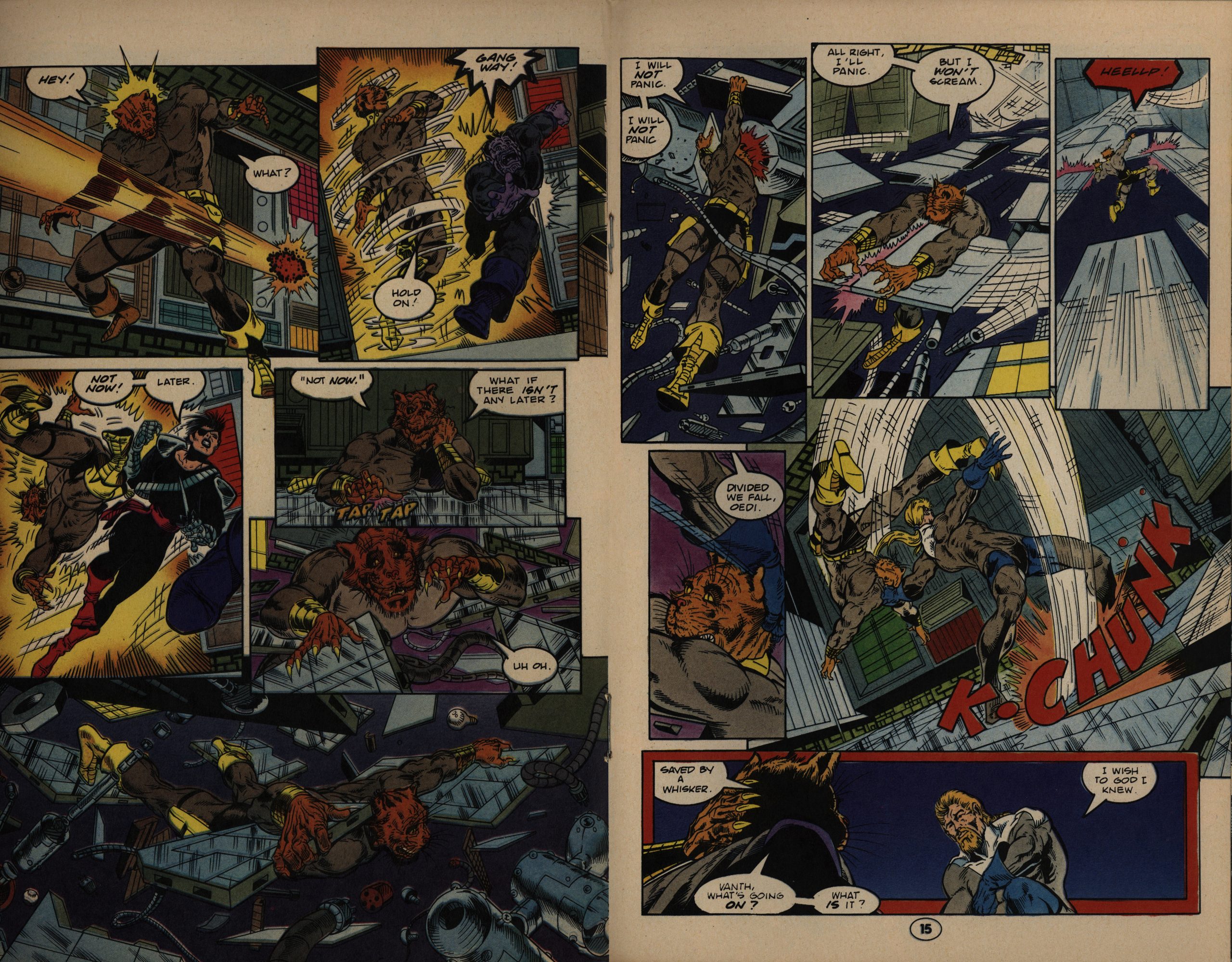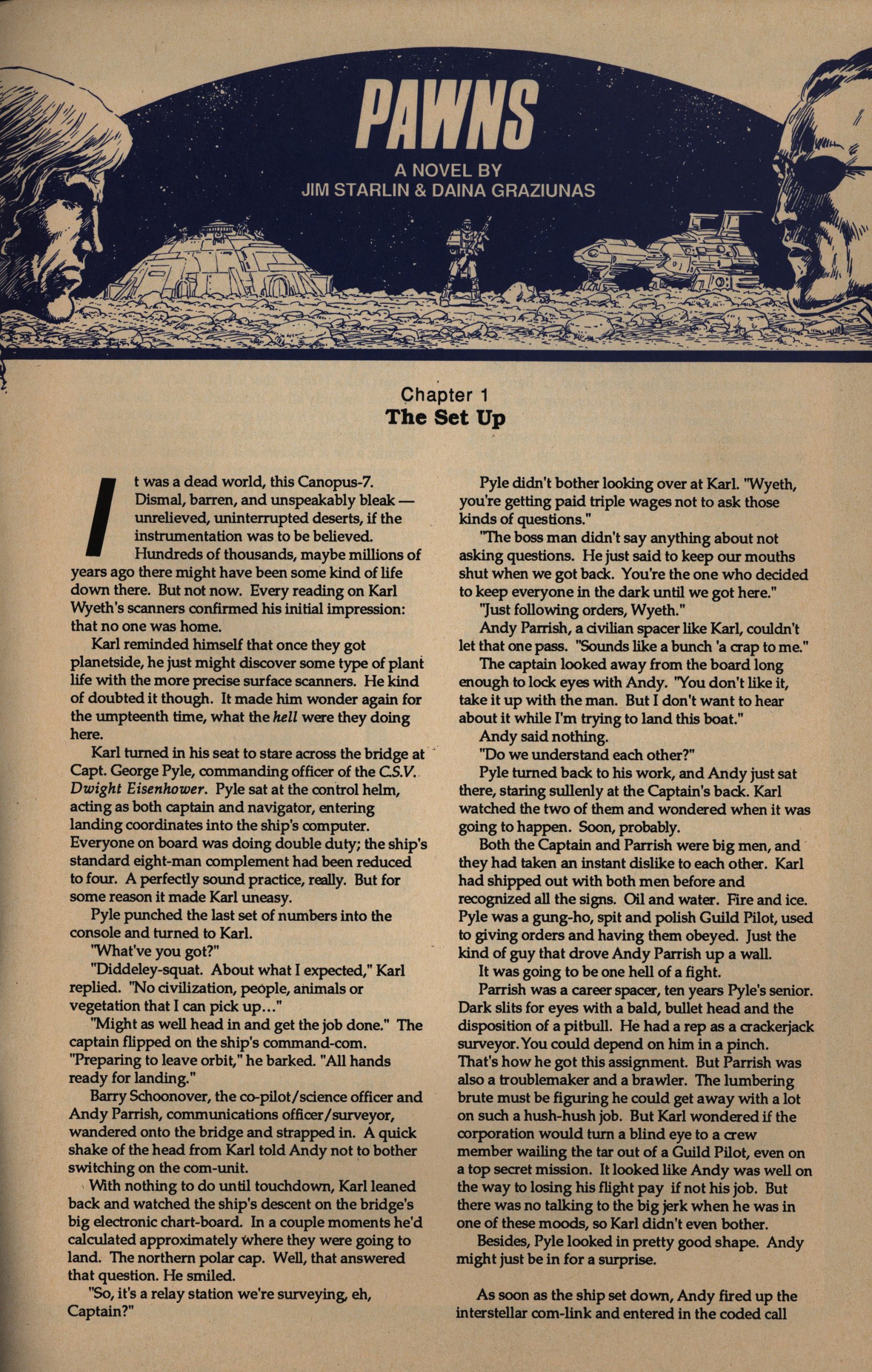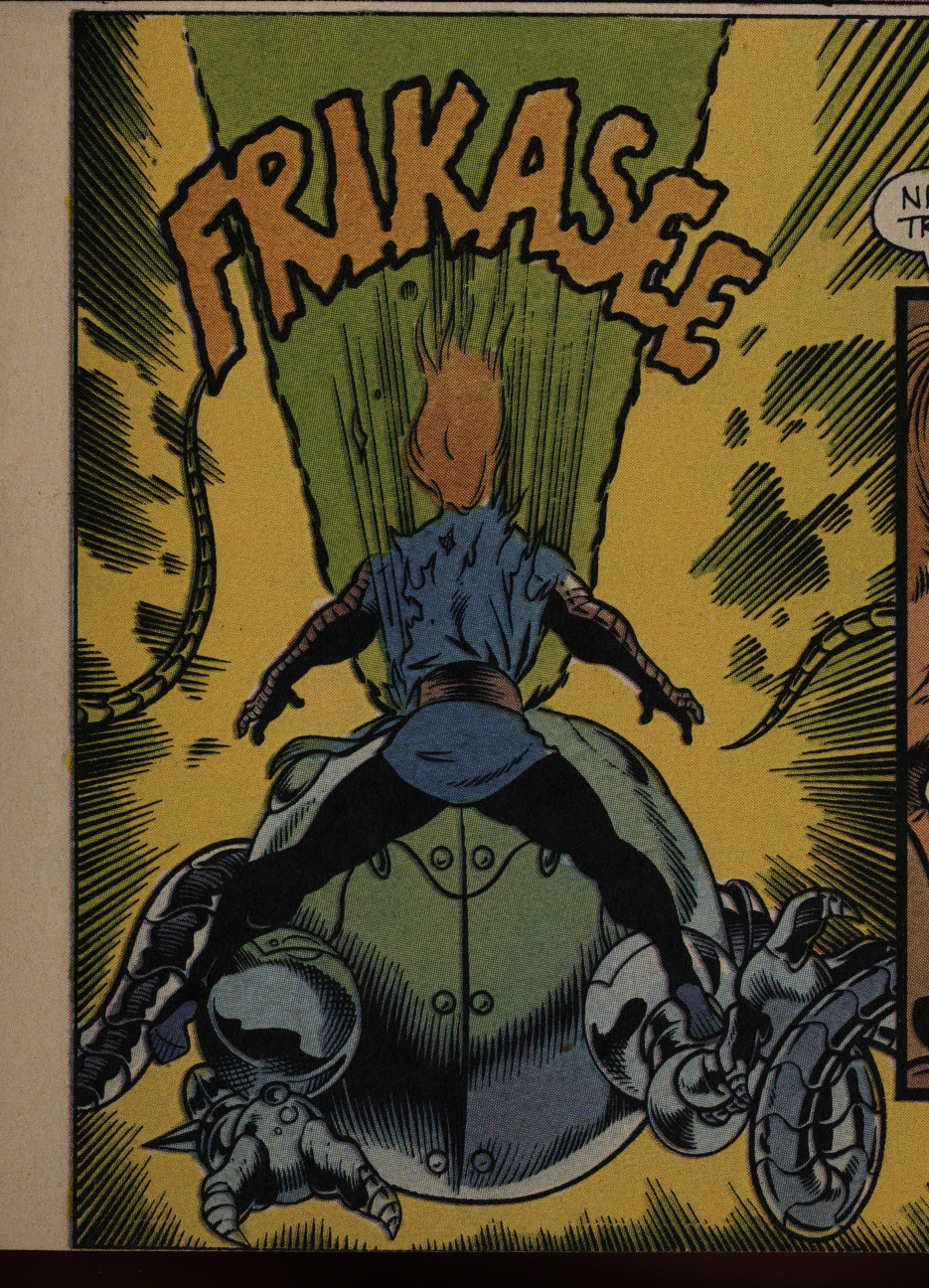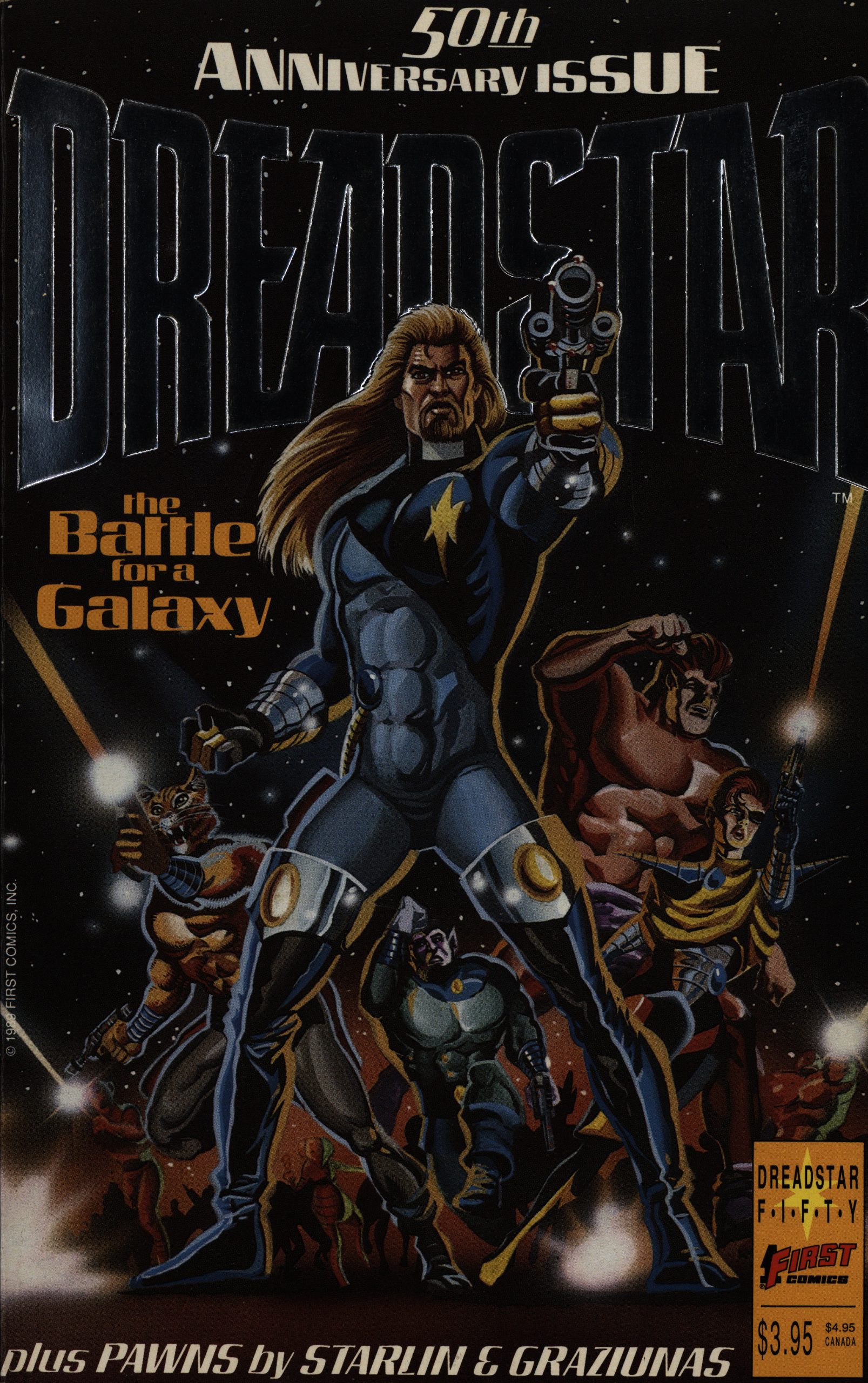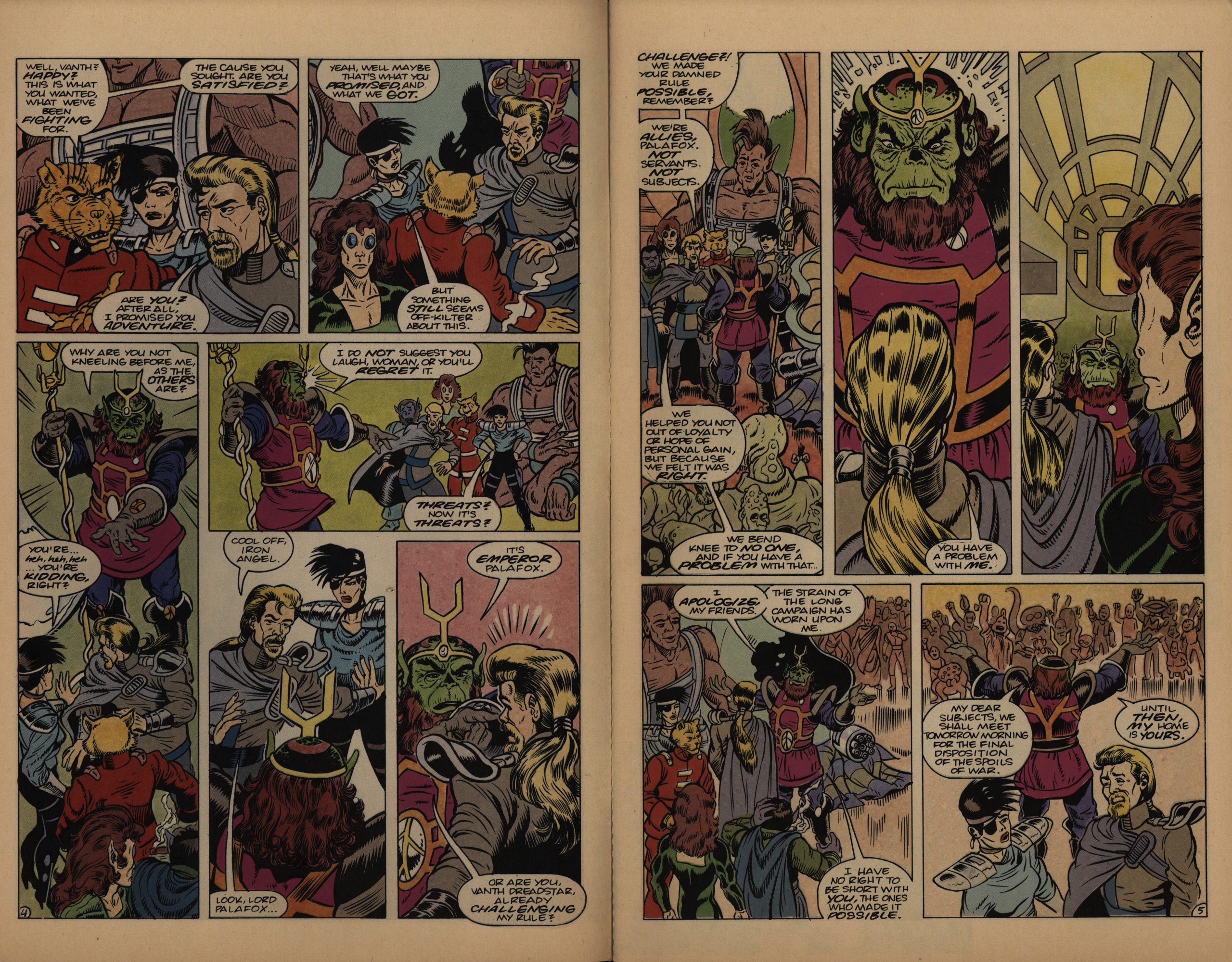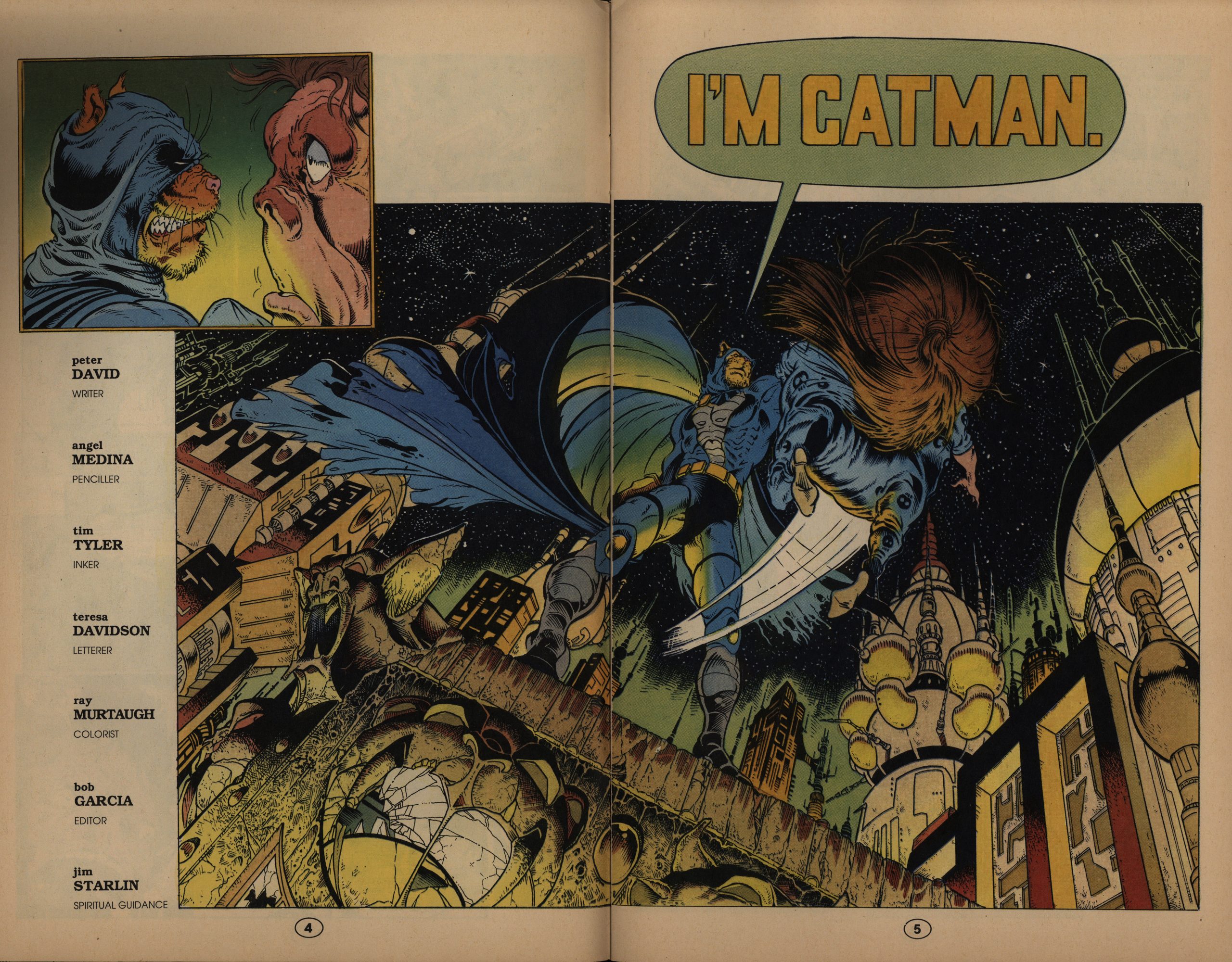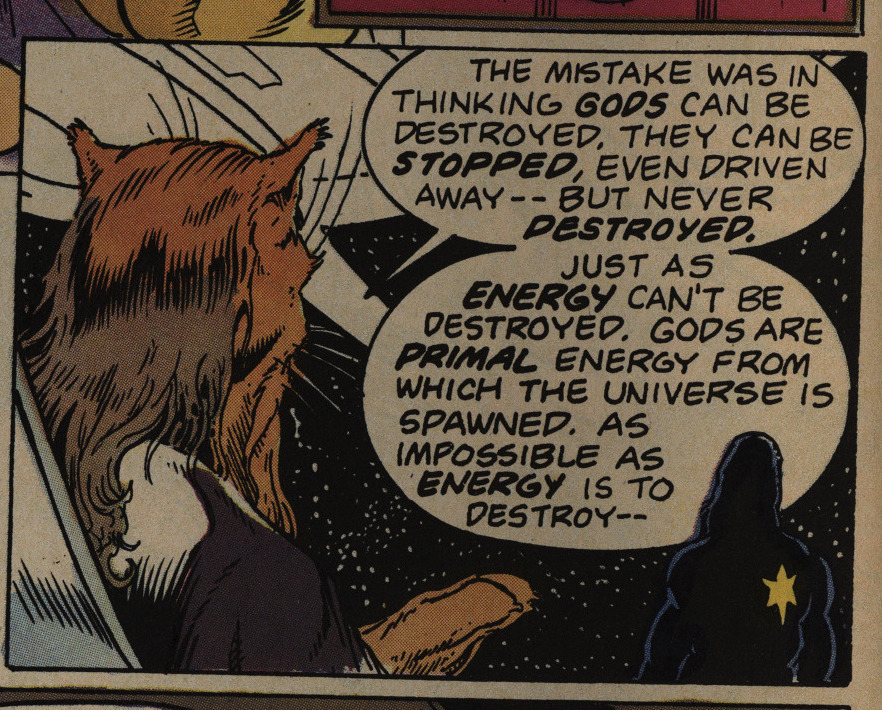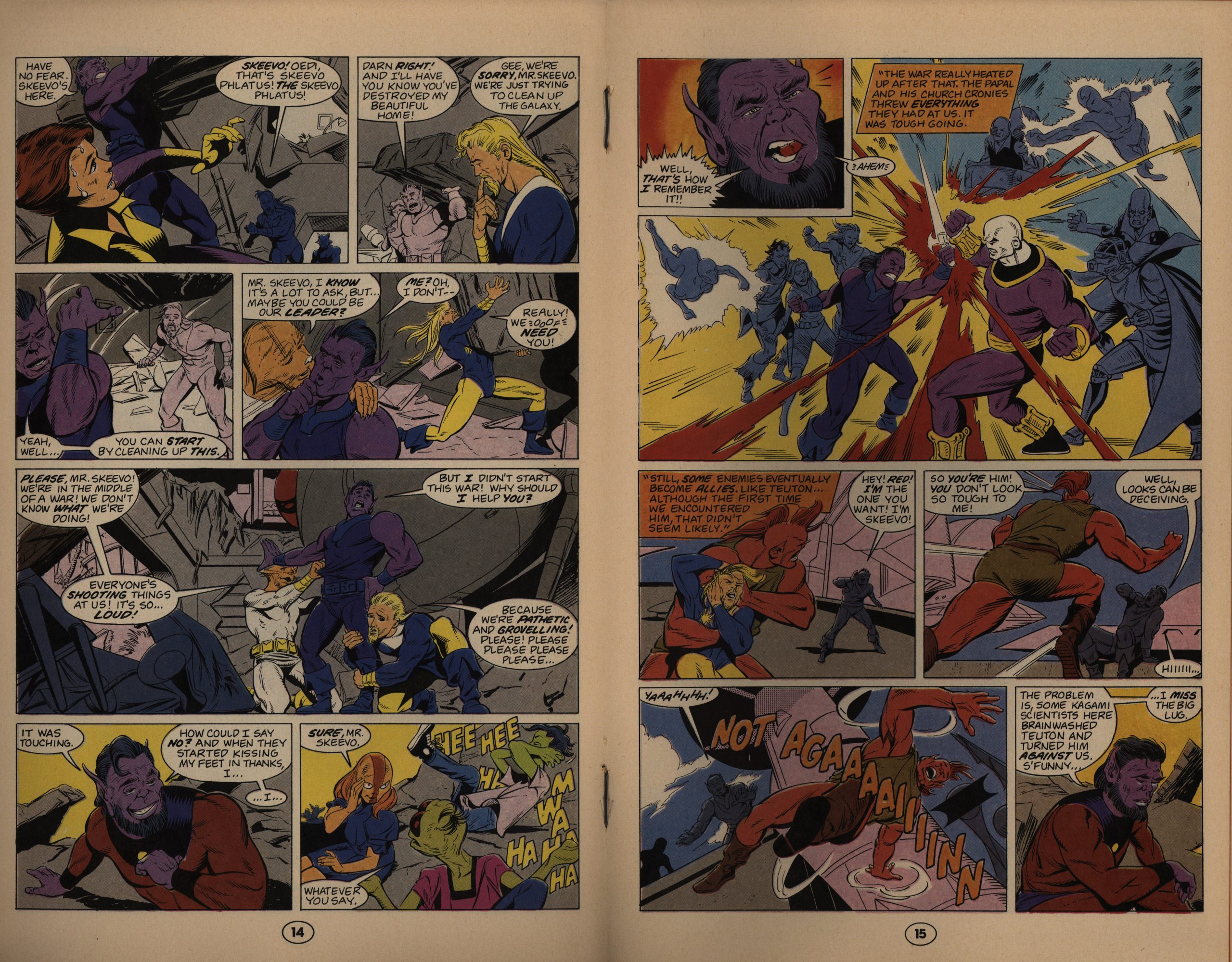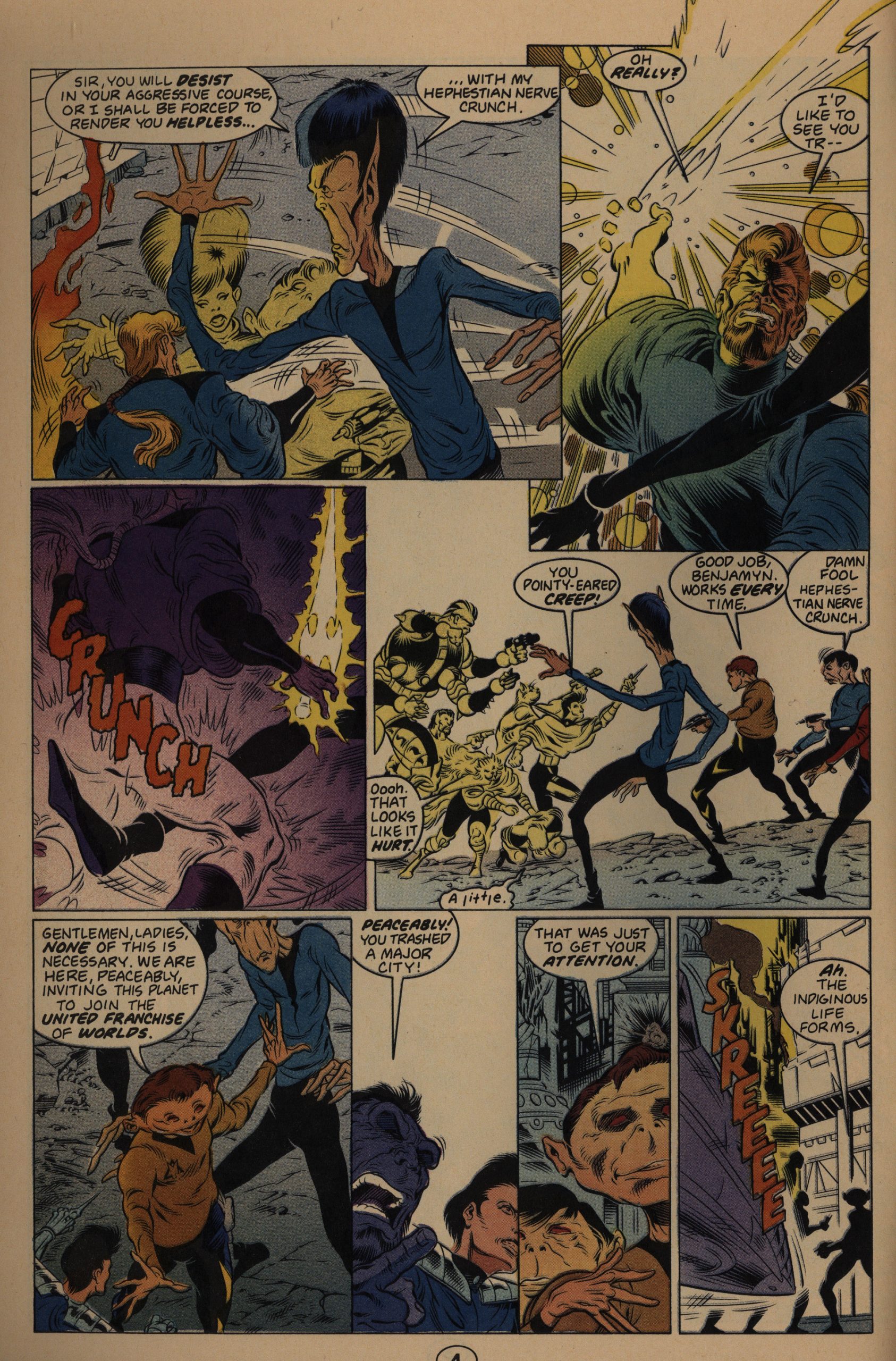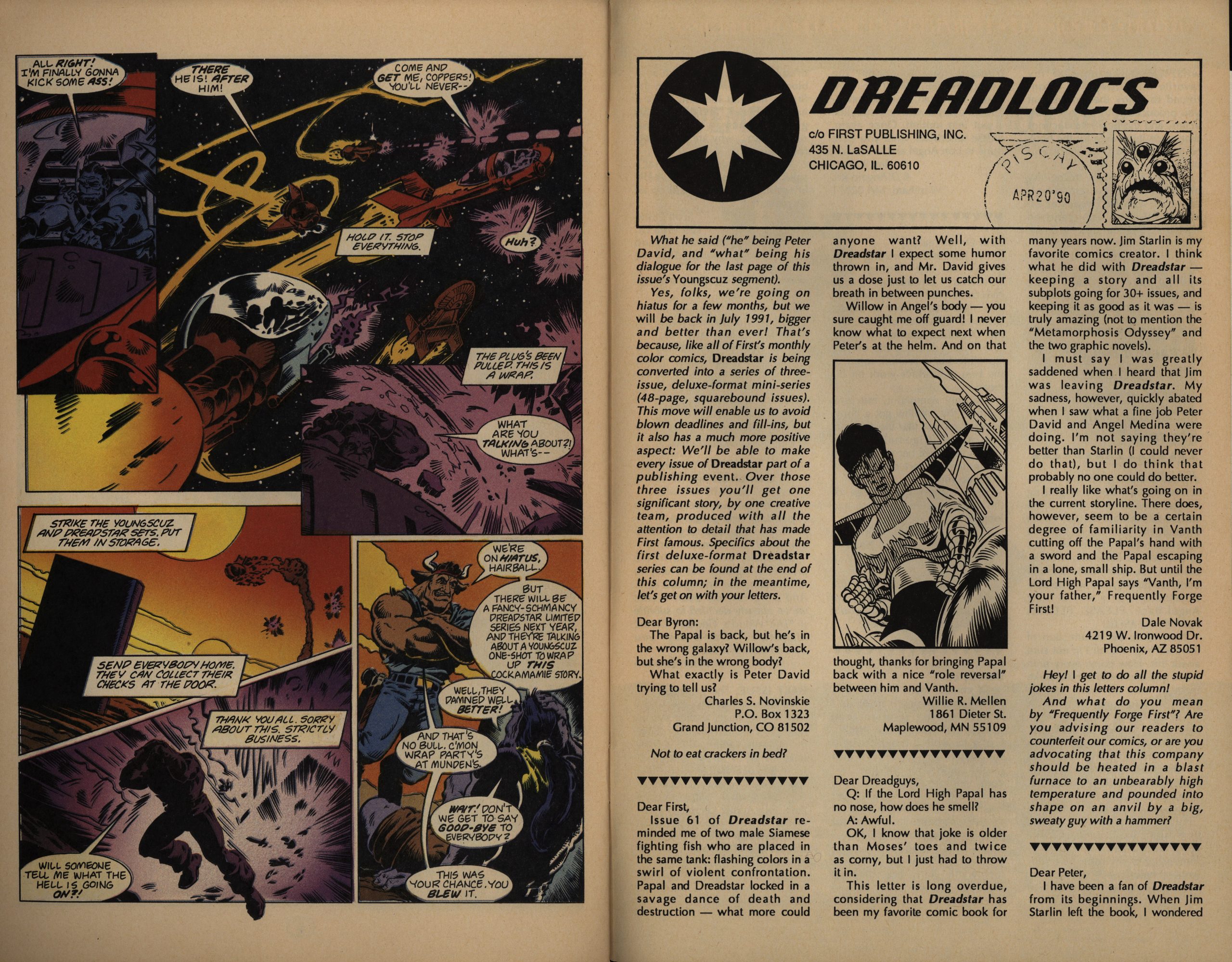Coyote (1983) #1-16
by Steve Englehart, Chas Trough and a lot of other people
Ah, Coyote. When I was thinking about doing this stupid blog series, re-reading Coyote was one of the attractions. Not because I was a rabid fan of the series as a teenager or anything — I stopped reading it after a handful of issues. But I remember really liking the artwork by Steve Leialoha and I remember it being a puzzling thing to read.
In the first issue, Englehart mentions his messy break-up with Marvel in the 70s, and that he’s back with Marvel (via Epic) because they’re now allowing him to do a creator-owned book.
Ah, yes, this is what I vaguely recalled the book being like: We drop into (supposed) retellings of various myths about Coyote (the god) whenever the plot vaguely touches upon, well, anything that allows the book to go that way. I have absolutely no idea whether any of these are real myths, or something that Englehart made up on the spot, but they’re pretty fun anyway. And I do so enjoy seeing Leialoha work in thos mode. I mean, look at Coyote’s face in the lower right panel there.
And it’s just so… charming. Leialoha’s characters can’t stop smiling, and the pages just flow so well.
Also charming is the way that Coyote (the guy, not the god) is always complimenting himself in his thoughts. It’s a very… buoyant book. It’s bubbly.
Huh. Apparently Jim Starlin (another guy who’d left Marvel in disgust in the 70s) was instrumental in bringing Englehart back into the fold.
Isn’t that a great wrap-around cover? And that logo is a lot better than the ones they stuck on the subsequent issues.
You kinda get the feeling that Englehart really felt at home in this book?
Englehart explains that he’s got a contract for six issues, but keeps the door open for making it into a continuing series. And Starlin pops by to write a bit about what’s what.
And then… half a year passes before the third issue. What happened!
Englehart explains that Leialoha just couldn’t crank out pages fast enough to keep Coyote on a bi-monthly (or semi-monthly, depending on your pendantries) schedule (he used five months on the first issue and two-and-a-half months on the second), so he’s left.
So we get veteran Butch Guice for one issue, and then newcomer Chas Troug for the rest of the series. Guice does a good job, but it isn’t really Coyote. And Epic was experimenting with laser scanning colours at the time, so the issue also has the distinction of being odd that way, too. They would revert to mechanical seps the next issue.
So what’s Chas Truog like, then? Well… he’s more… muscular? than Leialoha, that’s for sure, and his characters aren’t smiling as much.
Perhaps I should mention that the plot involves a secret organisation being led by a guy who has half his brain in another dimension, and then uses that space as an incubation space for crows to grow into mystical beings? Should I? I think I should.
There’s also a former prostitute who turns into a Christian preacher in Las Vegas.
Coyote also meets the ghost of James Dean in the desert and tries to emulate Wile E to catch the ghost.
Yes! The creators are having a lot of fun with this book, and it’s hard not to feel the energy coming off these pages.
Englehart takes criticisms of issue #3 to heart…
… but the complaints are that the storyline is just too complicated. “you still haven’t even told us what Coyote’s powers are yet!” I think somebody wandered in from the super-hero section of the comics store. But he has a point: The creators are demanding more of the readers than is normal in mainstream comics. Let’s just take a couple of pages and a scene at random:
OK, somebody steals a parking space from some guy we’ve not seen before, and then that guy apparently buy Tylenol from a drug store. But do you see that guy on the phone in that back that’s not being drawn attention to in any way?
Then the guy trancs the woman behind the counter, and then the guy on the phone turns out to be spying on the guy buying the Tylenol. And he’s talking to Tally, which means that that blond(e) guy is really Coyote who’s shape-shifted, and we get a probable flash-back to when he was told to follow that Russian around?
We’re not talking about Experimental Non-Narrative Comics here or anything, but when half the scenes are like this — paying attentions to little details all the time and making connections that are seldom spelled out outright — it’s not the breezy, over-explaining method of storytelling that people are used to. And this comes on top of the plots being genuinely super-loopy.
I like it a lot, but when you’re being slightly oblique like this, the reader has to be confident that it’s worth puzzling things out, or it just gets boring. As a teenager I apparently wasn’t bemused enough to keep reading (I think I stopped at issue six), but I am now.
Truog’s artwork was a bit rough in the beginning, and his faces are still pretty inconsistent. Not to mention… kinda… brutal? But I do love those crow panels.
But perhaps the schedule was getting to Truog, too, because Englehart starts running back-up features. The first one is The Djinn, with artwork by Steve Ditko, that was created for a different magazine at a different publisher, but neither is mentioned. Publishing it in Coyote makes sense logistically (it’s about a character that’s also in Coyote), but Ditko wasn’t exactly a fan favourite by this time, and reducing the page count for such a… full… series as Coyote means that things would get even more confusing for somebody reading this on a bi-monthly basis. For instance, in this issue, we only get 15 pages of Coyote, which doesn’t feel very fulfilling.
Hm… cat yronwode is namechecked, so was this originally going to run in an Eclipse Comics book? Nope: It was Fantasy Illustrated.
Leialoha’s inking over Ditko here doesn’t seem like a match made in heaven.
I love how open Englehart is about the publishing process. But I don’t like that he implies that he’ll try to make Coyote simpler to follow.
The Djinn thing picked up a bit, but never got as compelling as the main feature. Which was a problem with all the backups, really.
For four issues, the cover of Coyote said “Rated one of America’s best 8 comics”, which is pretty odd, and it’s all based on a review in The Comics Journal by Lee Wochner.
What the fuck is going on with Coyote’s face!? Perhaps not the ideal penciller/inker combination is my guess.
And that’s some garment design.
Englehart says that sales are up 30%! In “some stores around the country”… OK.
Art Nichols inks Ditko and suddenly everything looks like Kriegstein.
In issue ten, Englehart announces that Coyote ends with issue 16, but makes it sound like that it’s kinda sorta voluntary. In subsequent issues, he’s more open about this being a cancellation because of low sales, but it’s still kinda unique: I’ve never seen anybody announce a cancellation a full year before the final issue. If we’re lucky, we get a note in the final issue that that’s that. Either Epic was really trying to be super-fair to Englehart and letting the storyline play out, or perhaps it wasn’t haemorrhaging money, but just not making a sufficient amount for Englehart to put as much work into it?
Because he also announces that he’s taken on a shitload of work-for-hire comics.
As wikipedia summarises Coyote:
It was notable for the first published work of Todd McFarlane.
First of all: Ouch! Second of all: It’s really primitive McFarlane. I don’t think anybody could have picked out this out in a line-up as a McFarlane page. Still the issue goes for like $100 on ebay in high grades, which made this series among the more expensive to pick up.
And Eclipse finally published the collection of the first Coyote story. It sounded like Englehart was getting more and more annoyed at the tardiness of the publication, which is understandable. There’s so many references to what took place in that story in this series that having it on the stands would probably have helped some. (I wrote about it here.)
And this is McFarlane’s first published cover, and it looks a lot better than the interior pages he’s doing. Perhaps because he’s inking himself? Still, Coyote’s right leg there doesn’t quite… fit the rest of his body, does it? Oh, well, anatomy’s for losers.
But McFarlane’s artwork on the Scorpio Rose series does pick up. We even get a McFarlane trademark cape.
Englehart tries to adjust the intros to people who are fans of his current super-hero comics.
And a crossover with Mike Baron’s Badger, of all things. OK… I guess I can see it: It’s also pretty loopy.
Heh. McFarlane does a page layout never attempted before or since.
Coyote grows more and more cynical as the series progresses. Above we have a scene of a family man going to work. It never actually gets sour or anything, but it was somewhat more lighthearted at the start.
Heh heh. Always loves me some meta.
I wonder whether Englehart did the layouts, because both the main feature and the backups often have similarly intriguing layouts. Take the page above — you have to read it in a snakey fashion not seen since until Brian Chippendale started doing comics. This is the reading order:
And it reads that way perfectly naturally, due to the shapes of the panels and how the speech balloons are placed.
For the final issue, Englehart gives up on the recaps.
Reagan doesn’t actually appear in this issue, but both a clone and a shape-shifter looking like him does. It’s a very Coyote issue.
Amazingly enough, the creators manage to create a satisfying end to the saga. There’s plenty of loose threads (there’s so many plot strands going on), but it feels like a real end.
But Englehart announces that there will be at least a Coyote graphic novel from Marvel, but that never happened. It was never continued, but Image published a collected edition in 2005.
Reading this book was a lot of fun. The artwork was dicey here and there, but the sheer enthusiasm of the project is hard to not be charmed by.
I think it was something going around at the time: It seemed like comics had turned a corner, and you could do any slightly odd slightly off-kilter genre work. A lot of weird stuff was published during these first years of the direct market, and that hasn’t really happened since. The weird stuff has moved in a more non-genre direction, while the genre stuff is less… fun?
I mean, in general.
Let’s see what the press had to say about the series.
TH (Thom Heintjes?) writes in The Comics Journal #99, page 25:
Steve Englehart’s Epic series,
Coyote, will present the long-
delayed Badger and Coyote
cross-over in issue #14. The
cross-over will occur despite the
continuing lawsuit between First
Comics (which publishes The
Badger) and Marvel Comics.
Writer Englehart said he and
Badger writer Mike Baron had
formulated plans for the cross-
over while the Badger’s book
was being published by the now-
defunct Capital Comics, but
when that publisher folded up
its tent, Englehart “put the
plans on the back burner.”
However, when First picked up
the series, Englehart decided to
renew his plans. He said there
was some initial resistance from
First’s legal department, but
that they eventually relented,
allowing the cross-over to take
place. Englehart said Marvel
had had no problems with the
cross-over.
Englehart said the rights to
use the character were leased to
him by First for one dollar.
Additionally, Englehart said
that contrary to what Marvel
has publicized, no decision has
been made to cancel Coyote.
Right.
TH writes in The Comics Journal #95, page 22:
Coyote cancelled: Steve
Englehart’s Coyote series. has
been cancelled with the 16th
issue due to flagging sales.
Right.
Lee Wochner writes in The Comics Journal #89, page 66:
Well, I certainly see why they charge a
“buck and half’ for it. And I feel as similar-
ly underpowered as Englehart to explain
why. A briefexplanation would be that the
artwork is consistently excellent, be it by
Steve Leialoha or Butch Guice and Bob
Wiacek. A lengthy explanation would en-
tail going on about writer Steve Englehart,
the universe according to Steve Englehart
(this week’s version), and the people in this
universe according to Steve Englehart. It is
an exciting, outrageous but deadly unis
verse, full of magic and shape-shifters and
Israeli spies and Arab fanatics and shadow
quasi-military operatives and a man with
half his brain stuck in a different dimen-
sion, and it is a universe I’m glad I don’t live
in; as it is this is too close to the truth. Suf-
fice it to say that Englehart is a clever
writer, possibly the cleverest of the clever,
yet intelligent and sophisticated instead of
merely sly, and that Coyote may be the
most thought-provoking comic book now
being published. I wonder how many peo-
ple will start The Great American Novel
after Coyote gives them the idea.
An interview in Amazing Heroes #21, page 37:
ENGLEHART: The next phase of this is when
Jim Starlin put together his deal with Epic to do
the first Epic Comic, Dreadstar. He called me up
and asked me, would I like to do the second one? I
had made no secret of the fact that I thought
Marvel Comics was the scum of the earth and I
said, “You’ve got to be kidding.” But he said,
“No, really, the people who jacked us around in
’76 are no longer there. Mike Hobson, who is run-
ning the place these days, is a very straightforward
guy. A1 Miigrom will be the editor on the book.”
(He was supposed to be originally; Archie Good-
win ended up being the editor.) I didn’t know
Hobson, but I knew A1, I knew Archie, and I knew
Jim, and all these people were telling me that
things had changed. I was extremely cautious
about it. I had been burned once and didn’t want
to get burned twice; I really hung back, finally
went to New York last year and talked to all these
people and found that they were all exactly as
advertised. Mike Hobson is a wonderful person.
That probably sounds corny and I should amend it
immediately, but I don’t know what else to say. I
mean, he doesn’t play games, he just sits down
and negotiates in good faith, and if you get a good
deal, he honors the deal—a big change from the
way things used to be.
So I thought it would be a good idea and I talked
to Steve Leialoha and he thought it would be a
good idea after having done Spider-Woman all
those years. He sees his artwork as a way to set
himself challenges and accomplish them; he felt
that he had learned what he wanted to learn about
doing four-color super-hero comics, and was in-
terested in doing stuff more in line with things like
his “Greenberg the Vampire”—things he’d have a
chance to stretch out on.
Interview with McFarlane in Amazing Heroes #179, page 30:
McFARLANE: Yeah. After doing a
couple months on the back-up series
in Coyote, which I think was #11-14,
they phoned me up and told me the
book was canceled. But they assured
me that it had nothing to do with me!
[laughs].

